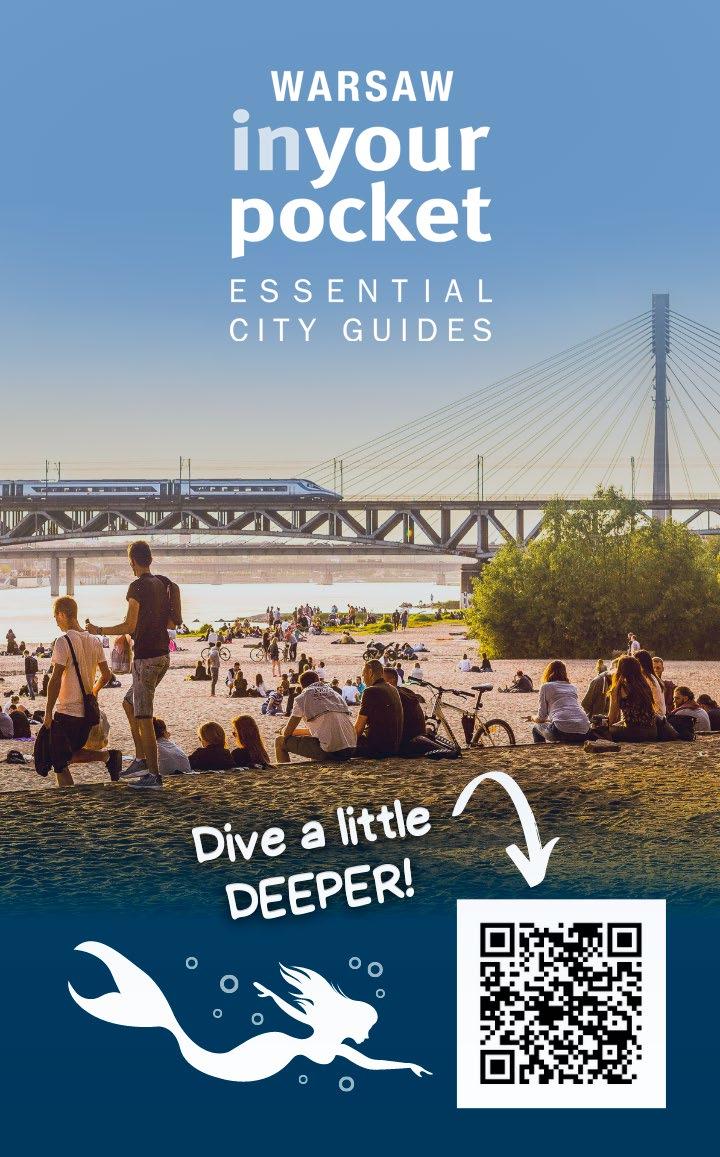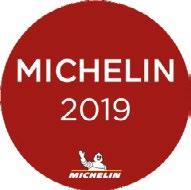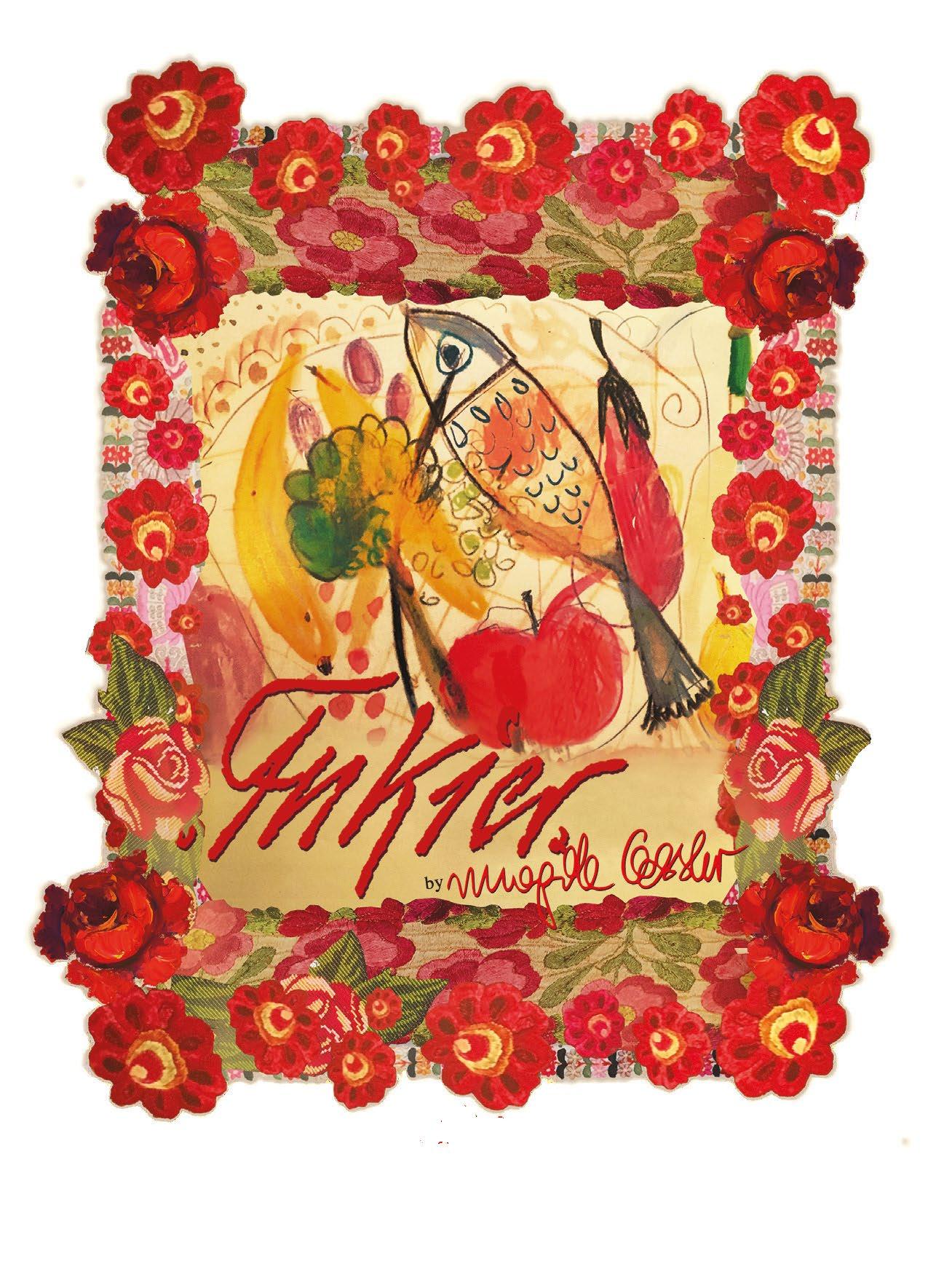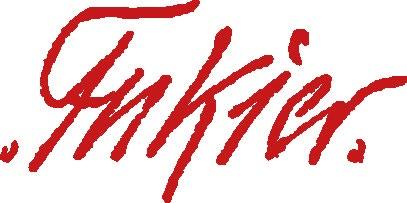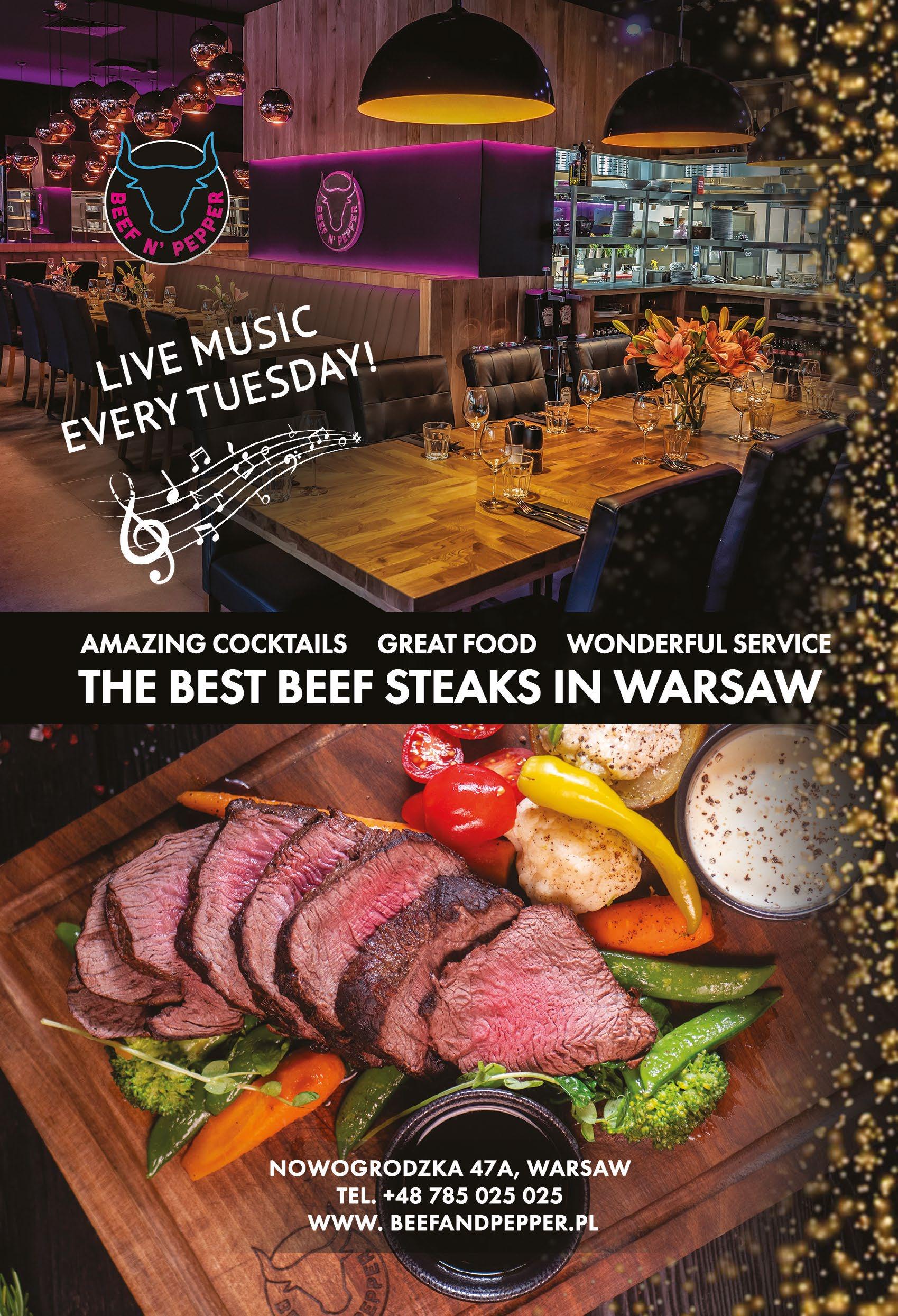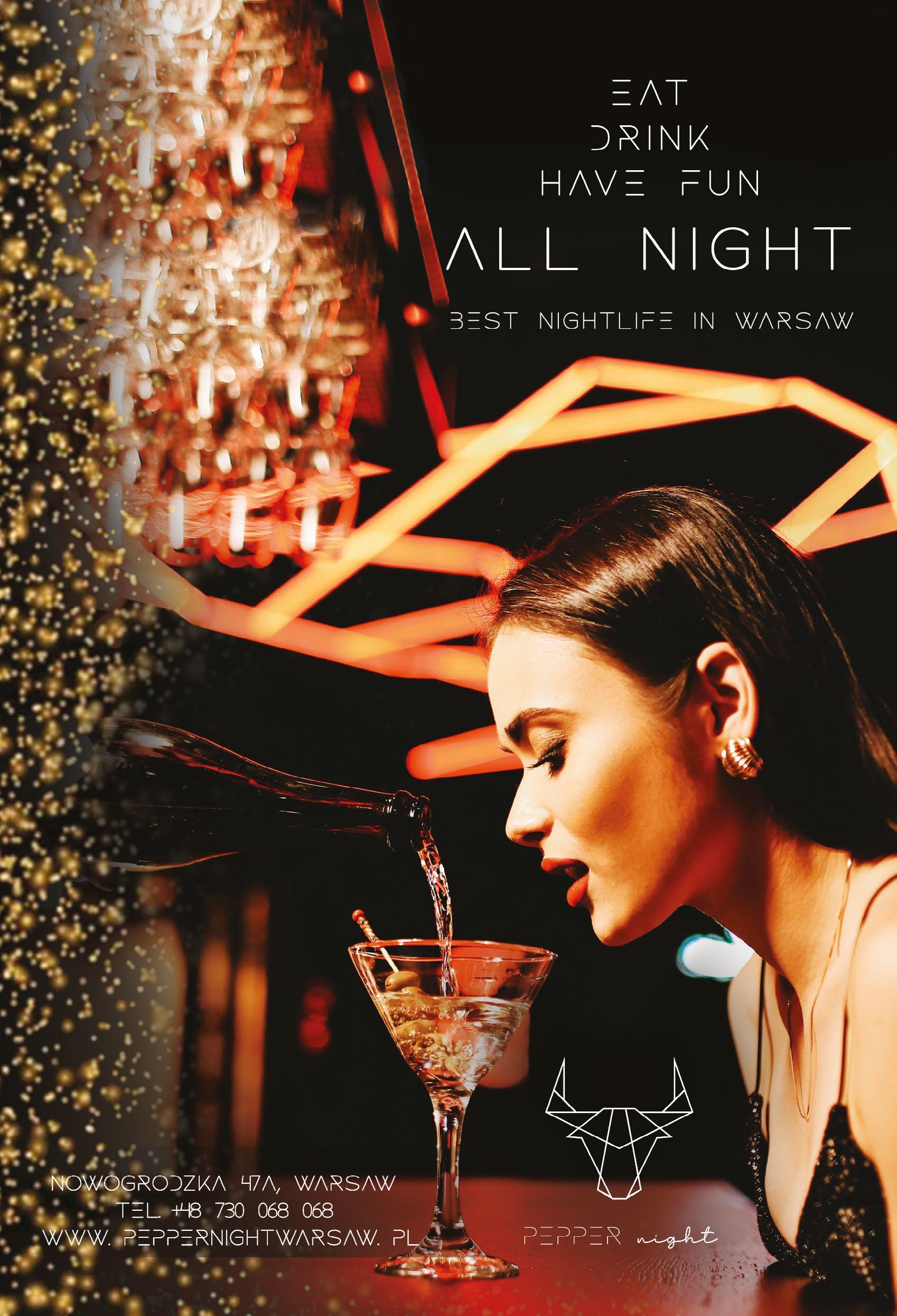












Located on the Vistula River at the very crossroads of Central Europe, Warsaw is the 8th most populous city in the European Union (1.7 million people) and a major cultural, political and economic hub.
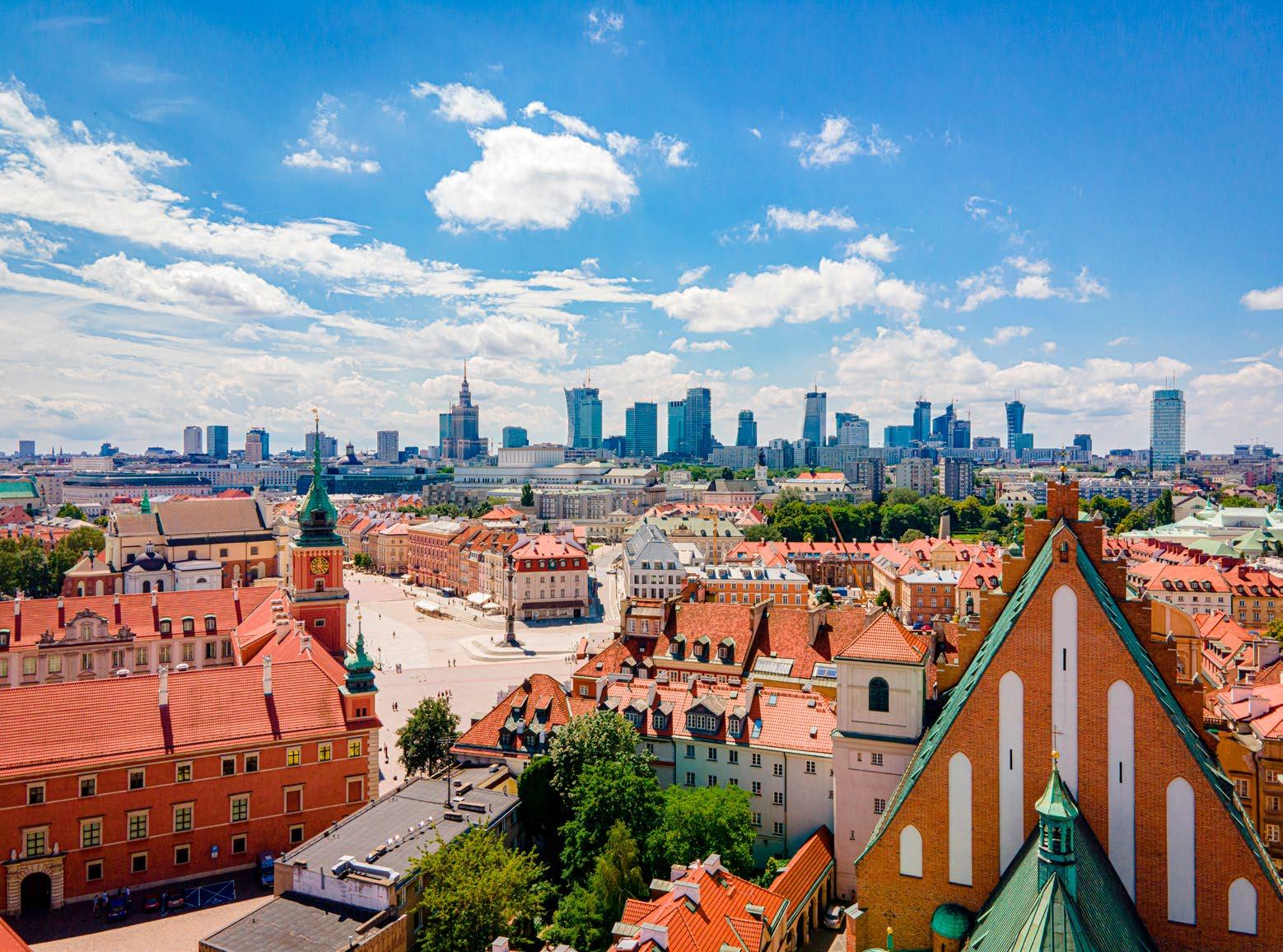
The city has had a troubled history ever since King Sigismund III Vasa moved his royal court from Kraków, making Warsaw the new Polish capital in 1569. Pillaged by the Swedes in the 17th century, and occupied by Russia for most of the 19th century, Poland was off the map for 123 years before returning in the aftermath of WWI. The interwar period signalled a golden age for Warsaw, as the city developed on par with other great European capitals.
WWII brought new suffering, however. Occupied by Nazi Germany, Warsaw saw its cultural monuments defiled or stolen, and its Jewish population of 350,000 systematically exterminated. With liberation in sight, the Polish population rose up against their German occupiers in August 1944, only for Soviet forces to look on as the Nazis brutally crushed the Uprising and destroyed the city in reprisal. When the fires were extinguished, 150,000 more civilians were dead and German occupation had merely been traded for Soviet oppression, as Poland was pinned under Moscow’s influence for the next four decades, during which Warsaw was rebuilt in communist fashion, earning a reputation as a charmless city of concrete.
But that was then, this is now. A compelling blend of East and West, past and future, today’s Warsaw is a modern metropolis of complex character and rich rewards for those who get to know it. Gone are the gloomy images of yesteryear as the city restlessly evolves, buzzing with energy and optimism. Whether you’re here to explore trendsetting urban culture or UNESCO treasures, world-class dining or luxury boutiques, you’ll hardly be disappointed by all the modern capital has to offer. Enjoy Warsaw!
Warsaw In Your Pocket is designed to provide you with all of the ideas, tools and information you need to explore the city on your own, stay offline as much as possible, and really connect with the city you’re visiting.
Over here at IYP we still believe that the best way to understand the space you’re in is with a map, and the most immersive way to explore it is on foot. As such, our Sightseeing chapter is organised into geographic areas of interest with detailed district maps to help you navigate them. Selfguided district tours include descriptions of all the most important sites, plus local tips on where to eat and drink in each area. There are also intriguing ‘Crossroads’ moments that allow you to be lured towards alternative adventures, either on foot or via public transport.
Throughout the guide, page references are liberally used to lead you to related info on a topic elsewhere in the guide, while QR codes will take you to our website when we feel there’s more to know than can be expressed in print. Each venue listing includes a map coordinate (E-8, for example) that correlates to the city map on p.2-3. If there’s a specific venue you’re searching for, use the Venue Index in the back of the guide to quickly find it, or simply follow our informed suggestions.
The rooftops of Warsaw Old Town (p.32). The city’s historic centre was 85% destroyed during WWII. After restoration, it became a UNESCO World Heritage Site in 1980.
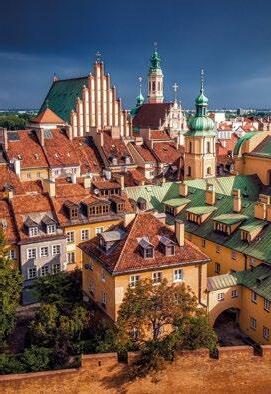
Publisher & Staff
IYP City Guides Sp. z o.o. Sp.k. ul. Karmelicka 46/51, 31-128 Kraków
iyp.com.pl
poland@inyourpocket.com
Circulation 12,000 copies published every 2 months
Of course, space in our print guide is a finite resource, but if you don’t find what you’re searching for here, we’re confident you’ll find it on our website. Visit warsaw.inyourpocket.com for more info about the capital, and poland.inyourpocket.com to see just how much of the country we cover.
Here is some extra content we wish we had room for in print this issue:

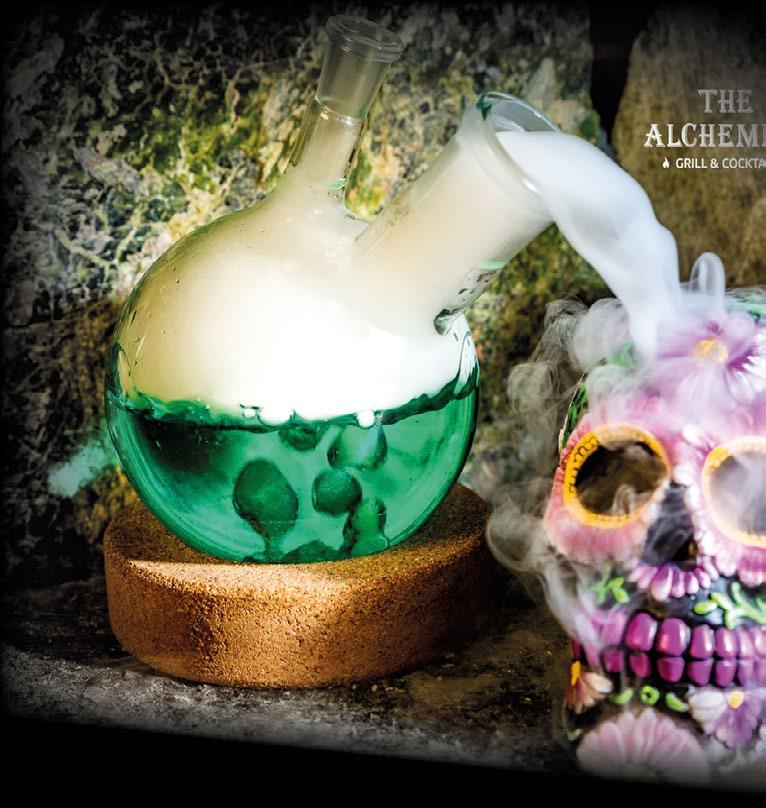
Warsaw
Read through our entire guide, done it all and still looking for more? Of course not, but the surrounding region still offers many sites worth exploring, from national parks to spa towns.

Summer arrives, International Children’s Day descends, Corpus Christi (Boze Cialo) gives us a holiday, and strawberries come into season! WATCH OUR VIDEO to learn more!
Better known as Marie Curie, the world’s most famous female scientist was also Polish, and grew up in the Polish capital. WATCH OUR VIDEO for more!
Editor: Pierre Duyker; Editor in chief: Garrett Van Reed
Sales Consultant: Jarek Śliwiński (+48) 606 749 643
Events & Marketing: Monika Boguszewska-Stopka (+48) 728 879 494


Research: Anna Janus
Layout & Maps: Tomáš Haman
Copyright Notice
All content copyright IYP City Guides Sp. z o.o Sp.k. and its partners, unless otherwise stated. No part of this publication may be reproduced without written consent from the publisher. The brand name In Your Pocket is used under licence from UAB In Your Pocket (Bernardinu 9-4, Vilnius, LT, tel. (+370-5) 212 29 76).

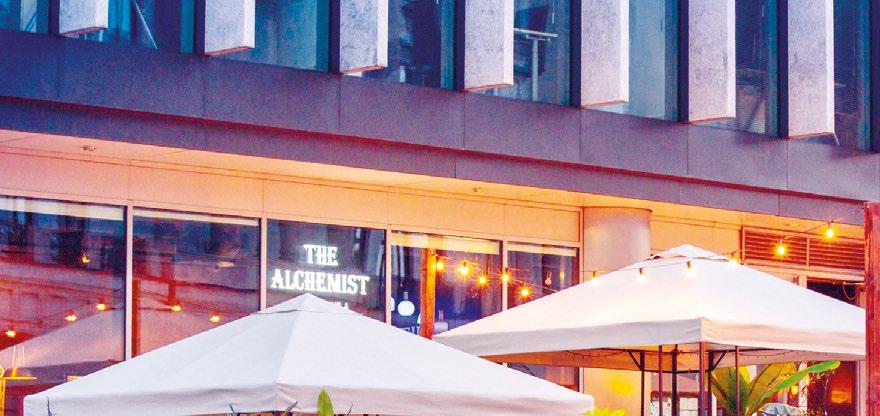



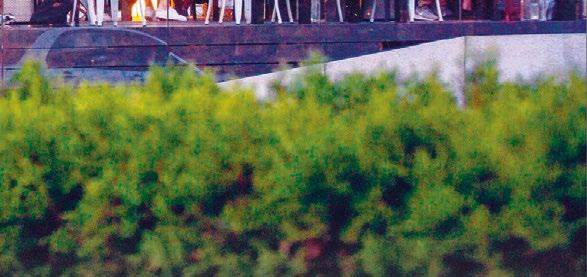



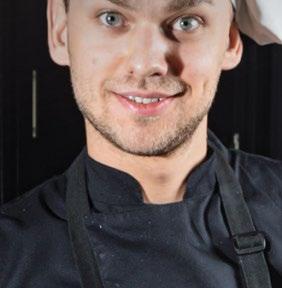
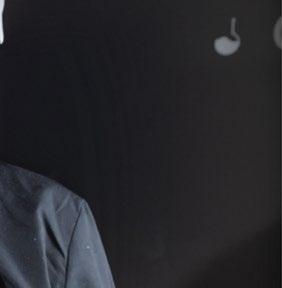
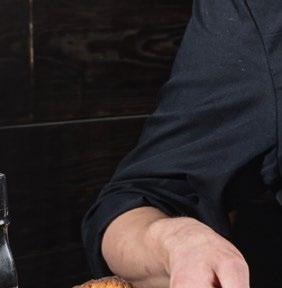
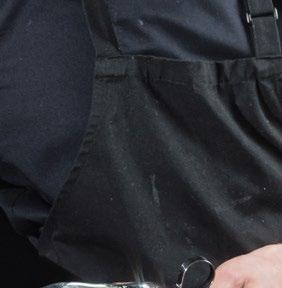
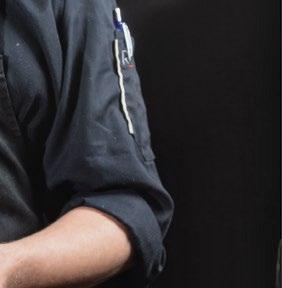
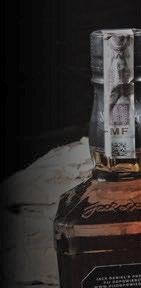
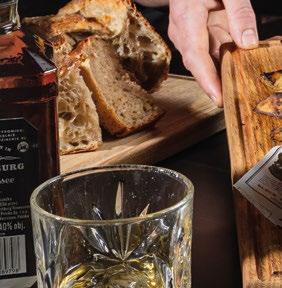

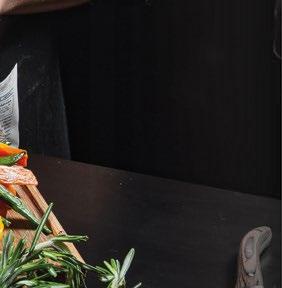
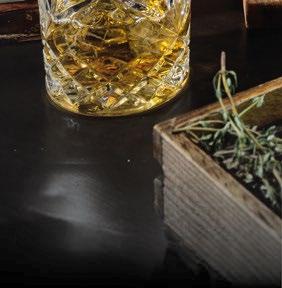
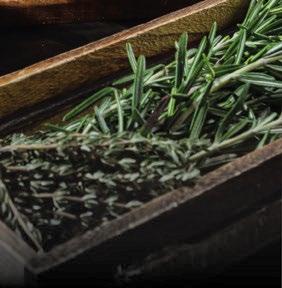
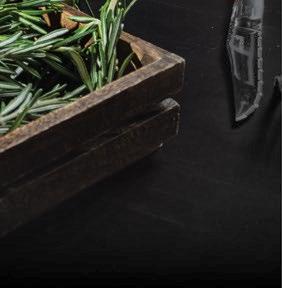

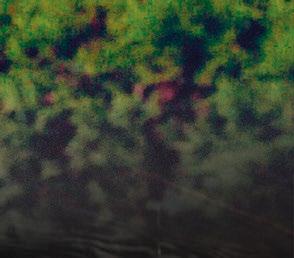



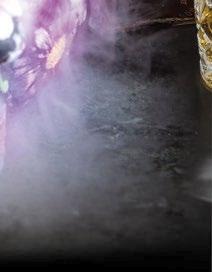


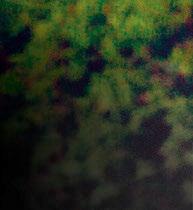



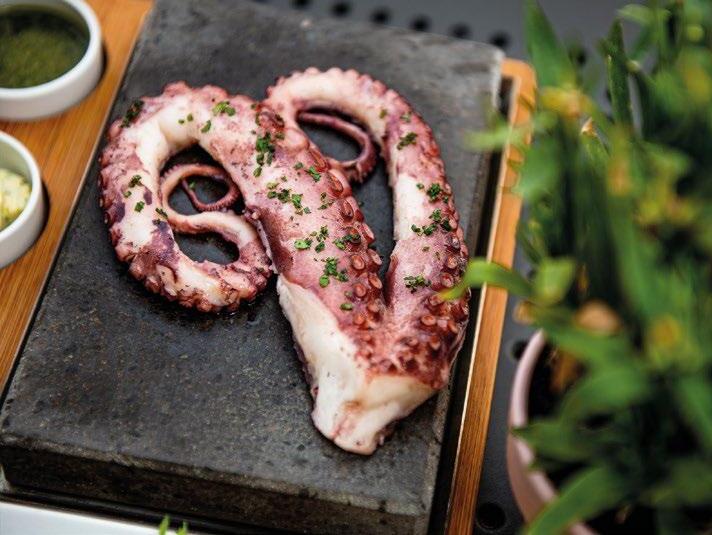

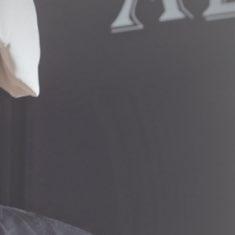


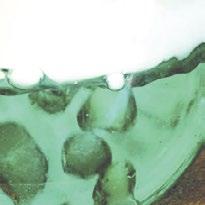
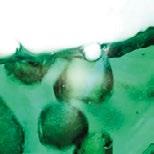
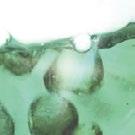




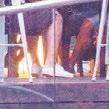





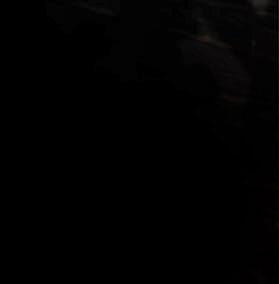










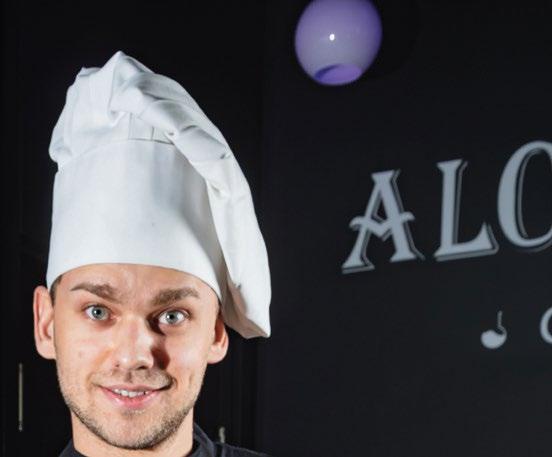
As Warsaw’s latest post-industrial revitalisation project, the former 19th-century metal fabrication plant of Fabryka Norblina (Norblin Factory) is now a massive and thriving gastro, culture and entertainment hub. Like many of its contemporaries, this complex has a lot to show off - huge office spaces, retail stores, restaurants, cafes, bars, an ecobazaar, and a number of museums. What sets Fabryka Norblina apart, however, is a rich offer of interactive spaces with its younger guests kept closely in mind!
Smart Kids Planet (p.73) is a 1,600 sqm interactive space, where children venture into a world of limitless imagination, not to mention filling some pretty big shoes as part of its activities – as explorers, adventurers, athletes and scientists. Altogether, 50 inspiring attractions in 9 different zones (such as ecology, sports, ecology, construction, technology to name a few) can be found within a whopping 1,600 sqm of rec space. There is a constructive element to all the fun, however. Smart Kids Planet is designed to develop future competences, learn cooperation, discover the latest technologies, as well as develop green and ecological habits, and all without participants realising! This is a prime example of ‘learning through play’, where your child’s creative thinking and hunger for knowledge will be awakened through active fun. Experiencing Smart Kids Planet isn’t limited to individual guests - this centre invites kindergarten and early-school classes to visit, as the activities are curriculum-compliant and can teach in a way that a schoolbook just can’t.
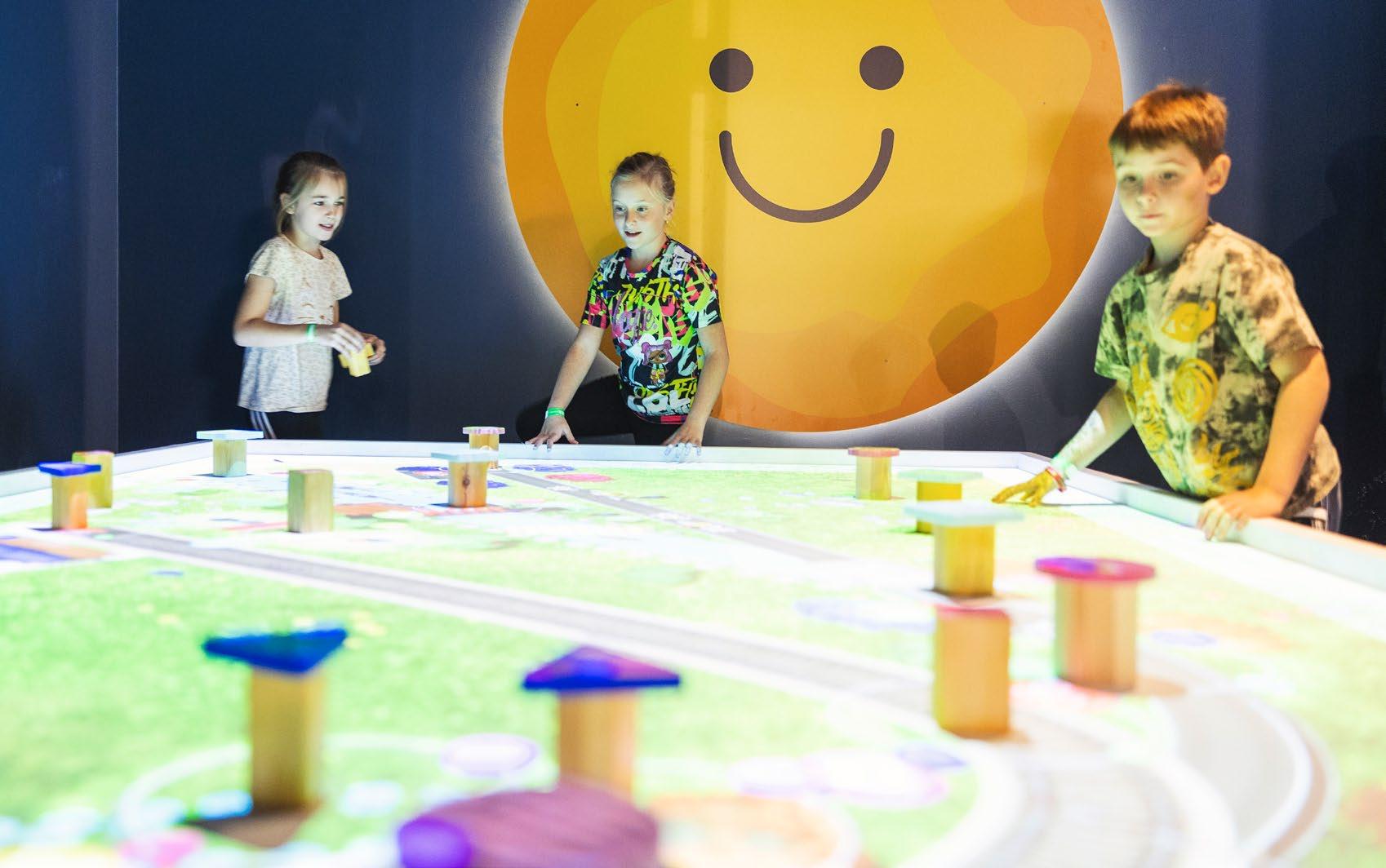
Why take the stairs when you can slide down? The complex’s sliding tube is 13m long and 5.5m high, running from the Plater building on level 0 and down to -1. And guess what? Big kids AKA parents can slide too! Of course, you can also take panoramic lift. Elsewhere you can hop on a beautiful, French-style carousel, hand painted with safari motifs. No matter the generation, the thrill will always remain the same!
The Art Box Experience immerses visitors in the world of immpressionist art, with a pioneering 360-degree projection system creating a visual realm from the wondrous paintings of Claude Monet and other contemporaries. This fabulous installation also offers a rich and varied educational programme tailored for children and young students. Currently, on Mondays and Tuesdays, school groups can be immersed in a special exhibition - ‘Save the
Planet’, which not only educates on the importance of ecology, but mesmerises children on an epic journey to the farthest corners of our planet - inside volcanoes, at the bottom of the ocean, way out in the cosmos, as well as getting up close and personal with wild animals!
21st-century kids are more tech-savvy than any generation before them, so a visit to the Apple Museum (p.62) will surely blow their minds! Presenting the history of the American tech giant and its develop-ment of its technology over the last 40+ years, you can browse a collection of over 1,700 exhibits, with old Apple computers (There’s a replica of the first ever Apple-1 computer from 1976), the Macintosh product line, various software, hardware, multimedia, and even a few prototypes that never made it to the market. Parents may find it shocking that even iPods and iPhones will be on display –yes, you are that old! The whole thing is interactive displays, audio-visual communication, and a sleek, modern design.
The Norblin Factory Museum has more traditional exhibits, though their display and presentation are much less ‘traditional’. An open space comprising 10 historical buildings and 50 old machines and devices, the factory’s story has you transported back to the mid-18th century and then allows you to take your own unique journey forward to the 21st century. This is done through a brilliant piece of tour layout planning, where visitors have to locate exhibits and tread their own path. This, as well as the animated
tours with the ‘owner’ of the factory, who is dressed in a historical outfit, are both great experiences for young visitors.
KinoGram is hardly your typical movie experience. This boutique, golden-age-looking cinema, like something out of the 1920s, is complete with luxury seating, a whole range of beverage options for young and old, a menu that goes well beyond popcorn, and, of course, all the latest movies! Arranged specifically for the kids, however, is a wide selection of cartoons that screens specially on weekend mornings. Oh, and you can bring your dog too! How awesome is that?!
With such a rich offer for children, it should come as no surprise that International Children’s Day will be celebrated at Fabryka Norblina with great fanfare! On June 3-4, Smart Kids Planet will host ‘Kids’ Weekend’ - From 12:00 to 17:00, a number of attractions, including concerts, animations and plays, will be hosted. Kids can get their faces painted, or even get a temporary glitter tattoo. There’ll be slime-making workshops, where you can pick your own unique colour and scent! There’s a bunch of cool arts and crafts things, like designing and making your own eco bag, and design your own air-powered hovercraft with old CDs! There’ll also be different trivia games, puzzles, and tests from the Norblin Factory Museum, as well as carrying out experiments (including some explosive ones!) with dry ice and bubbles of all sorts. A concert will also take place, with songs from your favourite cartoons, and even an appearance by Princess Elsa from Frozen!QC/D-8, ul. Żelazna 51/53, MRondo Daszyńskiego, www.fabrykanorblina.pl. TE6

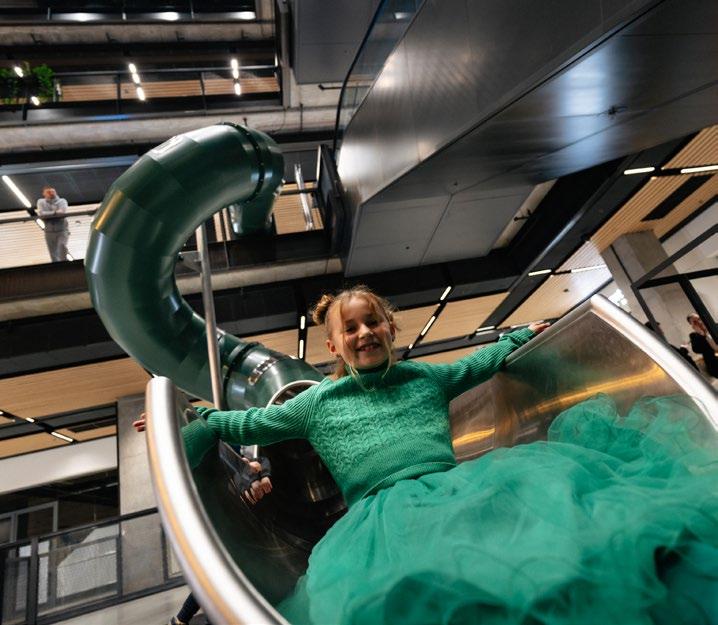
When the weather’s warm in Warsaw, the entire city gravitates towards the water. That means the Vistula River - the long banks of which comprise the city’s unofficial ‘19th district’ and provide a bounty of places to relax and explore, including sandy beaches, green forests, sports clubs, cycling paths, and dozens of restaurants, bars and nightclubs.
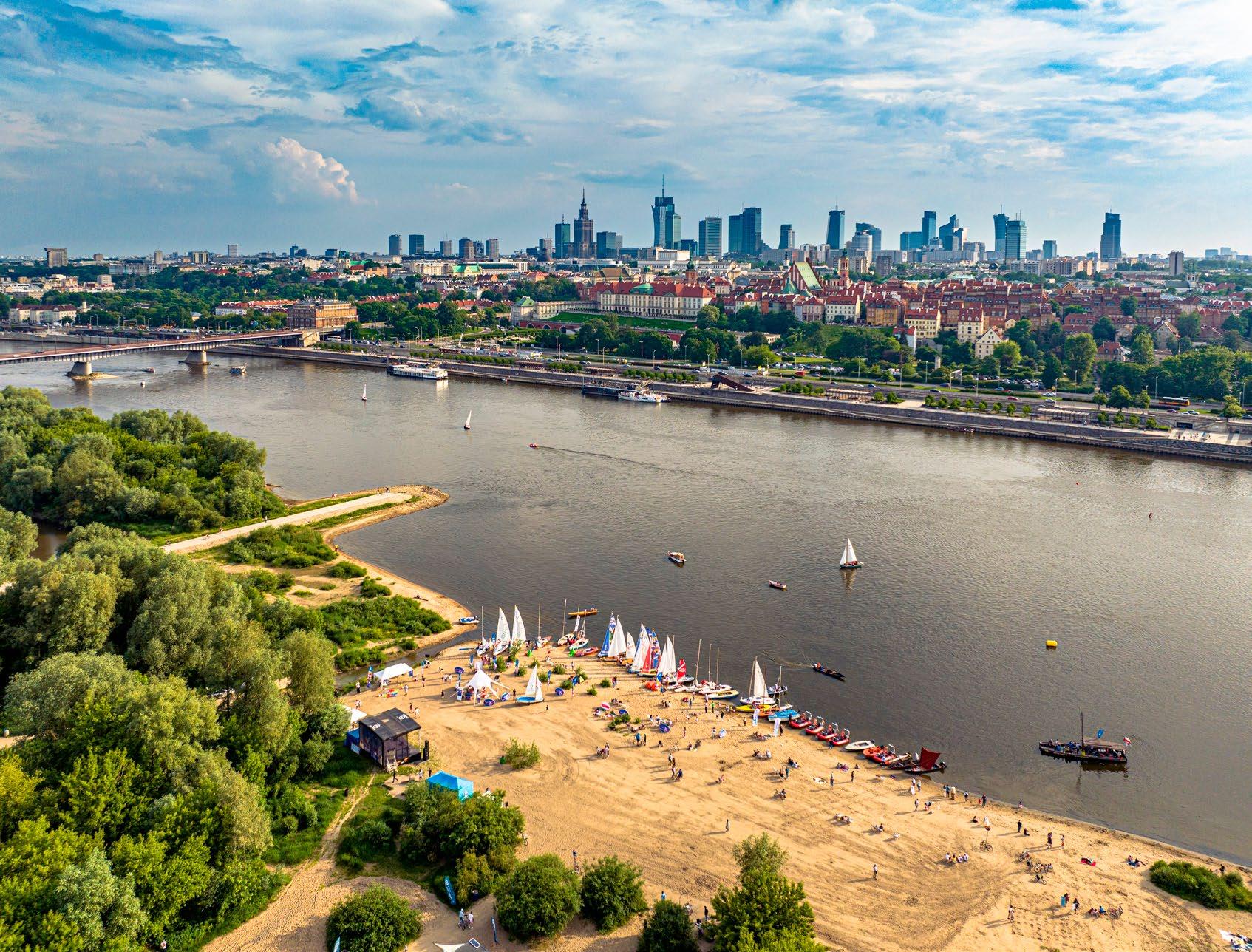
Perhaps the most characteristic thing about Warsaw’s riverside is the striking dichotomy between its left and right banks. While the left bank is more sanitised, developed and urbane, the right bank has been left largely untouched and resembles a wooded nature preserve. The best way to explore the full breadth of Warsaw’s waterfront is by getting on a bicycle (see p.19) and using the city’s many lovely riverside cycling paths and bridges. You can also take advantage of the city’s free ferry service, which provides a more scenic way to get across the river. Both sides have plenty to offer in terms of relaxation, exercise and entertainment, and here we list the highlights. Whether you’re looking for an escape from the noise and crowds of the capital, or the most happening party in town - you’ll find it on the riverside!
Alcohol: When it comes to drinking in public, the river is your friend. Basically you can consume your own alcohol anywhere along the river without fear of a fine, just please clean up after yourself.
Swimming: Although the temptation is ever present, we don’t recommend getting in the water. It is neither safe, nor sanitary. If you want to actually get wet, seek out a public pool!
Fires & Grills: Most beaches in Warsaw have designated grill areas, so if you want to build a fire, go for it, just keep it contained to the designated places, please.


The main gateway to the river for most Varsovians is the M2 Metro stop ‘Centrum Nauki Kopernik,’ which deposits you right on the water (I-6). Bulwary Wiślane (The Vistula Boulevards) is full of notable sightseeing points and cultural institutions (read about those on p.44), the areas between are recreational spaces and beach front, that are a pleasure to spend time in. Additionally, there’s no shortage of cafes, bars, restaurants, ice cream stands, food trucks and river barges where you can find great food and refreshments. In the evening, check out Przystań Nowa Fala - a popular two-level riverbarge with food, drinks and DJ parties parked right in front of the museum (H-5). Similarly, just south of the Metro, BarKa is another popular barge that hosts gigs and guest DJs and is regularly mobbed with partiers, creating an entire scene in its extended orbit on that part of the riverbank (I-6).
About 2km south of Copernicus Science Centre you’ll find this small left-bank beach near Śmigłego-Rydza Park. This area feels like a mini summer festival, with two bars on each flank - Pomost 511 and Grunt i Wodaconsiderably less pretentious compared to what is further north. By day, chill out on the sand, have a grill, hit up the food trucks, rent a kayak or catch the ferry over to Saska Kępa. Grunt i Woda has a particularly family-friendly vibe during the day and often organises activities for kids. In the evenings, the crowds (and mosquitos) start to pick up, and concerts, films and theatre shows are common, as are silent discos and barefoot dance parties on the sand as DJs do their thing.QK-8.
Just south of the beach at Płyta Desantu is the entrance to Port Czerniakowski, which provides a sheltering harbour and marina, and a cycling/pedestrian bridge that connects it to Czerniakowski Promontory (Cypel
Czerniakowski) - a long headland that hosts the Miami Wars riverside hangout and the massive Monta Beach Volleyball Club further down. The former is perfect for a picnic or cycling pitstop, while the latter is a pro facility with 10 proper courts, a cafe, restaurant and sauna. In this area, you can also rent motorboats, paddleboards from SUP Academy, take a river cruise or catch the ferry to Saska Kępa beach.QK-8/9.
Saska Kępa Beach
This small, wild beach is a good option if you just want to escape urbanity, though it can still be quite popular on hot days. Infrastructure is limited to a few grill areas, swings and a neglected playground, though there is a place to rent kayaks nearby. The free ferry goes directly here, making it easy to get to. QK-8/9.
Lunapark
Further north, directly between the Saska Kępa and Poniatowska beaches, you’ll find this weekend fun park for adults. Unique and ambitious, the huge Lunapark complex is actually hidden in the forest nearby. Combining clubbing, street food, sports and recreation, the concept is that of an unhinged, uninhibited amusement park. The outdoor stage of the Hocki Klocki club is where DJs lead dance parties under the stars, the giant candy-striped circus tent of the Wata Cukrowa
The City of Warsaw runs a free river ferry service from the left bank directly to beaches on the right bank. Ferries run every day in July & August, and weekends and holidays only in June & Sept, Mon-Fri 12:30-19:15, Sat-Sun 09:00-20:00. These crossings are incredibly popular and limited space often means waiting in queues to board what would otherwise be a quick 5min trip. The routes are as follows, and don’t forget you can easily take your bike on board:
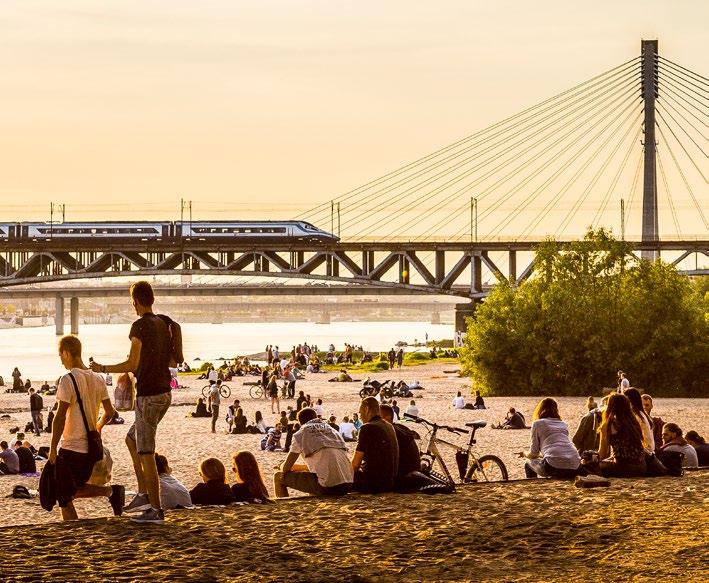
The ‘Wilga’ runs from the Vistula Boulevards in front of the Multimedia Fountain to Praga District Beach (G-3).
The ‘Pliszka’ runs from Poniatowski Bridge to Poniatówka Beach in front of the National Stadium (J-7).
The ‘Słonka’ runs from the floating pier at Czerniakowski Promontory to Saska Kępa Beach (K-8/9).
(Cotton Candy) club, dozens of street food stalls, several additional bars, art installations, a carousel, arcade games, amusements and more. There is also an outdoor pool complex right next door, making this the perfect party place after taking a dip! QK-8, Wał Miedzeszyński 407. Open Fri-Sat 20:00-05:00, Sun 16:00-24:00.
Warsaw’s largest and most popular beach, located right under the National Stadium, with free ferry service straight onto the sand from Powiśle. As such you’ll find quite a bit of infrastructure at this one, including food, bars, ice cream, badminton and volleyball courts, a playground, designated barbecue areas, water equipment rental, sunbeds, hammocks and more. A good choice if you want to people-watch, sunbathe or DIY party with the locals after sunset. QJ-7.
Known by many names, the Praga Beach district is that sandy pitch across from the Old Town and metres from the zoo. It’s more of a wild beach, but it does have designated areas for grilling and wicker gazebos. Bring the kids after a trip to the zoo (p.73), or rage hard at La Playa and come down to the water for a breather. The daytime views of the Old Town are great, but at night… just, wow! Probably the most celebrated beach club in the capital, La Playa features several bars, a covered outdoor stage, plenty of deck chairs and distinctly Latin vibes, enhanced by weekend DJs who bring in the dance crowd. There are also areas for beach volleyball, badminton, frisbee and boules, and you can borrow equipment from the bar. Kids can also enjoy the nearby playground and ropes park. The ferry runs directly from here to the Multimedia Fountain Park (F-3), which is a great way to end the evening, if you aren’t up for dancing the night away on the beach. QG-3, La Playa open 17:0024:00, Fri 17:00-02:00, Sat 13:00-03:00, Sun 13:00-01:00.


Polish food is famous for being simple, rich and very filling. Below we list the most well-known dishes you simply must try while in town, all of which you should be able to order from any Polish restaurant worth its salt. Smacznego!


Barszcz
A nourishing beetroot soup, barszcz may be served with a croquette (‘barszcz z krokietem’), with miniature pierogi floating in it (‘barszcz z uszkami’), or simply as broth in a mug expressly for drinking. A recommended alternative to other beverages, we’d be surprised if you can find a bad cup of barszcz anywhere in Poland, so make sure you return home with barzszcz stains on at least one of your shirts.

Though there’s no standard recipe for this hearty stew, ingredients usually include fresh and pickled cabbage, sausage, onion, mushrooms, garlic, peppercorns, bay leaves, caraway and whatever else is on hand. In fact, metaphorically bigos translates to ‘big mess,’ ‘mish-mash’ or ‘confusion’ in Polish. A Polish restaurant or prospective bride can be fairly measured on the strength of their bigos, so put it to the test.
Gołąbki
Translating to ‘little pigeons,’ this favourite dish is like a ‘cabbage enchilada'. Consisting of boiled cabbage leaves filled with rice, onion and typically beef, gołąbki are rolled up and baked or steamed, then served with tomato or mushroom sauce. Polish legend claims that King Kazimierz IV fed his army gołąbki before the Battle of Grunwald, and their unlikely victory attributed to the fortifying meal ever since.
This is ‘pork knuckle’ or ‘ham hock,’ as in the part of a pig’s leg between the knee and ankle. Boiled, braised or roasted, this is the closest the Poles come to barbecue, and is a delicacy. The meat should slip right off the bone, be served with horseradish, and washed down with beer. Generally sold by weight, you might end up with more than you bargained for, but it’s certainly an Instagram opportunity. Go caveman.
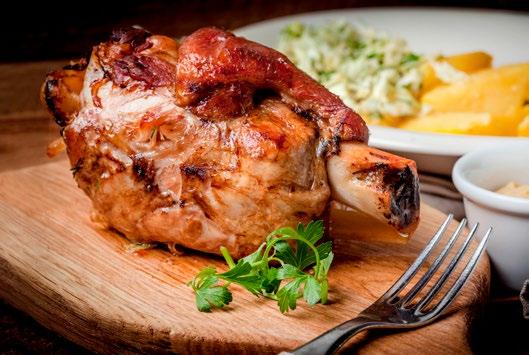
Kotlet Schabowy
Typically served with mashed potatoes and pickled cabbage, this is probably the most popular meal in Poland. Essentially a breaded and fried pork chop, ‘kotlet schabowy’ is quite similar to Viennese schnitzel, and a solid bet for a cheap, filling, risk-free meal. If you’re awoken on a weekend by the sound of profuse banging - that’s the sound of the meat being tenderised with a spiky mallet, so best mind your manners.
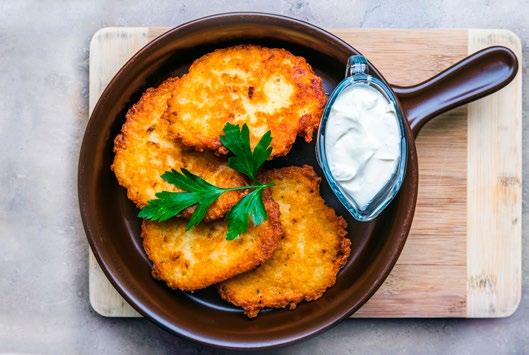

Poland’s most famous food, you can't leave PL until you’ve had them. These doughy, stuffed dumplings are typically steamed or pan-fried. Traditional fillings include potato, sweet cheese, minced meat, mushrooms and cabbage or seasonal fruits. If you nose around, you’ll find plenty of maverick fillings like chocolate, lentils or even chicken livers; the possibilities are limitless and served literally everywhere.
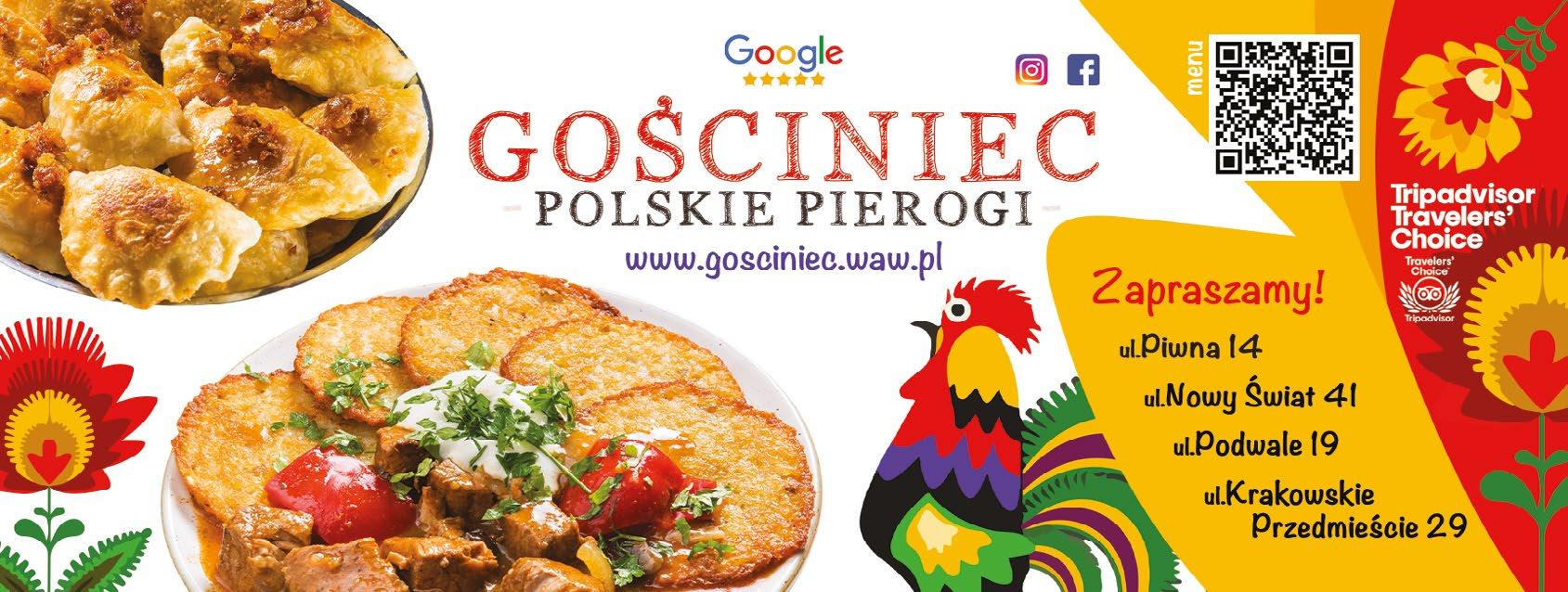

Placki Ziemniaczane
These greasy, fried potato pancakes are very similar to hashbrowns or Jewish latkes (if that means anything to you), and may be served in a variety of ways. Keep it simple with just sour cream (‘placki solo’), or turn it into a hefty meal by ordering them smothered in mushroom sauce or - our favourite - goulash (‘placki po węgiersku’). Highly caloric, they’re also a tried and true hangover cure.
It doesn’t get any more Polish than żurek – a sour soup made from a thick stock of fermented rye flour. Typically chock full of potatoes, sausage and hard-boiled eggs, żurek is most often thickened with cream, and seasoned with marjoram, garlic, salt and pepper. The result is a tasty grayish gruel that any Polish peasant would be proud to polish off. If you’re lucky, you’ll even get it served in a bread bowl.

Travelling around Warsaw by bus, metro and tram is fast, efficient and affordable; driving a car through the centre, on the other hand, can be confusing and frustrating. As such, for visitors the city centre is best navigated by bike, scooter, public transport or taxi/ride share - all of which are explained here. For detailed info about Warsaw’s airports and train stations, visit our website.
Warsaw has an extensive bus and tram system, as well as a good metro system with the M1 line running north-south and M2 running east-west. Over 1,900 buses operate in and around the city, and run 05:00-23:00. After that night buses run on most routes twice every hour. All night buses display the letter N. ‘Fast buses’ (marked with red digits) skip the smaller stops.
Standardised tickets are valid for use on the metro, buses and trams, and can be bought from machines with instructions in English at all metro stations, and some bus and tram stops. Tickets can also be purchased from machines on the actual buses and trams, where you can pay by card, or using exact change only.
A standard single fare costs 4.40zł, or 3.40zł for a 20min ticket. If you’re travelling to the further reaches of Warsaw you’ll need a 7zł ticket that covers both zones 1 and 2 (note that the airport
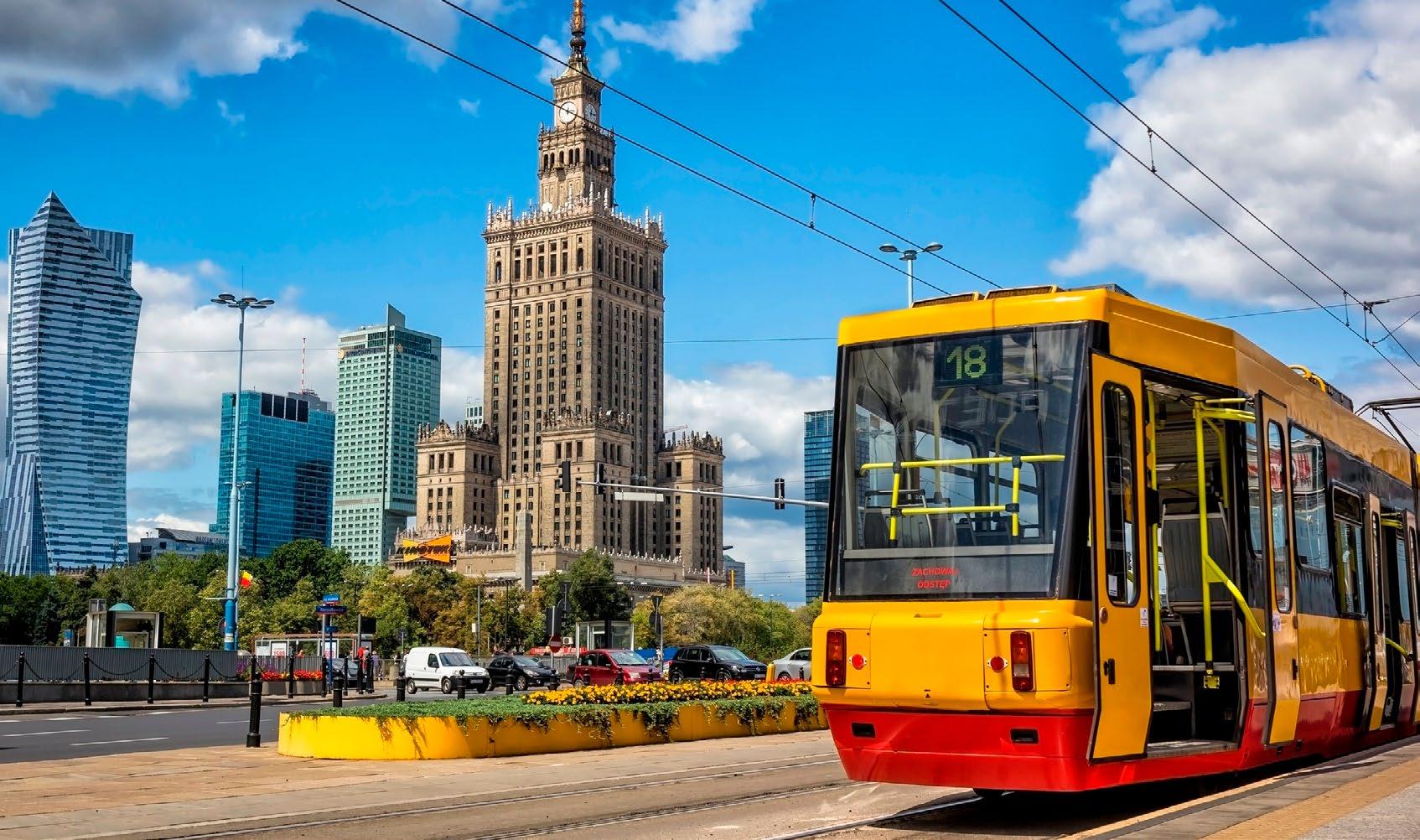
is still in Zone 1). Tickets valid for 24 hours, 3 days and a special ‘weekend’ ticket might also be worth considering. Those over 70 ride for free, as do children up until the end of September of the year they turn 7, but you must have photo ID (those who ride free still need a ticket/’wejściówka’ to get through the gates of the metro - find wall dispensers next to the gates and hang on to the ticket for multiple rides). Everyone else pays full fare, unless you have an ISIC card which entitles you to a reduced fare (‘ulgowy’ ticket).
Once you’re through the electronic gates of the metro, you’re ready to ride. For buses and trams, however, there’s one extra step - validating your ticket immediately once you’re on board in the small ‘kasownik’ boxes on trams and buses. Plain clothes ticket inspectors stalk the lines, dishing out hefty fines for those without valid tickets. They often don’t look very official and you are within your rights to request identification.Qwww.ztm.waw.pl.
Want your own car, but just for a short while?
Download the Traficar app, find an empty vehicle, scan the QR code, and you’re in. You can leave the car in any legal parking space within their service zone, and you don’t have to pay for gas! Everything is done through their easy-to-use app. In terms of cost versus a taxi, it comes out about the same, but as an alternative to car rental, Traficar is a wonder. You can rent a vehicle for 24 hours for only 89zł and even drop it off in another city where Traficar operates. As such, this is a great option for day and weekend trips, big shopping trips, or simply picking up friends at the airport. Note that you need to have a valid driver’s license that is recognised in PL.Qwww.traficar.pl. Prices are calculated as 3.99zł to start a journey, plus 1.79zł/km; 0.15zł/min when parked (0.01/min 23:00-07:00).
Warsaw has cemented its big-city credentials with a fleet of 3,000+ bikes (including electric-assisted bikes and tandems) at over 300 stations. Veturilo is ridiculously easy: once you’ve registered online and paid the initial 10zł fee, you can visit any of the stations, select your ride, scan the bike’s QR code and you’re off! For standard bikes the first 20mins are free, and from there you pay 1zł for 21-60 minutes, 3zł for the second hour, 5zł for the third, and 7zł for each hour after that up to 12 hours; electric bikes are more expensive. When you’re done, pop your bike back into the stand at any of the stations, or if the stands are full, confirm your return via the station’s machine and use the bike chain to secure it to another bike. Qwww.veturilo.waw.pl. Available from March 1 to November 30.
Warsaw’s public transit network is relatively easy to use, but the key to unlocking it is the warszawa. jakdojade.pl site and web app. Let the app access your location and it’ll determine the most efficient way to get to your destination - whether it be bus, tram, metro or train, which isn’t always obvioususing live data. A huge help for navigating your way around, you can also buy and validate tickets in the app.
This site can also help you get from point A to point B within Warsaw, but is really invaluable when it comes to planning the journey to your next destination, whether within Poland or abroad, by bus or train. Use e-podroznik.pl to easily search bus and train connections and timetables, compare prices and even buy tickets in one of seven languages. There’s also a free mobile app (Android only).
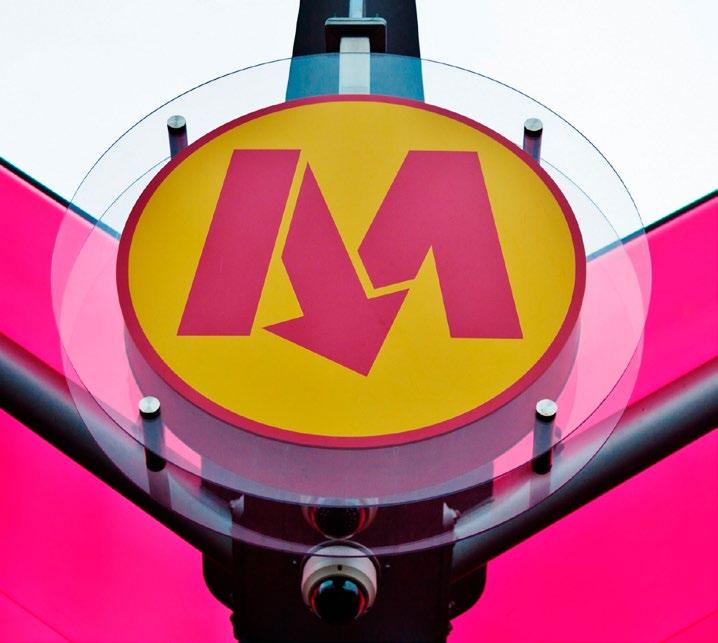
You’ll be happy to know that some of the ride share apps already on your phone will work in Warsaw, including Uber, Bolt and Free Now In fact, ride share services and taxi services are almost indistinguishable in the capital, with drivers typically operating on multiple platforms at the same time. Note, however, that ride share providers don’t have the same permissions as licensed cabbies and may not be able to take you as close to your destination, or get you there as directly. If you want to make sure you’re getting an actual taxi, try iTaxi (itaxi.pl), or call the Glob Cab Taxi at +48 1-9668 or +48 666 00 9668i.
Although agitating to some, electric motorised scooters are everywhere across Warsaw, and provide a cheap, easy, efficient and environmentally-friendly way to get around. To get started, you need an e-scooter app on your phone (create an account and add your personal data and payment details). The firms with the most current coverage in the capital are Lime, Bolt, Blinkee and CityBee. Spare yourself the wrath of locals by using your scooter responsibly; don’t ride through congested areas and when you’ve finished your ride, park it out of the way without blocking the sidewalk.
When it comes to Sightseeing, visitors should be sure to experience the dynamic synergy of Warsaw as a modern metropolis that still nurtures its cultural spirit and traditions. To this end, our guide details the capital’s most important districts, walking you through not only the antiquated Old Town (p.32), regal Royal Route (p.40) and the imperial beauty of Łazienki (p.50) and Wilanów (p.54), but also around the soaring, frenetic City Centre (p.22), happening Powiśle (p.46) and scruffy Praga (p.56). If your time is limited, however, here’s a cheat sheet of the city’s most unmissable sights.

More of a triangle than a square, and home to the Royal Castle, this popular plac is where modern Warsaw meets the Old Town.QSee p.33
A window into the ‘once-upon-a-time’ of Warsaw’s golden days, the Old Town is also symbolic of Warsaw’s rise from the ruins of WWII.QSee p.36.
Warsaw’s left-bank boulevards are a favourite haunt of the locals - go and see why - walk, ride, or just chill on the riverside steps. Wow.QSee p.47.
Full of incredible art and architecture this massive park and palace complex offers spectacular opportunities for sightseeing or simply relaxing.QSee p.50
Originally commissioned by Stalin as a ‘gift from the Soviet people’, this 237-metre-high structure was Warsaw’s tallest building until 2021, and takes its inspiration from the capitalist worldnamely the Empire State Building. Working around the clock, it took over 5,000 workers - ferried in from the Soviet states and housed in a purpose-built village - just three years to finish the Palace in 1955 With 3,288 rooms inside, the Palace’s purpose was to serve as not just Communist Party headquarters but also as ‘The People’s Castle.’ Now an iconic part of Warsaw’s landscape, the Palace is celebrated by some, while for others it merely represents Russian hegemony.
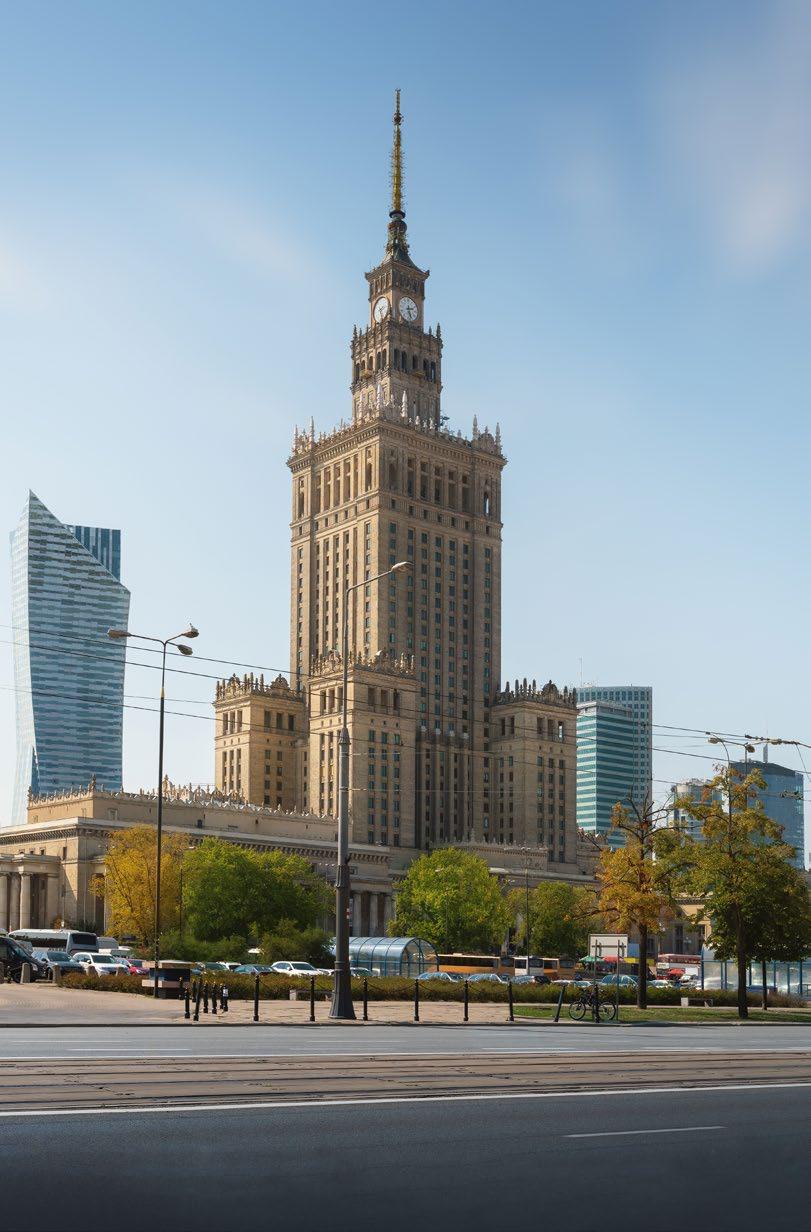
At present the building hosts several theatres, a cinema, numerous bars, restaurants and cafes, and a tourist info office, as well as the Museum of Technology and the Museum of Evolution Tours of the interiors are offered hourly in Polish between 10:00 and 15:00, and in English at 16:00. Book tickets online in advance, or skip the tour and head straight to the outdoor viewing terrace on the 30th floor (via elevator) for thrilling panoramic views; tickets available online.
QE-8, Pl. Defilad 1, MCentrum, tel. (+48) 22 656 76 00, www.pkin.pl. Open 09:00-18:00. Viewing terrace open 10:00-20:00; terrace admission 25/20zł. U
The ‘Polish Versailles’ is just one of the many fitting monikers applied to this splendid late 17thcentury royal palace 10km to the south.QSee p.54
6
1000 years of Jewish history in Poland is chronicled in this excellent museum where the Jewish Ghetto stood during WWII.QSee p.67.
One of Poland’s most prestigious art centres with a packed program of exhibitions, performances, film screenings and artist residencies!QSee p. 64.
Chronicling the heroism and tragedy of the 1944 Warsaw Uprising, this modern museum packed with multimedia displays is one of PL’s best.QSee p.69
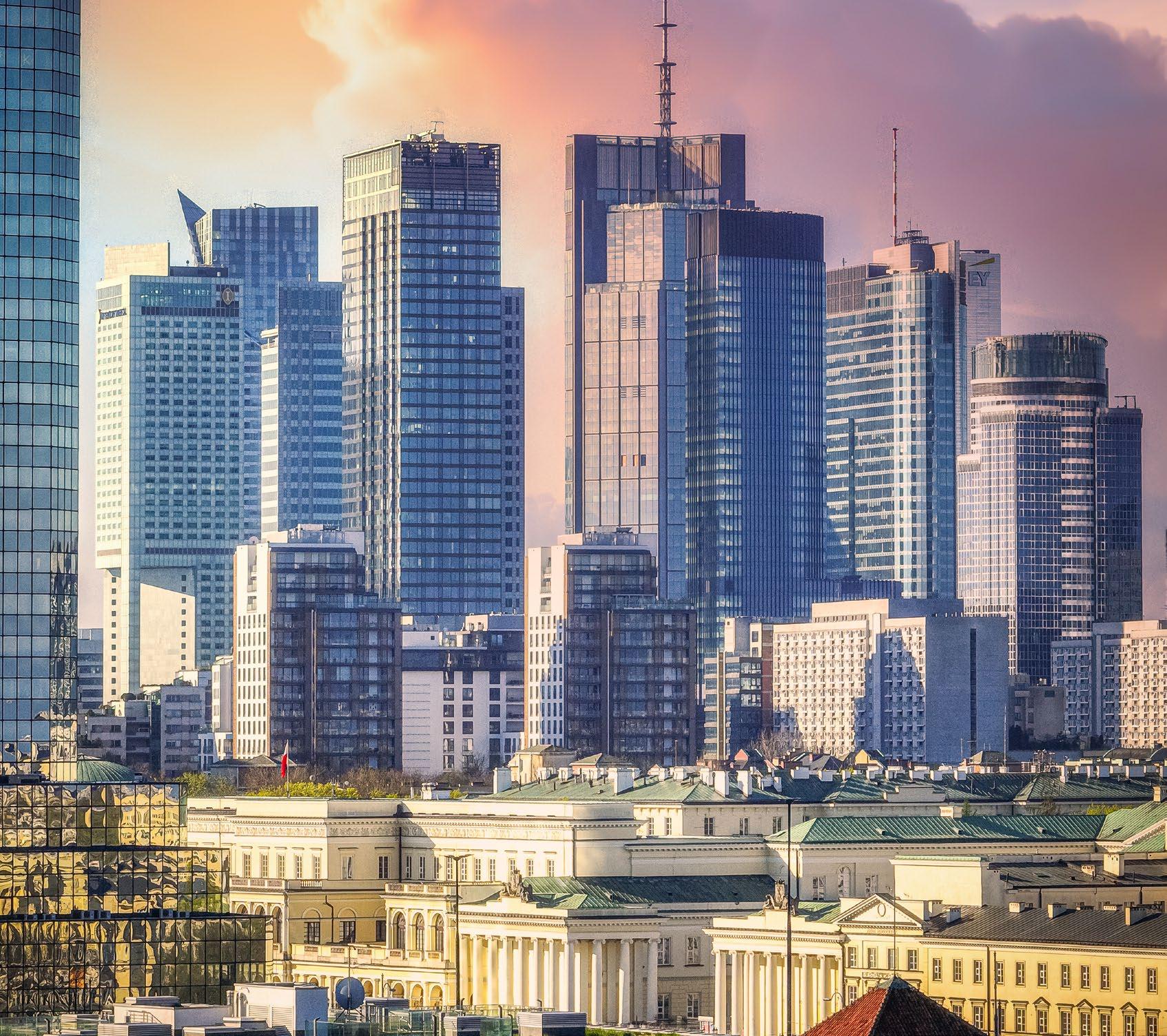
Known locally as ‘Śródmieście,’ Warsaw’s City Centre isn’t exactly a district (it comprises several, actually), but more of a catch-all term for the downtown area. Definitions vary, but generally, you know it when you’re in it - wide streets, monumental buildings, billboards, busy crosswalks and little to stand in the way of progress. It’s the modern, fast-paced, forwardlooking part of the city radiating out from the Palace of Culture & Science, and it’s here that you’ll find the majority of the city’s hotels, restaurants and bars, but also government buildings, skyscrapers and places of commerce - the dynamic heart of the contemporary capital.
In terms of tourism, it’s not exactly inviting, so why start here? Well, you’re already in it, aren’t you? Chances are you’re staying in the City Centre, so let’s get familiar with what’s around before running off to the Old Town (p.32), shall we? Despite not being particularly cosy or nostalgic, there are still many points of interest and nowhere more conveys the modern character of the Polish capital.
Used over the centuries for military parades and national celebrations, this is Warsaw’s largest square Named after legendary inter-war Polish leader, Józef Piłsudski; you’ll find a statue of the Marshal guarding his naming rights with a stern gaze nearby. That’s because the space has undergone quite a few rebrandings thanks to the changing political landscape, including a stint as ‘Adolf Hitler Platz’ under Nazi occupation. During the era of Partitions, the huge orthodox St. Nevsky Cathedral was built here; considered a symbol of Russian oppression, it was razed after Poland regained its independence. It was here too that in 1979, the newly appointed Polish Pope John Paul II gave an open-air holy mass to 500,000 people, instilling hope in the struggle against the repressive communist system. In 2018, two new monuments were added - both relating to the tragic and highly politicised Smoleńsk Air Disaster in which a plane carrying 96 members of a Polish government delegation crashed in the Russian forest in 2010; everyone on board perished, including President Lech Kaczyński, whose monument here gazes upon that of the other victims.
At the western end of the square you’ll find the Tomb of the Unknown Soldier under the broken colonnades of Saxon Palace - the grand structure this square stood in front of until its destruction during WWII. Here the ashes of unidentified soldiers who died for the Polish cause are interred and an eternal flame is guarded by stone-faced soldiers. If you enjoy a bit of military theatre, you can watch the official changing of the guard every hour, on the hour, 365 days a year.QF-6, Plac Piłsudskiego, MNowy ŚwiatUniwersytet.
Plac Piłsudskiego’s Tomb of the Unknown Soldier almost serves as an entrance gate into Saski Park, aka Saxon Garden. This historic 15.5ha park is the oldest in the city, and became one of the first public parks in the world when it opened to all in 1727. At that time it was a Baroque garden with the grandiose Saxon Palace playing a role very similar to the Palace of Versailles in Paris’ famous park. Despite its demise during WWI, Saxon Garden still offers several historical points of interest, in addition to lots of benches, plenty of shade and a much-needed escape from the urban din of the capital. The centrepiece of the gardens is a large fountain created in 1855 by renowned Warsaw architect Henryk Marconi. The alleyways running out from it are lined with blooming flowers, ancient trees and neoclassical sculptures. In the northwestern part of the park, you’ll find the Romanesque Water Tower from 1825 - also designed by Marconi, and modelled on the famous Temple of Vesta in Tivoli. Other curiosities include a sundial from 1863, a memorial honouring Varsovians killed during WWII, and a statue of Stefan Starzyński - the city’s mayor at the outbreak of WWII, who later to became a victim of Dachau concentration camp. It’s also worth noting the beautiful Renaissance palace on the southern side of the park, which holds Zachęta - Warsaw’s premier space for contemporary art (p.64).QF-6, Between ul. Marszałkowska and Plac Piłsudskiego, MŚwiętokrzyska.
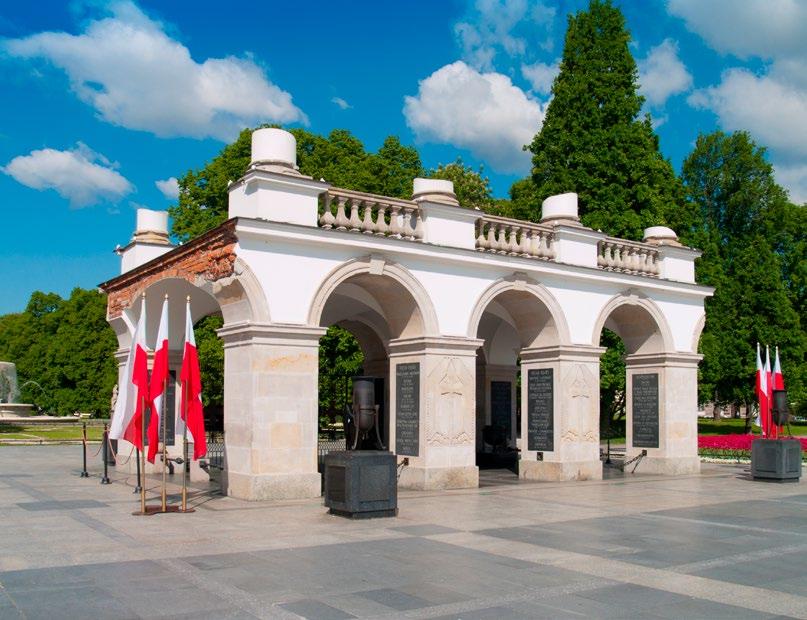
Major Warsaw landmarks, these two massive brick market halls were constructed between 1899 and 1901 on the instruction of Russian mayor Nikolai Bibikov. Together they functioned as Warsaw’s largest market up until the outbreak of the Warsaw Uprising. Though ravaged by fire, the buildings survivedcheck out the bullet scars still visible on the corner of Pl. Mirowski and Jana Pawła II. A bus depot in the post-war years, Hala Mirowska resumed its original purpose in the 1950s and a visit today feels a bit like a trip back to those days, thanks to the outmoded shops full of cheap goods and lines of country folk selling jars of mushrooms out of their vans. The outdoor produce market is absolutely worth it, however, and full of fresh greens coming in from the countryside. Meanwhile, Hala Gwardii (open Fri-Sun only), has been turned into a trendy food hall (p.87), though it’s a bit grittier than the capital’s similar enterprises. The dichotomy is unique as this place strains to modernise, but stays true to its roots.QD-6, Pl. Mirowski 1, MRondo ONZ. Open 06:00-20:00; Sat 06:00-18:00; closed Sun.


Once one of Central Europe’s most famous brewing complexes, this 4.5ha area has been revitalised into a trendy urban culture and gastronomy district, densely packed with dozens of restaurants, cafes, bakeries, delicatessens and shops. Mixing bold new architecture with restored historical buildings, postindustrial design with public green spaces, the heart of this ‘city within the city’ is Food Hall Browary contemporary gastro concepts in the former brewery cellars (p.86). The historic Browar Warszawski (Warsaw Brewery) itself has also been revived and is once again producing craft beers (19 different types!) for local hopheads. Other highlights include a sports bar part owned by Robert Lewandowski ( dinner entertainment at Baila Show & Dining online for events, especially for seasonal specialtiesthere’s always something brewing at Browary! ul. Grzybowska 60, MRondo Daszyńskiego, www. browarywarszawskie.com.pl.

One Warsaw’s newest public social spaces, European Square was created by Wirtz International Landscape Architecture as part of the development of the impressive Warsaw Spire - Poland’s 3rd-tallest skyscraper at 220m. Both the square and the office building have won awards from industry authorities and local residents for their design. Located just a short distance from the ‘Rondo Daszyńskiego’ metro station, the small square has a lot of features: trees, benches, fountains, reflecting pools, two large murals, an amphitheatre, a unique Art Walk gallery where changing exhibits are displayed, and an iconic 3D Instagram-baiting installation that says ‘Kocham Warszawę’ (I Love Warsaw). What’s more, there’s something happening year-round, including
more info & tickets at ww.smartkidsplanet.pl







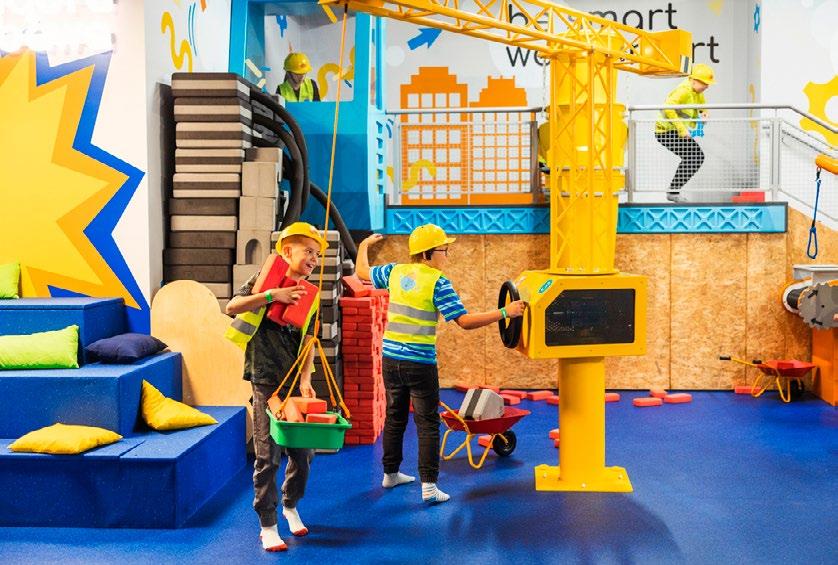
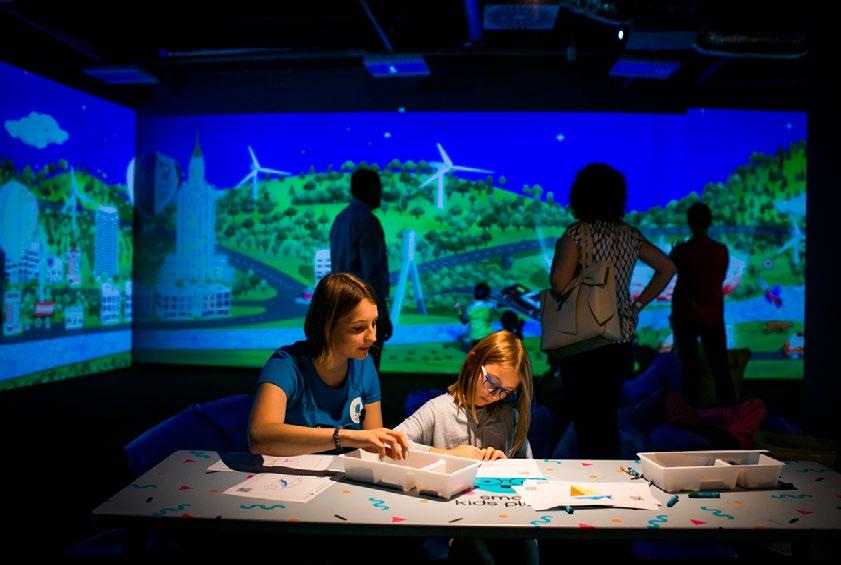
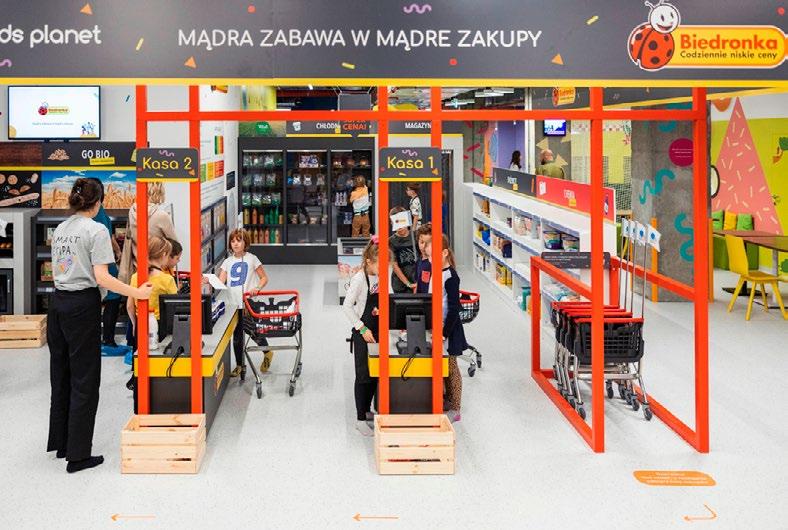
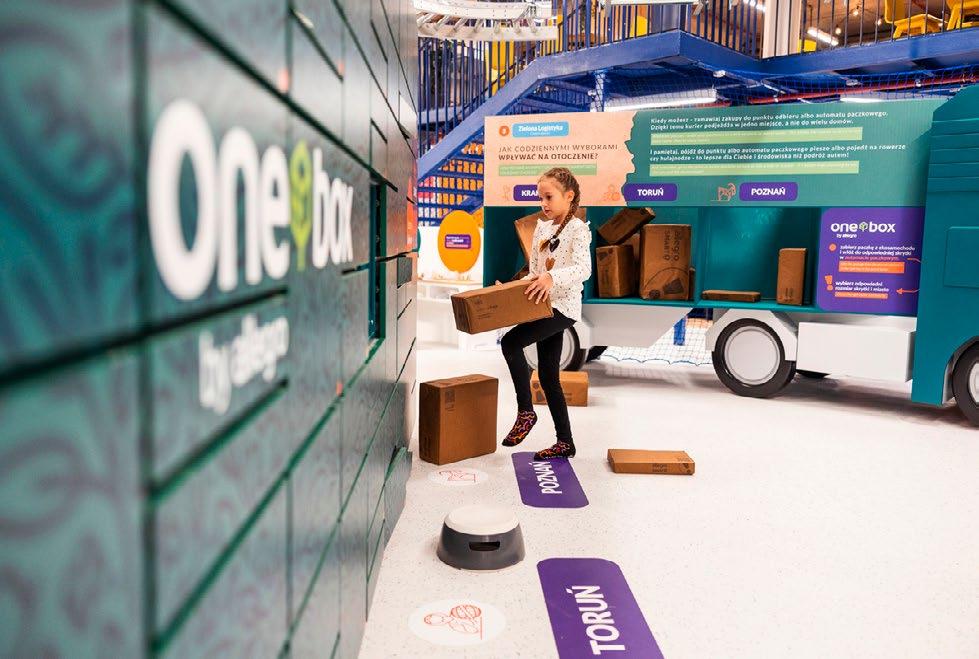
"This place will take children on a journey to a small planet of great explorers A world of limitless imagination, cosmic adventures and sporting excitement " Anna Lewandowska - IG @annalewandowskaMarconi’s fountain at the centre of Saxon Garden.
concerts, film screenings, frequent live sports transmissions and an ice rink in winter. Of course there are cafes, bars and food options as well, making this a very unique and worthwhile place to hang out in Warsaw’s business district.QC-7, Plac Europejski, MRondo Daszyńskiego.
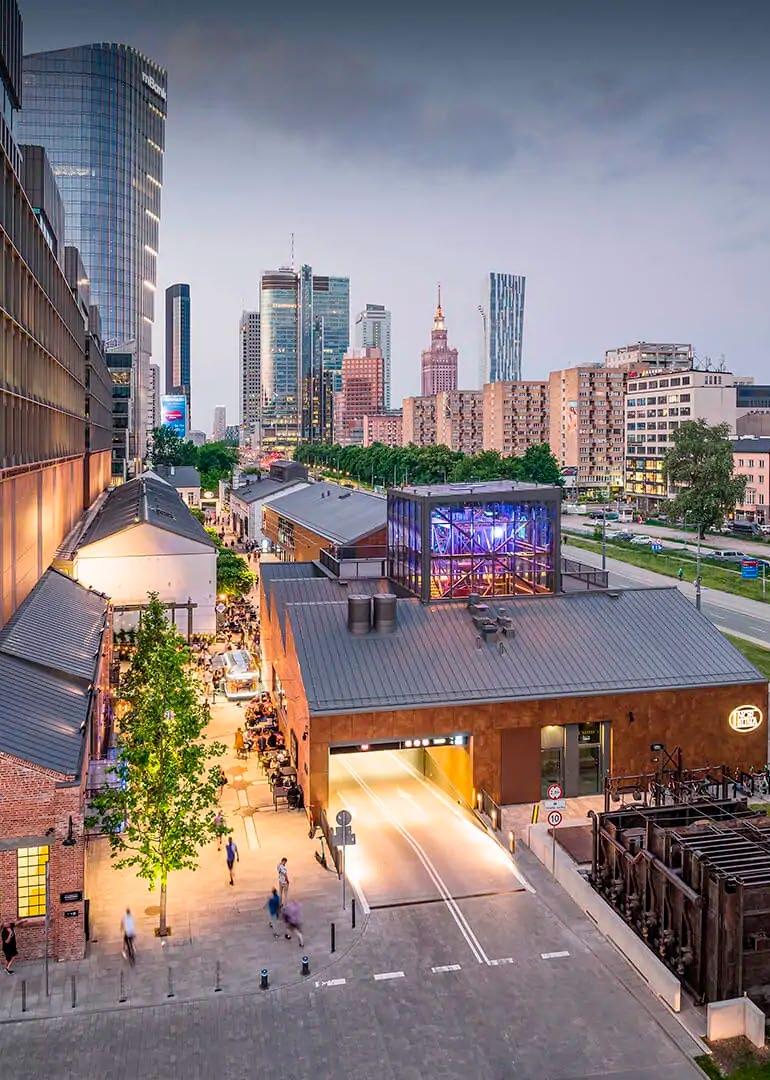
The latest of several highly successful urban renewal projects in Warsaw, arguably the most diverse and exciting, and, without a doubt, the most rewarded! This former industrial site covering an area of 2ha near Rondo Daszyńskiego was once one of the largest enterprises in the Kingdom of Poland, with a long, complex history that dates back to the 1840s. The Norblin, Buch Brothers and T. Werner Factory (to give its full name) produced a wide range of metal, tin and silver-plated goods - sugar bowls, teapots, cutlery, vases, dishes and more - ranging from the utilitarian to true works of art. Until recently a neglected pearl of post-industrial architecture, massive investment has turned the area into a lively modern urban centre of culture, entertainment, gastronomy and commerce. Over 24,000m2 of total commercial space open to the public, visitors will find an impressive museum covering the site’s
industrial history - including exhibits of unique plated goods and historical machinery, the largest, most complete Apple Computer Museum in the world, the BioBazar eco (organic) food market and bistro, the KinoGram boutique cinema, ArtBox Experience, a fitness centre, shops, cafes and more - including a bevy of events. To top it all off, a trendy indoor Food Town lives at the heart of the space, with 23 gastronomy concepts from around the globe, and 5 bars to add to the service! Additionally, Hala Gimlet, is an everyday live music space, featuring bands, DJs and jazz sessions. Young families should also take note of Smart Kids Planet, an educational play center for young children to partake in the fun. This truly is the astounding cutting edge of Warsaw’s urban culture, so check it out.QC/D-8, ul. Żelazna 51/53, MRondo Daszyńskiego, www. fabrykanorblina.pl. TE6
This delightful square connects the city’s past to its present and unites the worlds of commerce, religion, entertainment and art. The main attraction is the 19th century Renaissance All Saints’ Church. From 1941 it was inside the Warsaw Ghetto and Parish Priest Fr. Monsignor Marceli Godlewski helped to house Jews in the rectory and assisted several to escape. Rebuilt after the war, the entire square has been recently renovated and today features dozens of benches, neatly landscaped grassy areas and even a pond with a waterfall. Very well lit, it’s a wonderful place to relax or enjoy the many bars and cafes that surround it, day or night.
Joining the square is ul. Próżna, the only full street that survived the Jewish Ghetto. It remained derelict, however, in recent years, one side was restored to its pre-war splendour, while the second side
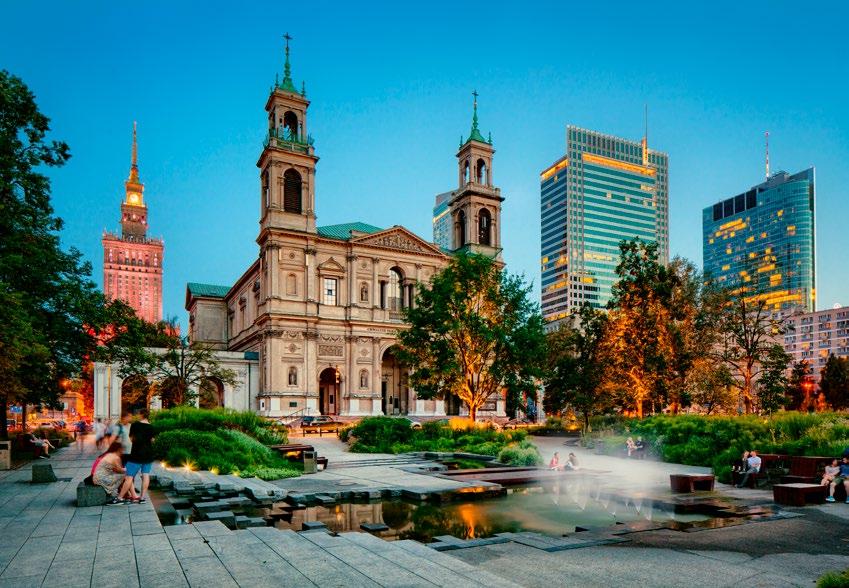
awaits revival. It is here in the former heart of the Jewish Warsaw (p.66) that the Singer Jewish Culture Festival takes place each year in late August/early September. The Nożyk Synagogue - the city’s only synagogue to survive the war and still in use today - can also be found close by at ul. Twarda 6.QE-7, MŚwiętokrzyska.

Like the trough behind a cresting wave, this ‘passage’ runs parallel to ul. Marszakowska in the shadow of the Wars Sawa Junior departments stores, otherwise know as the ‘Eastern Wall.’ One of the most monstrous projects completed in communist Warsaw, this massive wall of buildings is among the oldest department store/retail complexes in Poland, a role it still plays today. Designed by architect Zbigniew Karpiński and completed in 1969, the buildings were hailed a work of genius, but soon fell into neglect, their reputation changing to that of an enormous eyesore covered in advertising in the early postcommunist era. In more recent times, the buildings have been modernised with shining glass frontages, granite walkways and proper lighting. Although once entirely dodgy, Pasaż Wiecha - the long space behind the ‘Eastern Wall’ - is today lined with shops and restaurant gardens on both sides, making it an interesting area to explore. It also boasts benches, hammocks, beach chairs and other elements of urban design, and increasingly plays host to events like food fairs. Ironically, the centrepiece of the city’s big 1960s redevelopment plan is now a focal point in the ‘Nowe Centrum Warszawy’ plan, which will see this immediate area redeveloped once again in the near future, becoming more green and user-friendly for residents. It’s all part of a larger plan to create a lively pedestrian corridor through the city centre from here to ul. Nowy Świat (p.43) via ul. Chmielna. Start a wander east down the latter from here to see how far the city has progressed so far.QF-7/8, Pasaż Stefana Wiecheckiego Wiecha, MCentrum.
Warsaw’s newest public square opened in July 2022 at the intersection of Bracka, Krucza, Zgody, Szpitalna and Chmielna Streets - hence the name, ‘Five Corner Square.’ Although the new design still features a lot of concrete, 22 tall maple trees have been added to the space, as well of numerous benches with almost 40 sitting places. Most significantly, the entire area has been opened up and given over to pedestrians, which is a huge improvement over the urban tangle that previously prevailed here. Plac Pięciu Rogów is basically the centrepiece of redevelopment works
throughout this area which have reduced car traffic and parking spaces, widened sidewalks, added greenery, and are transforming ul. Chmielna into a high street for pedestrians connecting ul. Nowy Świat and the Royal Route (p.40) to the Palace of Culture (p.21). A great area for exploration, on and around the square you’ll plenty of cool cafes, restaurants, bars and intriguing places for relaxing and refuelling.QG-7/8, Intersection of ul. Bracka, Krucza, Zgody, Szpitalna and Chmielna, MCentrum, www.plac5rogow.pl.
Like Plac Konstytucji, after the war this star-shaped roundabout became dominated by PRL-era buildings from the 1950s, but still harbours a couple gems. The first is the conspicuous Church of the Holiest Saviour, from which the square takes its name (Saviour Square). Built in neo-Renaissance style in the 1920s, that it stands is a marvel, considering it was dynamited by the Nazis during WWII and then tagged for demolition by the communists. The other pre-war building here is the handsome JasieńczykJabłoński tenement (Mokotowska 12), erected in 1910. Upon completion, it was not only one of the most modern, but also the tallest residential building in Warsaw (38 m). From 2012–2015, Julita Wójcik’s “Rainbow” art installation notably soared over Plac Zbawiciela. A 9m high 26m wide rainbow made of plastic flowers, the piece proved too controversial for PL’s anti-LGBT factions, who repeatedly lit it on
fire until it was removed. Though there are plans to replace it with a fireproof version, the current political climate doesn’t seem conducive to its return for the moment. Despite that unpleasantness, Saviour Square today is quite the progressive meeting place for students, artists and activists who favour the hip bars here like Plan B (Al. Wyzwolenia 18) and Charlotte (Al. Wyzwolenia 18/2U).QG-10, Plac Zbawiciela, MPolitechnika.
The historic main building of what’s known locally as Politechnika Warszawska is an absolute wonder of neo-baroque architecture designed by Stefan Szyller at the turn of the 18/19th centuries. This stout, sturdy two-story building with its unique rounded corners has survived numerous wars and political upheavals. The university as an institution was officially established in 1826 during the Russian occupation of Polish territory. Many of its students were involved in various uprisings throughout the 19th century, which resulted in the Russians banning the Polish as the language in instruction. This was just one of many reasons that young intellectuals of the time moved abroad to pursue an education. Ironically it was Germany who allowed the ban to be lifted after pushed the Russians out of Warsaw in 1915. Surviving the devastation of WWII, and the challenges of communism, today it’s one of the largest technology universities in Central Europe, with over 36,000 students per year. If you’re wondering where they are, no doubt many of them are hanging out in Hala Koszyki! Its magnificent facade features an array of cool architectural embellishments: sculptures, basreliefs, frescoes and sgraffito, to name a few. If you think the exterior is impressive, move inside and admire the pentagonal cloister courtyard with its four stories of arcades, phenomenal staircase and beautiful stained-glass roof - one of the most-photogenic places in Warsaw! only a five minute walk from here. QF-10, Plac Politechniki 1, MPolitechnika. Open 07:00-18:00.
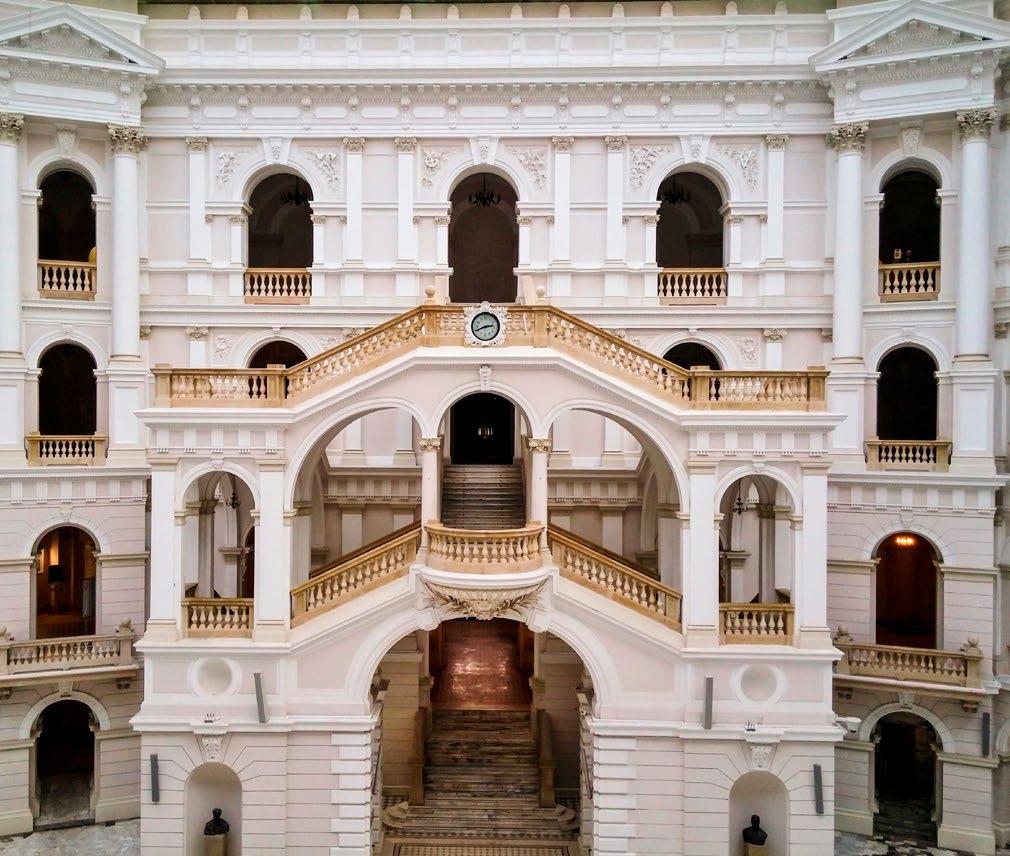
One of Warsaw’s absolutely awesome indoor food halls and a must-see for visitors. See more p.87 QF-10, ul. Koszykowa 63, MPolitechnika, www. koszyki.com. Open 08:00-01:00.

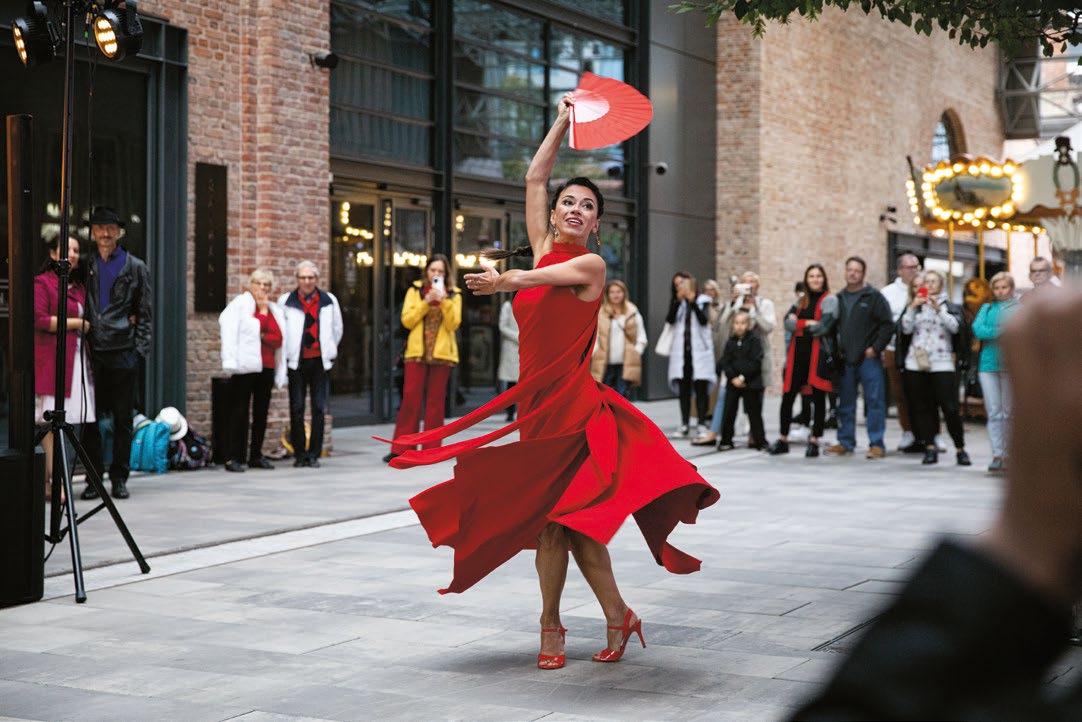

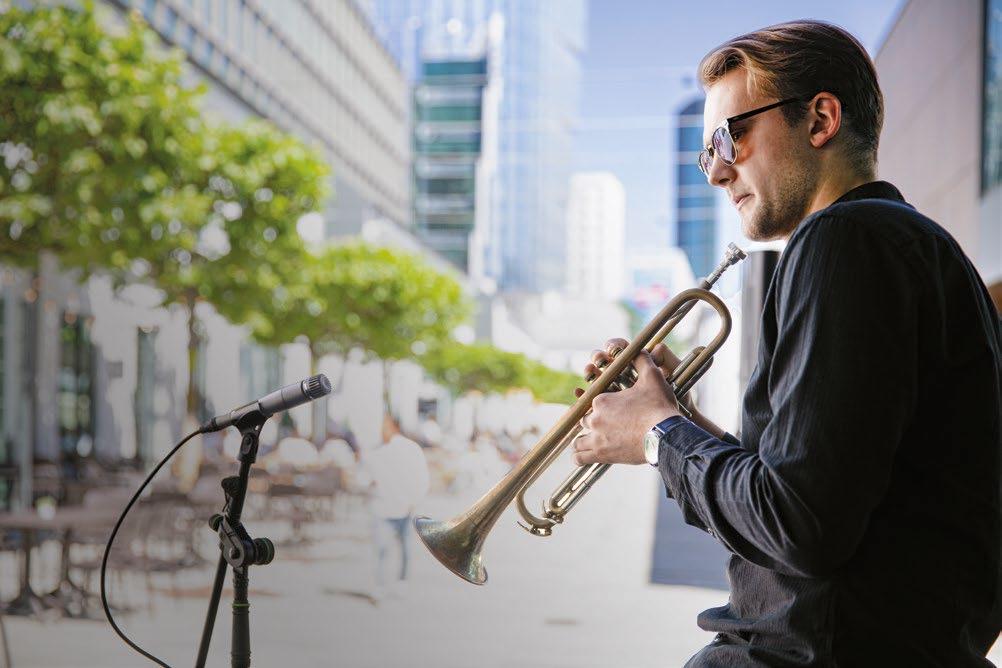

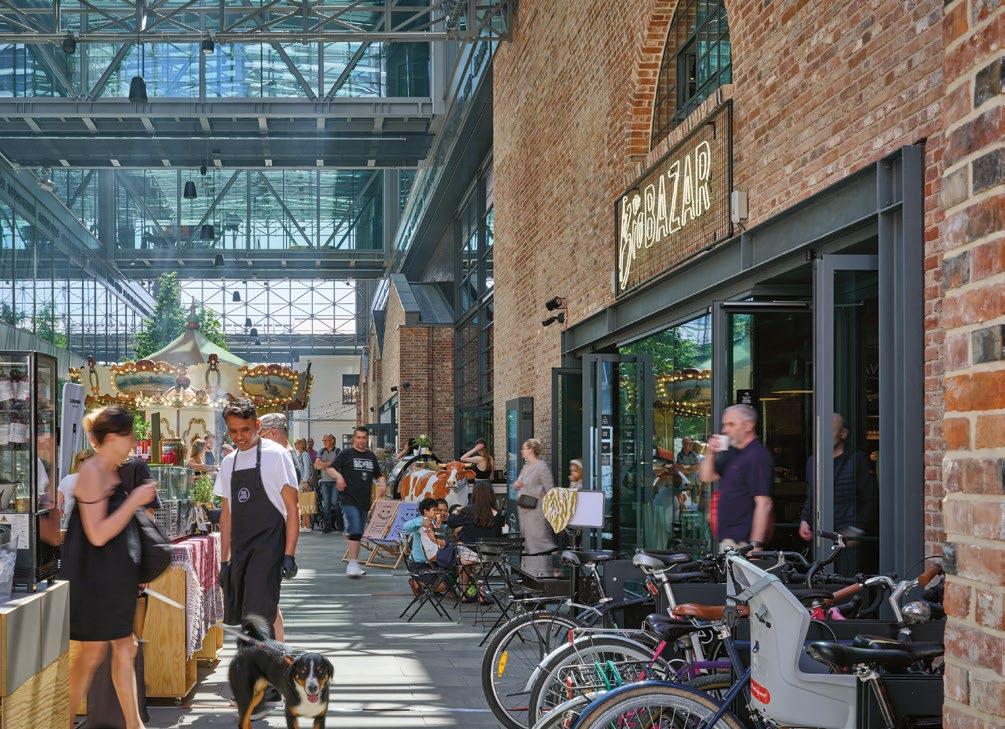

Warsaw has plainly stated its ambition to have more skyscrapers than any other city in Europe. The city currently has 25 buildings over 100m high, with another 10 approved for construction, and enough pending approval to potentially bring the total up to 65 in the coming years. Beloved by locals and symbolic of the city’s aspiration to be the most modern capital in Europe, here are some of the most notable towers in town.
Varso: Nearly complete, this is the tallest building in the EU at 310m (though the last 80m is a spire).QE-8.
Palace of Culture & Science: Buy a ticket, then head up to the 30th floor of Warsaw’s oldest and second tallest skyscraper (237m) for amazing panoramic views from an actual open-air terrace. More on p.21 QE-9.
Warsaw UNIT: Warsaw’s 5th tallest tower (202m) was completed in 2021. Opening soon on the 46th floor will be a Skybar and the wild new adrenaline attraction Skyfall Warsaw - a vertigo-inducing glass box that dangles outside the building and suddenly tilts 15 degrees forward!QC-8.
Złota 44: Designed by Daniel Libeskind, this luxury residential tower is one of Wawa’s most beautiful and distinctive skyscrapers, as well as its 7th tallest (192m). QE-8.
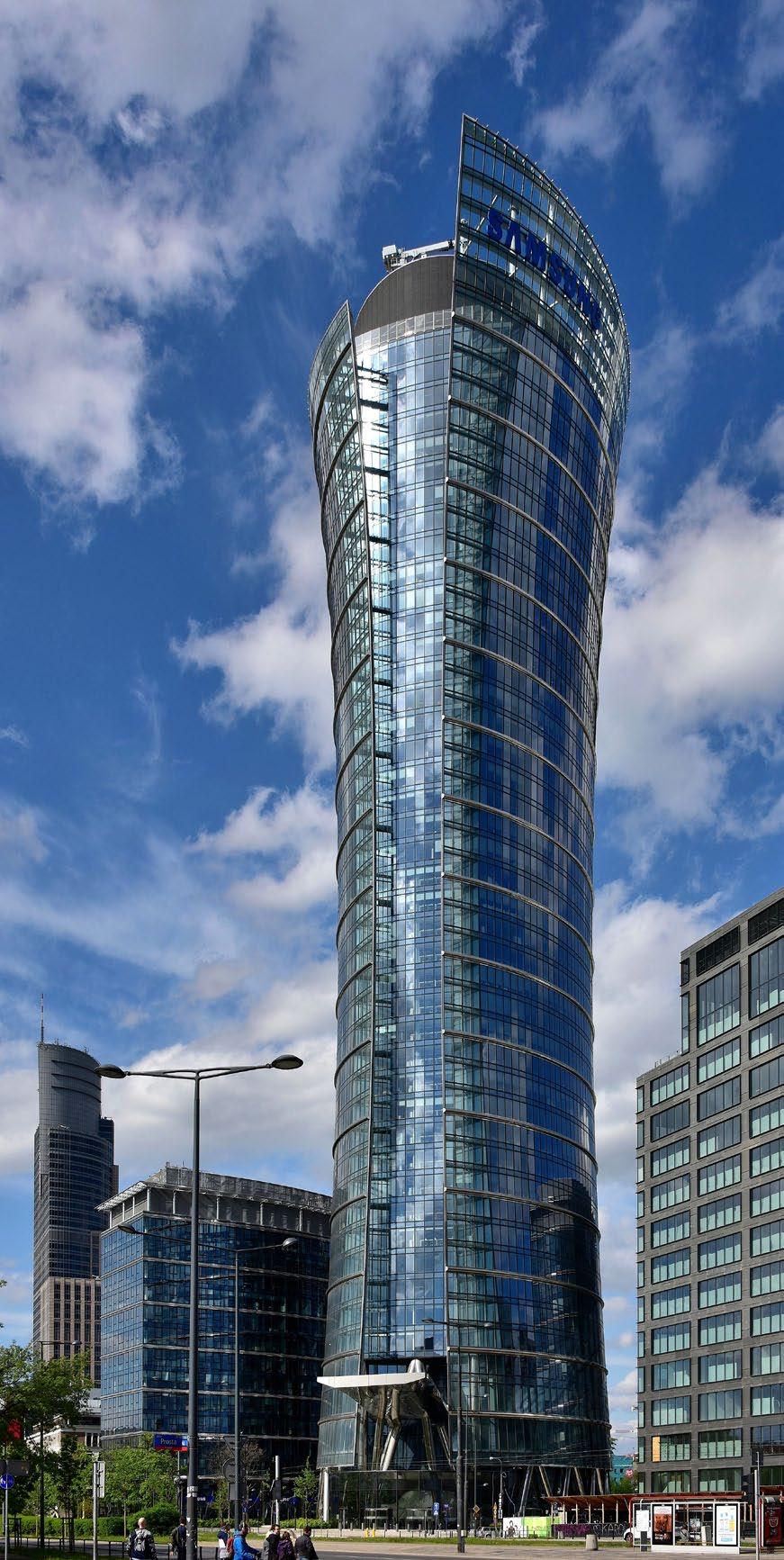
InterContinental Hotel: At 165m, Warsaw’s InterContinental Hotel is one of the tallest 5-star hotels in the world, and features the highest swimming pool in Europe at 150m. Open to non-guests, go have a swim in the clouds.QE-8.
Centrum LIM/The Marriott: The Marriott’s Panorama Sky Bar on the 40th floor of this veteran skyscraper (completed 1989) offers a liquid view to the city. Although the drinks are among Wawa’s most expensive, this is one of the city’s most accessible views.QE-9.
Warsaw - THE HUB: Completed in 2020, this complex consists of two 130m buildings and an 86m building. For great views, head up to the bar on the 21st floor - The Roof (p.89).QC-8.
Atlas Tower: 119m tall and completed way back in 1999, the locals think this one looks like a porta-loo, but the 27th floor features one of the best luxury roof clubs in the world, Level 27. The building is also home to the Invisible Exhibition (p.63). QE-9.
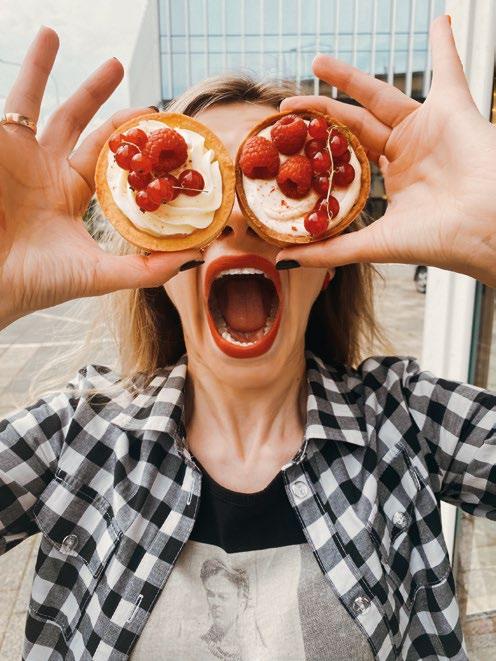
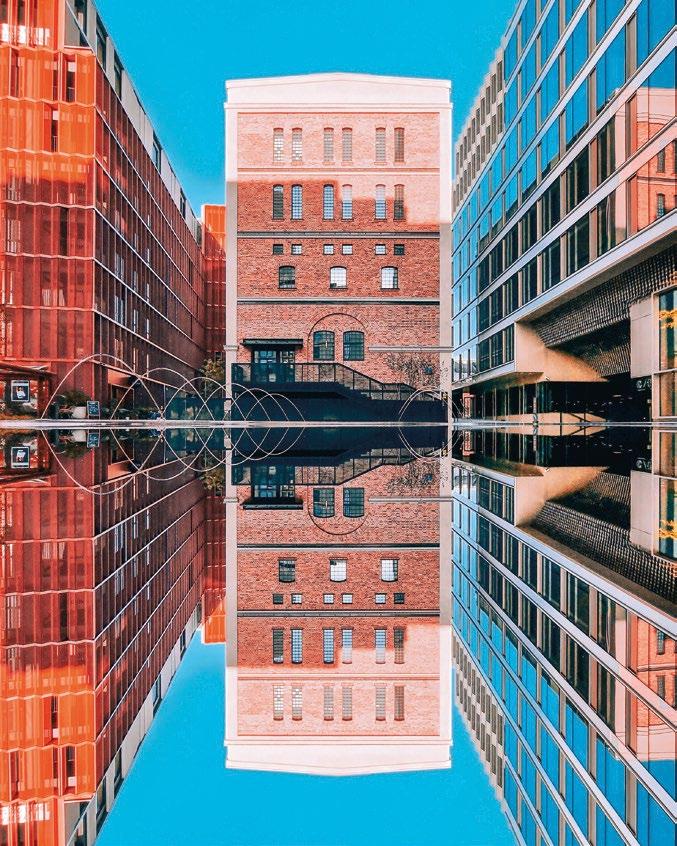
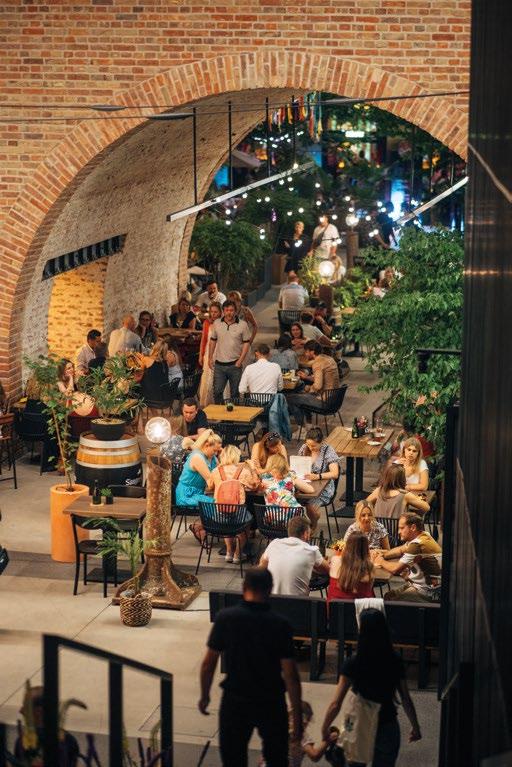

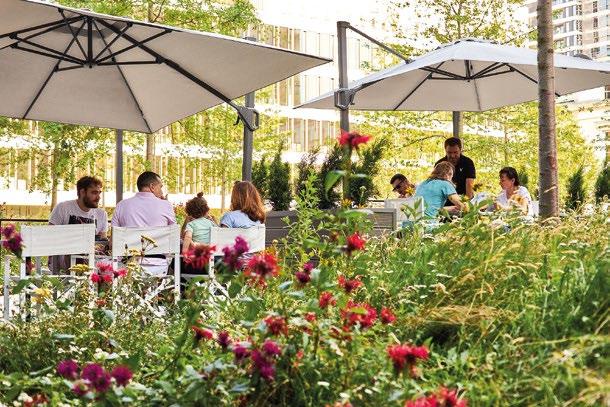
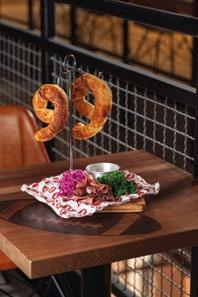
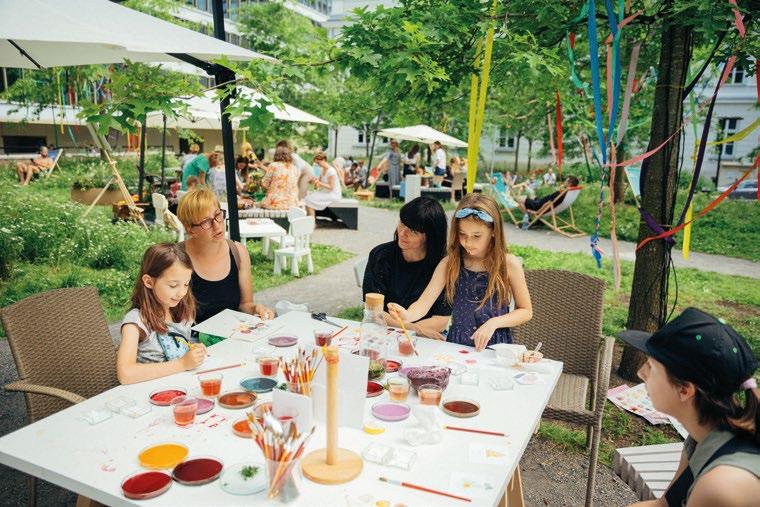

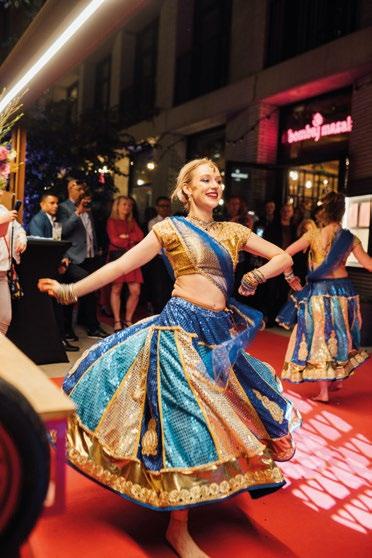
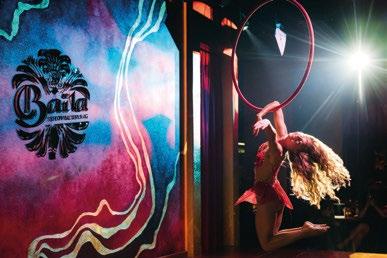
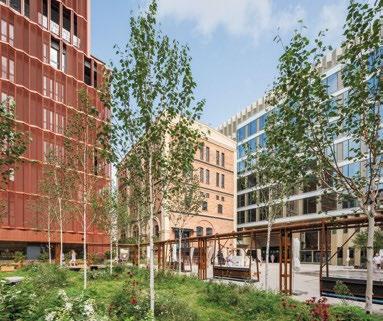
A labyrinth of winding cobblestone streets, ornate tenement facades and picturesque plazas, it’s easy to understand why the Old Town is Warsaw’s top tourist area. A window into the ‘once-upon-a-time’ when Warsaw was a pearl of European architecture, the Old Town was actually entirely rebuilt after WWII. Today it stands as a stunning testament of Varsovians’ great pride in their city, and its rise from the ruins. If you have only one day in Warsaw, you should spend part of it here.
In the devastating aftermath of the Warsaw Uprising (p. 68 ), 85% of the city’s left bank lay in ruin, half of its population had perished, and the Old Town was a smouldering wasteland. To their credit the Capital Reconstruction Bureau immediately started rebuilding the historic centre using pre-war sketches, paintings and photographs. The first phase of reconstruction was completed in 1953, but works continued in the following decades, finally concluding with the opening of the Royal Castle in 1984. Although what you see today is not strictly ‘original’ per say, its inclusion on the UNESCO World Heritage List speaks volumes of its authenticity and the effort required to recreate it.
IYP’s Old Town Walking Tour leads you in and around the oldest part of the city, showing you its most important and interesting points, beginning and ending near Plac Zamkowy (Castle Square) - the traditional entrance to the district. The prescribed route covers only about 1.5km. If you’re only interested in the exercise, it could take less than 30mins, but we reckon for most, an exploration of Warsaw’s Old Town will take several hours ‘if done correctly’ - that is, with a couple of short culture, food and coffee/beer breaks. Make sure you’ve got a full charge on your smartphone or camera, some comfy shoes and off you go.
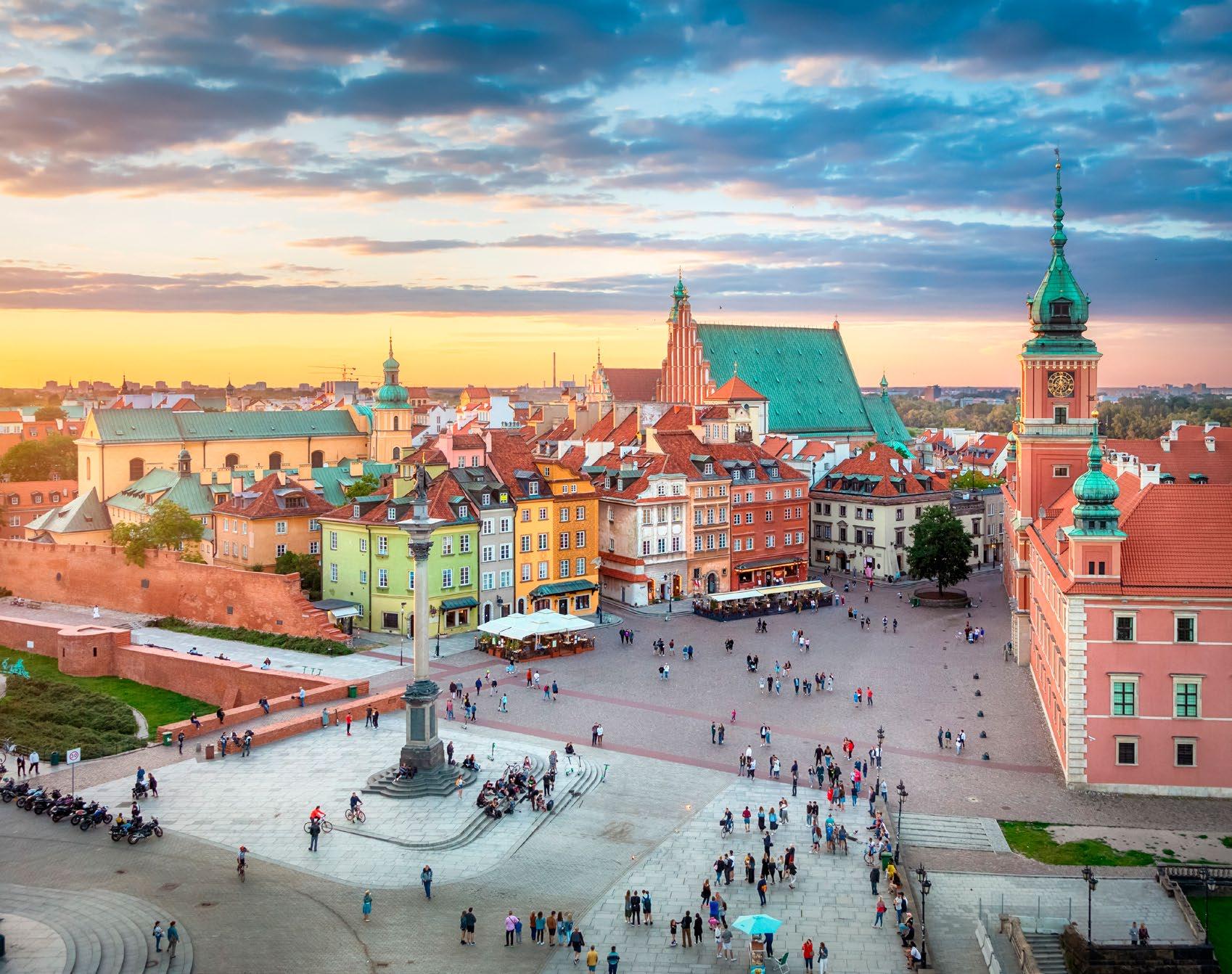
Most visits to the Old Town begin on Plac Zamkowy (Castle Square), the busy plaza where Warsaw’s medieval centre (to the north), meets the thoroughfare of its Royal Route (to the south), in the shadow of the Royal Castle More of a triangle than a square, there isn’t a more popular meeting place in the city, and not a minute of the day when the steps of King Sigismund’s Column aren’t besieged by dating couples, schoolkids and skateboarders. A lot happens here, whether it’s a steady flow of locals and tourists out for a stroll, political demonstrations or street performers plying their trade.
As for the famous column, it honours the man who in 1596 moved the Polish capital from Kraków to Warsaw - King Sigismund III Vasa 22 metres tall, it was erected in 1664 by his son, Władysław IV. Local legend asserts that Sigismund rattles his sabre whenever Warsaw is in trouble, an occurrence first reported during the 1794 Kościuszko Uprising and again during WWII. With the Warsaw Uprising in full swing the column took a direct hit from a tank shell and came crashing down. Amazingly Sigismund survived, losing only his sword, and was returned to his new perch in 1949. The remains of the original column can be seen nearby beside the Royal Castle. Also note that there is a tourist information office located here at number 1/13 (open everyday 10:0016:00).QF-4, Plac Zamkowy, MRatusz Arsenał.
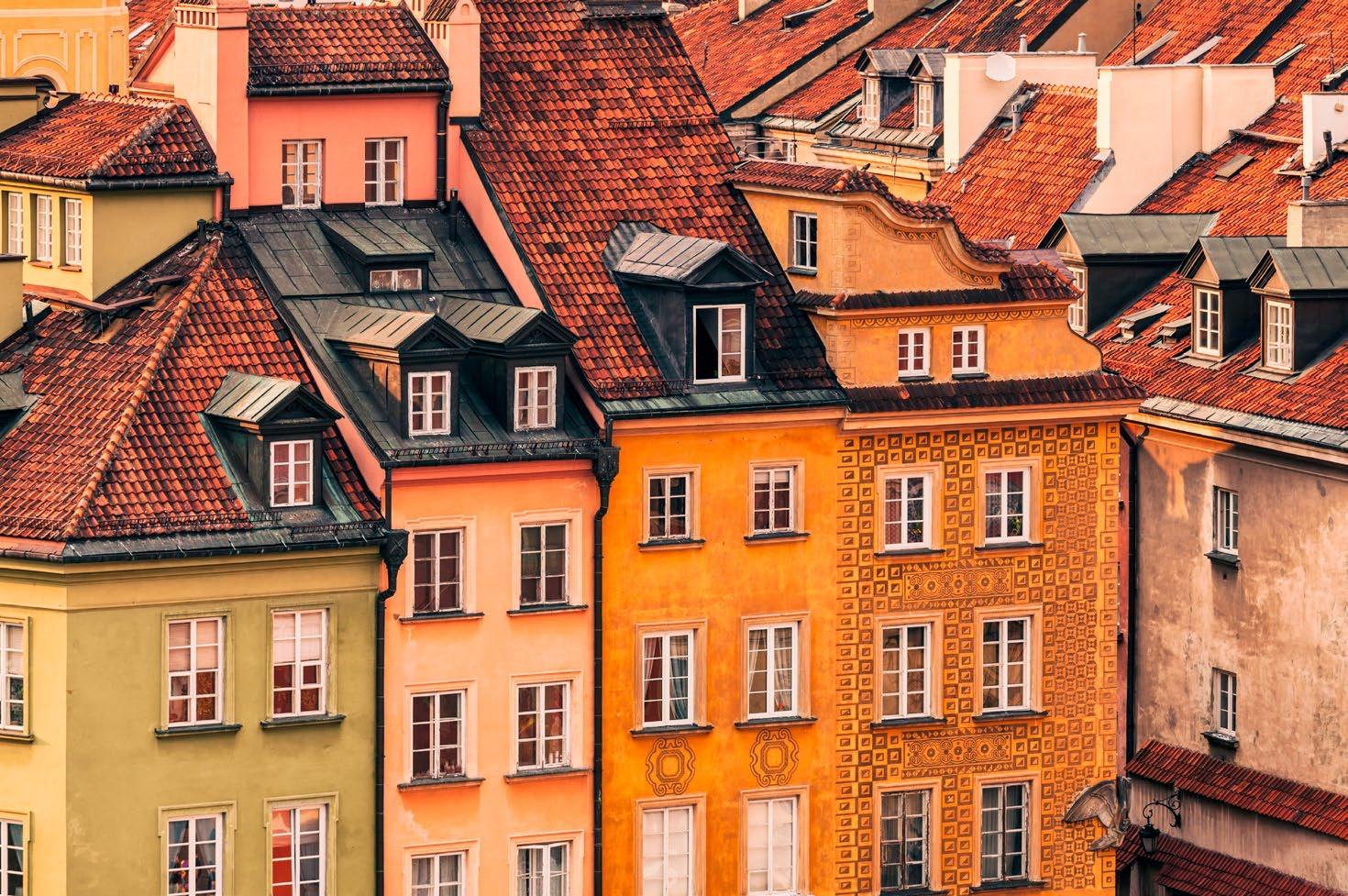
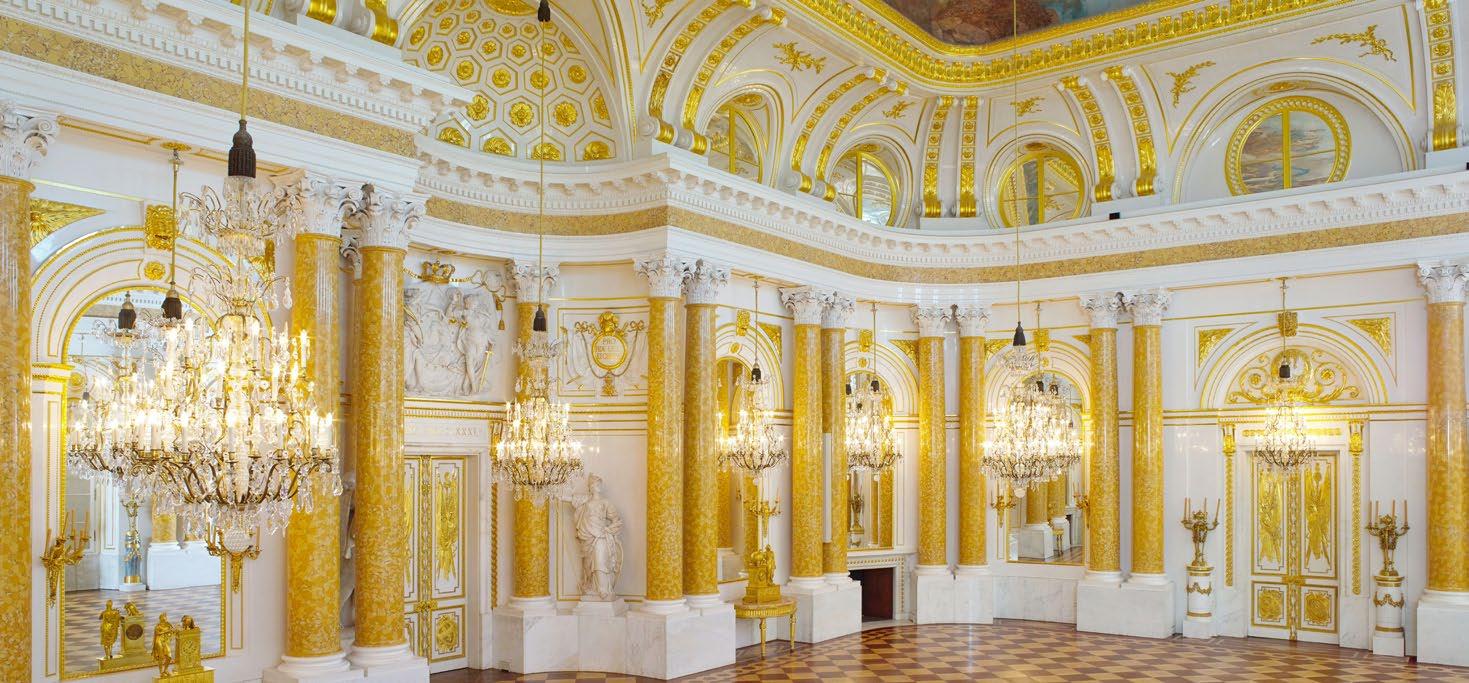
Once again the pride of Warsaw, this palace was reconstructed from a pile of rubble at incredible cost between 1971 and 1984. Much of the furniture was donated by communist-era cohorts such as the GDR and USSR, and much of the money came via generous donations from exiled Poles. Dating back to the 14th century, the castle has been the residence of Polish kings, presidents and the seat of Parliament. Some of the halls are purported to be haunted by a ‘white lady,’ whose ghostly appearance portends disaster. Those who plonk down for admission will have plenty to see, beginning with the Kings’ apartments and chambers, heavily adorned with paintings of famous Polish moments and maps from the days when the kingdom stretched from the Baltic to the Black Sea. The apartments of Prince Józef Poniatowski (aka the ‘Tin-Roofed Palace’) are also open to the public, though a separate ticket is required (30/20zł, open Wed, Sat, Sun only), and a chapel boasts an urn containing the heart of Polish hero and freedom fighter Tadeusz Kościuszko. The Houses of Parliament can also be seen, as can the opulent Great Assembly Hall. The free basement exhibition ‘From Destruction to Reconstruction’ details the castle’s resurrection after WWII rendered the place a pile of rubble, while the east-wing also contains the Gallery of Masterpieces, which has works by Rembrandt (separate ticket required, 40/30zł). Lastly, if you aren’t in the mood to explore the interiors, you must at least check out the gloriously free French Baroque Royal Gardens behind the castle (upper garden open daily until 20:00, lower garden open daily until 22:00). Visiting time: 2hrs.
QG-4, Pl. Zamkowy 4, tel. (+48) 22 355 51 70, www. zamek-krolewski.pl. Open 10:00-17:00; closed Mon. TinRoofed Palace is open Tue-Sun, 10:00-17:00. Admission 50/40zł; kids and students with valid ID, 1zł; Wed free. U

This huge monument honours Jan Kiliński, a Warsaw cobbler who became the unlikely hero of the 1794 Kościuszko Uprising. Despite being wounded twice, Kiliński and his troop of peasants captured the Russian Ambassador’s Warsaw residence - an action that ultimately led to his imprisonment in St. Petersburg. Said to embody the Polish virtues of bravery and patriotism, his statue was erected in 1936 and originally located on Plac Krasińskich. In reprisal for an attack on the Copernicus Monument, Nazi troops hid Kiliński inside the vaults of the National Museum. Within days, boy scouts had daubed the museum with the graffiti ‘People of Warsaw! I am here, Jan Kiliński.’ After the war the cobbler was returned to his rightful place, before being relocated here in 1959.
Kiliński’s famed comrade and superior Tadeusz Kościuszko once lived nearby at Szeroki Dunaj 5; this wide street was formerly home to Warsaw’s fish market, while the narrow street running at a 90-degree angle, Wąski Dunaj, was the town’s Jewish Quarter during the Middle Ages.QF-4, ul. Podwale.
The first sections of Warsaw’s defensive walls date back to the late 13th century, and by the end of the 14th century they stretched 1,200 meters, enclosing an area of about 8.5ha, and included 8 towers and 4 city gates. The most famous of these now non-existent structures was the Krak ów Gate on Plac Zamkowy, and the Marshall’s Tower - the highest point in the defensive structures - near the corner of ul. Krzywe Koło and ul. Brzozowa. Already in the 15th century these defenses were deemed insufficient and a second, lower line of brick walls was built along today’s ul. Podwale at a distance of just 9-14m from the previous walls; a moat was dug in-between and the Barbican was built in 1548 as the final piece of the defenses. As Varsovians were already settling in numbers beyond the city walls, these fortifications quickly became obsolete and from the 17th century they were being demolished or incorporated into tenement buildings. Ironically it was the total destruction of the Old Town that allowed these walls to be rebuilt after WWII and today the space between the two historical brick ramparts forms a pedestrian promenade parallel to ul. Podwale known as ‘Międzymurzę.’ Along this pleasant route you’ll find many historical plaques and monuments, but you won’t see much of the Old Town centre, as the view is obscured by the high inner wall.QF-4, Międzymurzę Jana Zachwatowicza.

The communist authorities continually thwarted efforts to commemorate the Warsaw Uprising of 1944, though by the early 1980s cracks in their resolve were beginning to show. In 1983, this most poignant of all Uprising monuments was unveiled by the walls of the Barbican. Designed by Jerzy Jarnuszkiewicz and funded by collections undertaken by scouts, the bronze installation shows the figure of a boy soldier clutching a Sten gun and weighed down by an adult-sized helmet. Commemorating the children who served as messengers and frontline troops, the figure is inspired by the story of 13-year-old corporal Antek, himself killed in action close to the scene on August 8, 1944.QF-4, ul. Podwale.
Continue along the Old Town defensive walls to the Barbican, and on to the Old Town Square?
Or, duck out of the medieval walls and down ul. Kilińskiego, hanging a left on ul. Długa for a short <20min/1.5km walk to the POLIN Museum (D-4, p.67) via the imposing Warsaw Uprising Monument and lovely Krasiński Palace and Gardens (E-4)?
When it was rebuilt in the postwar years, Warsaw implemented a vision of its resurrected Old Town as a place of culture. Today it harbours a remarkable number of museums, so instead of just staggering around, gawking at the architecture - go inside and learn something. The two largest, most significant and most worth-visiting museums (in our opinion) are the Royal Castle (p.34) - where you’ll get a feel for the city’s lost grandeur, and the Museum of Warsaw, where you’ll learn its history. Depending on your interests, however, you may be interested in one of these smaller, more niche museums nearby.
Crowning the medieval defensive walls which once protected the northern entrance to the city, this fearsome rotund structure dates from 1548, and was built by architect Giovanni Battista Venetian on the site of an earlier city gate. Despite its intended use, the Barbican was only ever used in one fighting action when in 1656, during the Swedish deluge, Polish troops attacked to retake the city. In the 18th century, the Barbican was partially demolished and incorporated into new apartment buildings. As part of the Old Town’s reconstruction after WWII, the Barbican were restored. Today it serves as a bridge between the Old and New Town, and is also the hangout of choice for teenage drinkers, buskers and ‘artists’ selling their wares. For the record, this is the second biggest barbican in Poland - the biggest is that which is located in Kraków! From May onwards, pop inside to see the small exhibition put together by the Museum of Warsaw (open 11:0018:00, closed Mon; admission 6/4zł). QF-3/4.
Archdiocese Museum: Displaying both the sacred and profane, this surprising and underrated art museum has several creepy Beksiński paintings. More on p.62 Qul. Dziekania 1.
Museum of Dollhouses: Over 150 highly detailed historical dollhouses, plus various other minature settings, and antiquated toys. A good option for children!Qul. Podwale 15.

Centre: Go into these cellars for a deep dive on how Warsaw's Old Town went from ruin to the UNESCO List. Qul. Brzozowa 11/13.
Pharmacy Museum: Travel back in time to a charmingly antiquated interwar ‘apteka.’ Nominated for ‘European Museum of the Year 2022.’ .Qul. Piwna 31/33.
World of Illusion: More attraction than museum, but a nice reward for the kids, the exhibits will fool your eyes and you’ll go home with lots of fun photos. More on p.71.QRynek Starego Miasta 21.
Measuring 90 by 73 metres, the Old Town Square is Warsaw’s defining highlight, lined with richly decorated burgher houses whose design dates back to the 17th century. During the 15th century, the centre of the square was home to Warsaw’s Town Hall, though this was pulled down in 1817 and never replaced. The district was damaged during the 1939 invasion of Poland by Nazi Germany, though the occupiers would do far worse in 1944. In Hitler’s ‘Order for Warsaw’, a brutal counteraction in response to the Warsaw Uprising (p.68), the old town area was systematically bombed by approximately 1,600 tonnes of explosives. Following the end of hostilities, 85-90% of Warsaw had been completely destroyed, including the market square, where only a few facades remained. Plans for the future of the district varied from full restoration to clearing the rubble and rebuilding the city in concrete! Fortunately, the earlier option was pursued, specifically choosing the Warsaw of 1770 as its basis (This year was chosen because it was just before Poland was subject to gradual foreign occupation). In addition to salvaged materials that lay around Warsaw, other wartorn cities were purged of their rubble to get enough bricks for the reconstruction! Thus, many of the buildings you see in the old town market square may have once been in the walls of a tenement house in Wrocław or Elbląg!
Today, the square’s most famous feature is Warsaw’s best-loved monument and the city’s defining symbol - Syrenka . Designed by Varsovian sculptor
Konstanty Hegel, this iconic monumentn of Warsaw’s warrior mermaid dates back to 1855, and is actually an exact copy of the original, which can be seen in the Museum of Warsaw. Lined with souvenir shops, restaurants and cafes, at number 27 you’ll find Warsaw’s oldest and most prestigious restaurant, U Fukiera. (p.84) The facades hide a treasure trove of decorative elements - keep an eye out for our favourite, the ‘House Under the Lion’ at the southwest corner leading onto ul. Świetojańska.QF-4, Rynek Starego Miasta.
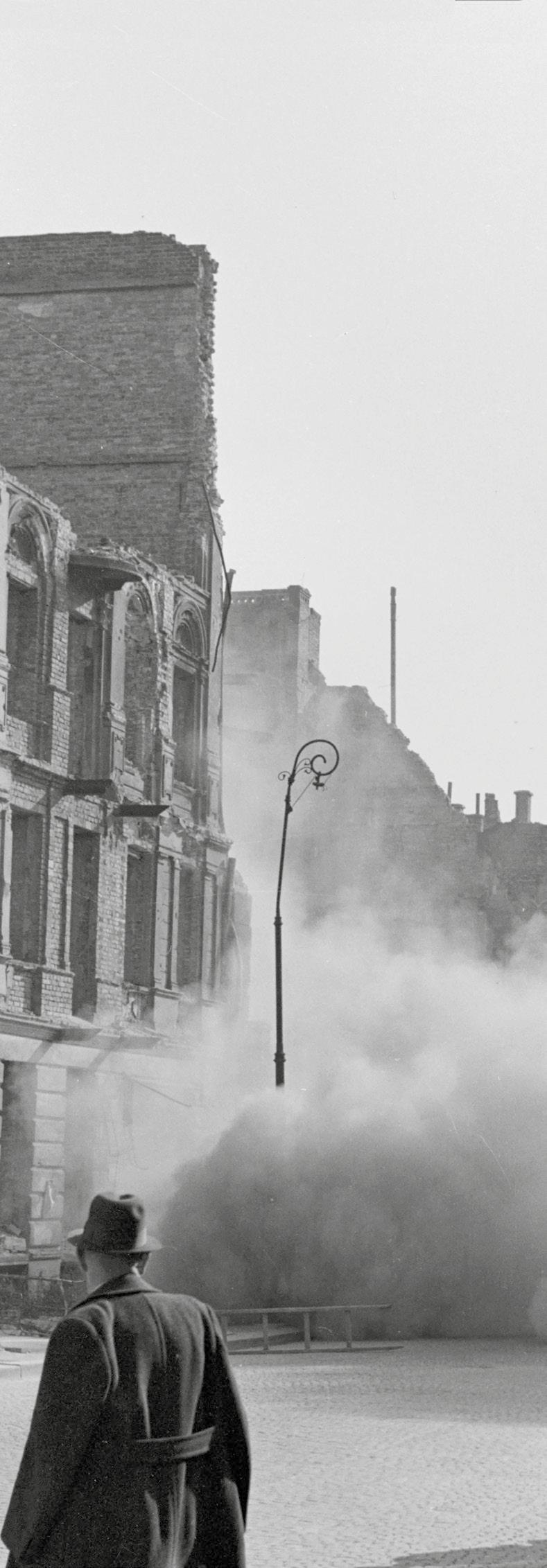
Found inside 11 conjoined historical tenements on the Old Town Square, this revamped museum’s permanent exhibit, ‘The Things of Warsaw,’ presents the city’s cultural history via 7,000 objects displayed over 21 thematic rooms. Included are portraits, postcards, souvenirs, packaging and other items with representations of the Polish capital or symbols like the Warsaw Mermaid - all of which contribute to a better understanding of the events that have shaped the Warsaw we know today. The history of the buildings themselves, which still retain many original elements, is also presented, and there’s also a bookstore, cafe and fabulous viewpoint overlooking the Old Town Square. Visiting time: 2-3hrs.QF-4, Rynek Starego Miasta 28-42, www.muzeumwarszawy.pl. Open 09:0017:00; Thu 09:00-19:00, Sat, Sun 11:00-18:00; closed Mon. Admission 20/15zł; Thu free. U6
Demonstrating how any foreign word sounds exotic when you don’t know the language, Gnojna Góra may sound like a charming place for a stroll in Warsaw’s Old Town. While it does have picturesque view of the Vistula River and the Praga district beyond, Gnojna Góra actually translates as ‘Dung Hill’ (or Shit Hill, depending on how polite you wish to be). For centuries, this was the dumping ground for all of the Old Town’s waste - chamber pots, food scraps, everyday rubbish, you-name-it. Continuing to grow over time into its distinctive shape, at one stage this enormous urban compost pile was actually renowned for its healing properties - people with obscene amounts of money would come here to be buried up to their necks in rubbish in a supposed cure for syphilis. Today, its a top piece of trivia and an enduring monument made of literal crap in the midst of Warsaw’s UNESCO-listed Old Town!QG-4, ul. Brzozowa. From here head back towards the centre via ul. Dawna, whose trademark blue archway is one of the most picturesque sights in the city, then swerve onto ul. Kanonia
Warsaw’s Old Town is full of restaurants and bars, but as this is literally the most touristy part of the city, the quality varies. When it’s time to take a break, here are a few places that are worth the money and worth seeking out.

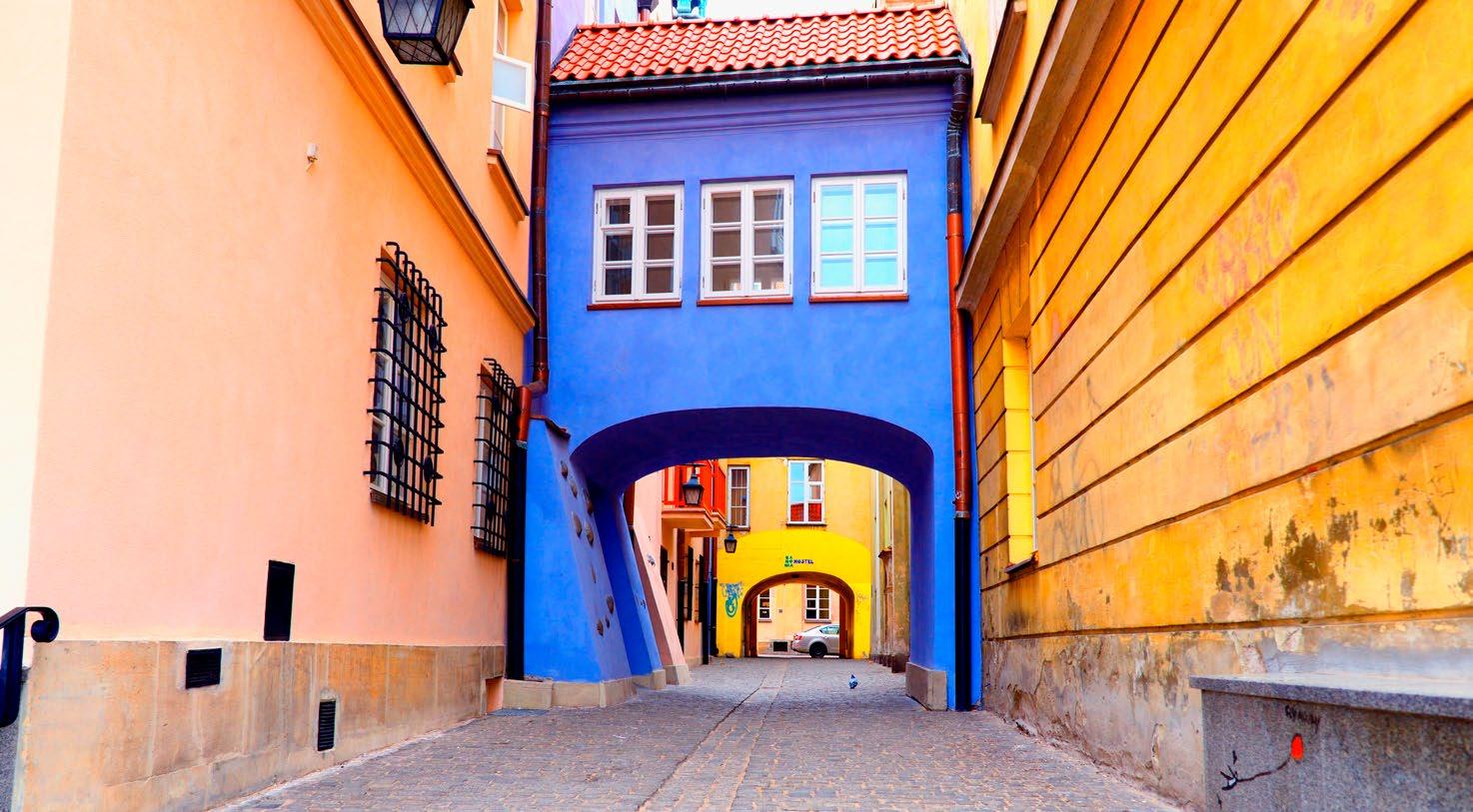
U Fukiera: Adhering to tradition with extravagant flair, this famous restaurant on the Old Town Square offers an exceptional dining experience. More on p.84 QRynek Starego Miasta 27.
To Lubię: Just steps north of the Barbican, this small cafe is the perfect place to stop for a coffee or something sweet, and they serve breakfast all day. More on p.77.Qul. Freta 8.
Ciao Napoli: Authentic Neapolitan pizza (the best in town?), fresh seafood and happy hour specials make this affordable franchise deservedly popular. More on p.79 QWąski Dunaj 4/6/8.
U Barssa: This classy restaurant brings a refreshing refinement to the Market Square with traditional Polish cuisine. Try their signature ‘Duck a la Barssa’ More on p.81 QRynek Starego Miasta 12/14.
Bar & Books: Open after 17:00, drop in this sophisticated, dimly-lit cocktail and whisky bar for an evening drink, and maybe catch some live music on weekends.Qul. Wąski Dunaj 20.
Once the site of the oldest cemetery in Warsaw, Kanonia Street takes the shape of a small square, at the centre of which is a cracked Cathedral bell dating back to 1646. Cast by artisan Daniel Tym (who also made the statue of King Sigismund III atop the famed column), the bell never actually rang at St. John’s Cathedral next to it, but it has developed its own legend: touch the top of the bell while walking its circumference and your wish will come true. Across from the bell is one of the world’s most narrow houses at number 20/22. Only 2m across, it was designed to evade property taxes, which in the 18th century (when it was built) were calculated based on the width of the facade facing the main street. Also note the covered walkway nearby, which links the Cathedral to the Royal Castle and was built after a failed assassination attempt on Sigismund III. The attacker, who succeeded in striking the King
twice with a pickaxe before being overpowered, was subsequently dealt with using the most medieval means imaginable: stretched by four horses, he was quartered with an axe; his body was then burned, and the ashes fired from a musket so as to disperse them in the air. This was all done in public, of course, at the city’s execution place, a few blocks away at the end of ul. Piekaska.QG-4.
Originally built in the 14th century, St. John’s is steeped in history. The last king of Poland, Stanisław August Poniatowski, was crowned and eventually buried here, and in 1791 he also declared the Constitution of May 3 inside the building. The bodies of Henryk Sienkiewicz (writer), Gabriel Narutowicz (Poland’s first president) and various Mazovian knights are just a few of those eternally resting in the cathedral’s crypt (open Mon-Sat 10:00-17:00, Sun 15:00-17:00, closed during mass; admission 5/3zł). It was the scene of heavy fighting during the 1944 Warsaw Uprising (p.68) and was subsequently left in a heap of ruins before being rebuilt in pseudogothic style. On the external wall by the main entrance are fragments of a Borgward IV - a remotecontrolled tank used by the German army.
Today, St. John’s remains as the main place of worship of the Archdiocese of Warsaw and is, of course, considered one of Poland’s most important cathedrals. QF/G-4, ul. Świętojańska 8, www.katedra. mkw.pl. Open 06:00-20:00; Sun 07:00-22:00.
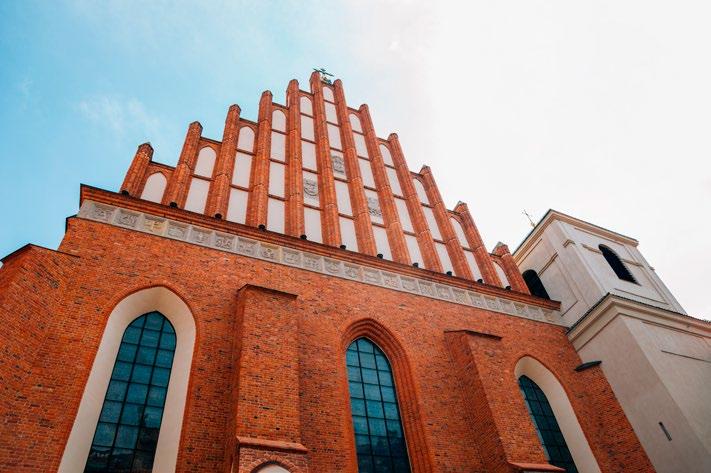
Circling back to Plac Zamkowy you can either carry on down the Royal Route (turn the page), or circle round the back of the Royal Castle for a walk through the free gardens and down along the riverbank towards Powiśle (p.46).

Warsaw’s famed ‘Royal Route’ links the city’s three Royal residences, starting from the Royal Castle (p.34) on Plac Zamkowy, via Łazienki Park’s Palace on the Island (p.52), en route to Wilanów Palace (p.55) in the district of the same name. Officially covering 11km in length, this main artery through the city takes in a great many of Warsaw’s historical buildings, parks and monuments along the way, making a trip down at least part of the ‘path of the kings’ - be it on foot, by bike, or motorised scooter - a fine opportunity to see the heart and soul of the capital.
In lieu of the full 11km traverse, this walking tour picks up at the end of the Old Town Walking Tour (p.32) on Plac Zamkowy and guides you gently down Warsaw’s two main high streets - ul. Krakowskie
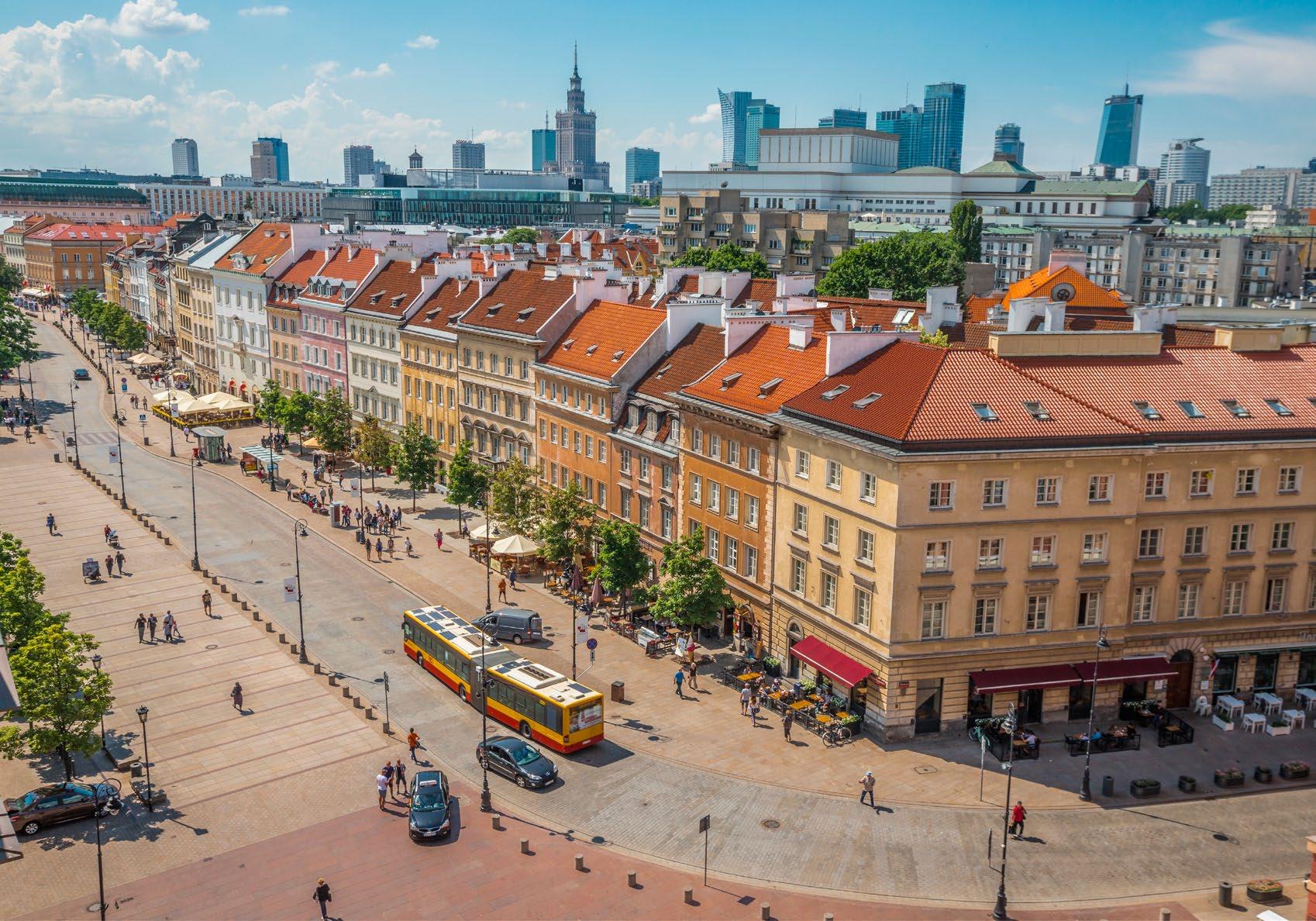
Przedmieście and ul. Nowy Świat - to the ironic/ iconic Palm Tree fittingly at the intersection of Al. Jerozolimskie (Jerusalem Street). An easy 2km/20mins on foot, along the way or very nearby you’ll find many wonderful restaurants, cafes, bars and shops, so use the rest of our guide to plan your pit stops. In the ‘Choose Your Adventure’ box at the end of the tour (p.44), you’ll find info on how to continue on the Royal Route to Łazienki and Wilanów (while resting your feet) should you choose to, or advice on how to veer off towards other interests.
St. Anne’s survived the war with a few token scratches and a bombed-out roof, but what the Nazis failed to destroy was very nearly demolished in 1949 when the careless construction of the nearby Trasa W-Z tunnel led to landslides and huge cracks in the floor of the church, which threatened to collapse; it took 400 people two weeks to stabilise the foundations. Intriguingly, this wasn’t the first time St. Anne’s had survived war to find disaster around the corner. Escaping destruction during the Swedish Deluge (1655-1660), the church was the victim of arson only two years later. The classicist façade dates from 1788 and the interior holds even more classicist and rococo details. The real reason to visit, however, is the splendid viewing tower, the views from which are worth the 147-step climb (open
10:00-18:00; Sat, Sun 11:00-18:00; 10/7zł). One other point of interest concerns a simple wooden cross in the Loreto Chapel. To learn how these two planks of wood nearly ripped the country apart in the summer of 2010, see our online piece on the Presidential Cross: iyp.me/71061 QG-4, ul. Krakowskie
Przedmieście 68, MRatusz Arsenał, www.swanna.waw. pl. Open 07:00-18:30; Sat 15:00-18:30; Sun 10:00-21:00.

Patriot and poet Adam Mickiewicz (1798-1855) is Poland’s greatest literary hero. Known as the ‘Father of Polish Romanticism,’ his epic poems and dramas served as inspiration for insurrections against the imperial powers that had partitioned Poland out of existence in the late 18th century.
Born to an upper class Polish family in what is today Belarus, Mickiewicz attended university in Vilnius, where he began publishing his poems and became involved in political activities against imperial Russia, which now occupied the former territory of the Polish-Lithuanian Commonwealth. These activities saw him exiled to Russia in 1824, but Mickiewicz was able to leverage connections he made in the salons of Moscow and St. Petersburg to escape to the west in 1830, eventually settling in Paris. A champion of freedom, he died during a cholera outbreak in Turkey, while recruiting a Polish legion to fight the Russians in the Crimea in 1855. His body today lies with those of the Polish kings in Kraków’s Wawel Cathedral. To learn more, visit the Adam Mickiewicz Museum of Literature on the Old Town Square (F-4).
This monument was first unveiled in 1898 on the 100th anniversary of Mickiewicz’s birth. Sculpted by Cyprian Godebski, the monument was destroyed by the Nazis, however, after WWII, Polish soldiers recovered Mickiewicz’s head and other demolished parts in Hamburg. Sculptor Jan Szczepkowski was able to produce a copy of the original sculpture, which was unveiled, along with its restored surroundings, in 1950.
QG-5, ul. Krakowskie
Przedmieście
21-23, MNowy ŚwiatUniwersytet.
Guarded by lions and stern-looking soldiers, of all the landmarks that line Krakowskie Przedmieście, none is more important than the Presidential Palace. Construction began in 1643 at the behest of Stanisław Koniecpolski, though was only completed after his death. It then passed into the hands of various aristocratic families, becoming famed for its banquets in the 18th century - the most extravagant of which marked the coronation of Stanisław II August Poniatowski in 1789; over 2 million PLN was spent entertaining the 4,000 guests.
Poniatowski proved to be one of the nation’s most controversial monarchs - and also its last. Among his successes was the Constitution of May 3, 1791 Signed on these very grounds, it was the 2nd such document in the world, after the US Constitution. The large monument in front of the Palace is of the king’s nephew, Józef Poniatowski A Polish general, he defended Warsaw during the Kościuszko Uprising and eventually died in the service of Napoleon.
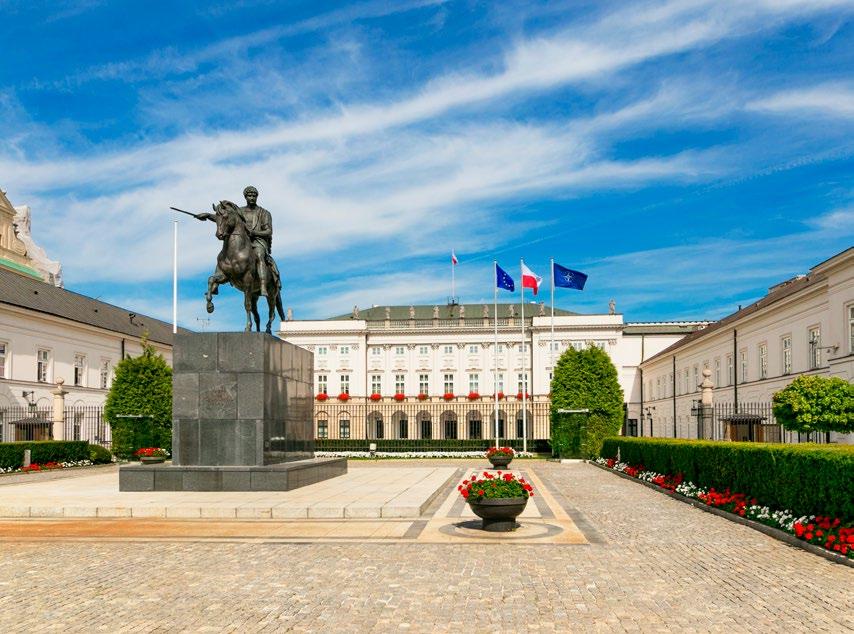
After 1818 the Palace became the seat of the Viceroy of the Polish Kingdom, entertaining many a visiting Tsar before burning down in 1852. Rebuilt and frequently remodelled, at the beginning of the 20th century an entire wing was demolished to make way for the Hotel Bristol. When Poland regained its independence in 1918 the Palace was commandeered to serve as home for the Prime Minister, and somehow it survived WWII. More momentous events came in 1955 when the Warsaw Pact - the Soviet Union’s answer to NATO - was ratified within its walls. Since 1994 it has served as the official home of the Polish president (currently Andrzej Duda), which is why you’ll find streams of limos heading in and out, and square-jawed soldiers pointing their weapons at anyone who strays too close.QG-5, ul. Krakowskie Przedmieście 46/48, MNowy Świat-Uniwersytet.
Carry on down the Royal Route? Or perhaps hang a right after the Hotel Europejski down ul. Tokarzewskiego-Karaszewicza towards Plac Piłsudskiego (p.24)? Choose the latter to see Warsaw’s largest square and escape the urban hub-bub via the lovely Saxon Garden, a stroll through which leads you into the City Centre (p.24) and on a path to Hala Gwardii and Hala Mirowska (p.24) - two massive indoor markets 1520mins on foot from where you’re standing.
Two of the biggest, most famous landmarks on prestigious ul. Krakowskie Przedmieście are former palaces turned luxury hotels today. The first is Hotel Bristol (Qul. Krakowskie Przedmieście 42/44). First built in 1900, a brass plaque outside boasts of its many famous guests: Picasso, Nixon and Dietrich, to name but a few. The restored interior by world-renowned designer Anita Rosato blends secessionist and art deco glamour with modern luxury. Across the street is the revamped Raffles Hotel Europejski (Qul. Krakowskie Przedmieście 13). The first hotel to re-open after WWII, it entered Varsovian folklore in 1967 when a group of young upstarts calling themselves ‘The Rolling Stones’ stayed here, under the watchful eye of the authorities. By all accounts, they kept themselves busy tipping back vodkas in the hotel bar!QG-5
Warsaw Uni’s main campus lies behind the grand gateway at ul. Krakowskie Przedmieście 26/28. Dating from the 17th century the main building, known as ‘Villa Regia,’ was remodelled and renovated several times before the university was established here in 1816. The uni had a tough time under Russian rule; closed in retaliation for the 1830-31 Uprising the university continued to operate underground, though by 1859 the Tsar calmed down enough to rubber stamp the creation of a School of Medicine. Today, with some 48,000 students on the roll call, the university stands out as the largest and arguably best in Poland. Notable alumni include former Israeli premier Yitzhak Shamir, writers Witold Gombrowicz and Ryszard Kapuściński, and late Polish president Lech Kaczyński QG-6, Krakowskie Przedmieście 26/28, MNowy Świat-Uniwersytet, www.en.uw.edu.pl.
No Chopinologist can leave Warsaw without first visiting the final resting place of his heart. Added to the church in 1882 his heart was sealed in an urn and then placed behind a tablet bearing his likeness specially carved by Leonardo Marconi. As for the church itself, it originally dates from the 15th century when a small wooden chapel stood on the site. Destroyed during the Swedish Deluge of the 1650s, the church was finally rebuilt in 1696, with numerous additions and decorative touches to follow over the years. Throughout history the church has played its role in Warsaw’s glories and calamities. It was here that the last Polish King forged the Order of the Knights of St Stanislaus, and it was directly outside in 1861 that Russian troops brutally suppressed a patriotic protest. It was this bloodbath that lit the touchpaper for the January Uprising of that year. Devastated during the Warsaw Uprising in 1944 the church was painstakingly rebuilt at the end of the war and is today a feast for the heart, eyes and soul. The organ (built in Salzburg in 1925) is the largest in Warsaw, and other points of note include an urn with the remains of Nobel Prize winning author Władysław Reymont, and tablets honouring various Polish icons including poet Juliusz Słowacki and WWII hero Władysław Sikorski QG-6, ul. Krakowskie Przedmieście 3, MNowy Świat-Uniwersytet, tel. (+48) 22 826 89 10, www.swkrzyz.pl. Open 10:00-11:00, 13:0016:00; Sun 14:00-16:00.
The founder of modern astronomy. A sheltered academic, Copernicus made his observations alone, a century before the invention of the telescope. His book De Revolutionibus (1543) posited that the earth rotated on its axis once a day, travelled around the sun once a year, and that man’s place in the cosmos was peripheral. Though obvious today, this was an utterly radical idea at the time. Although those who propagated his ideas were burned at the stake and the Catholic church placed De Revolutionibus on its list of banned books (as late as 1835), there was no turning back progress. The modern cosmological view - that our galaxy is one of billions in a vast universe - is this man’s legacy. The statue itself was unveiled in 1830 and has seen its share of adventure. During WWII the Nazis placed a new plaque here insinuating that the great man was in fact - gasp! - a German. A boy scout named Alek Dawidowski ducked the guards and removed the plaque. Boiling with fury, the Nazis removed the monument, then dynamited a few others for good measure. The statue was recovered after the war, and Dawidowski entered Polish folklore for his bravery.QG-6, ul. Krakowskie Przedmieście, MNowy Świat-Uniwersytet.
After crossing Świętokrzyska, Krakowskie Przedmieście becomes Nowy Świat (G-7)Home to numerous bars and eateries, in addition to those below, you’ll find many more on the trendy side streets of ul. Chmielna and ul. Foksal
Blikle Café: Famously patronised by Charles de Gaulle, this classy, august venue offers breakfast, lunch, ice cream and outstanding desserts that are part of Warsaw folklore..Qul. Nowy Świat 33.
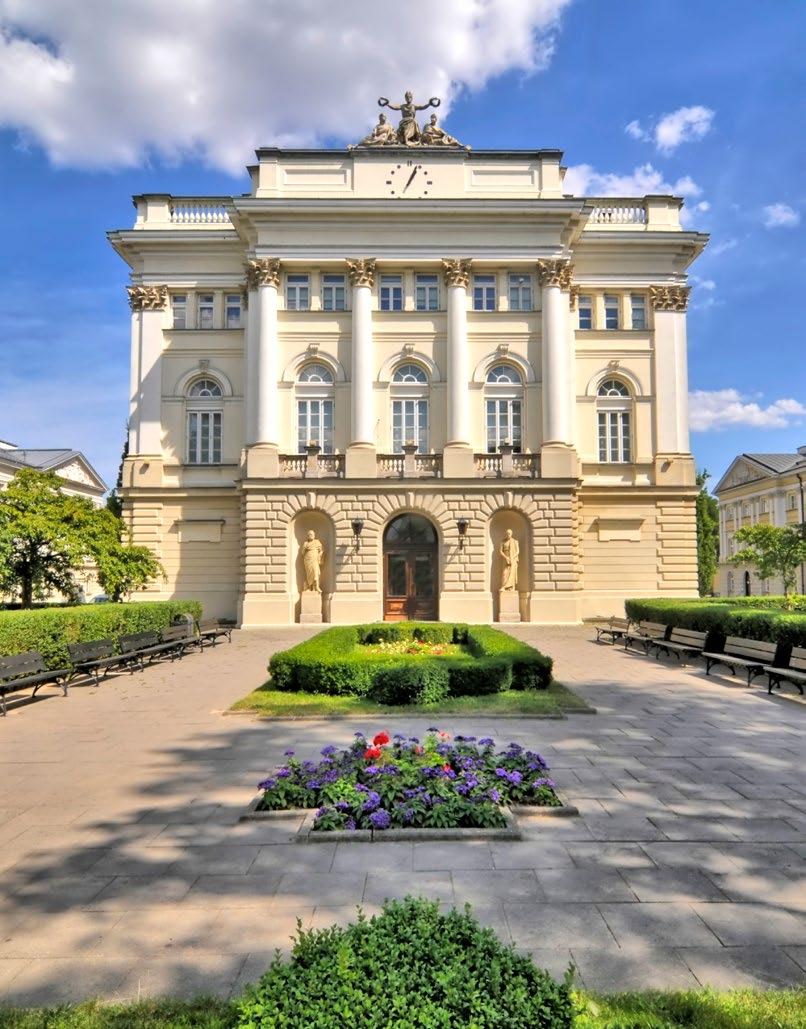
Tehran: Experience the specialties (mutton, lamb) and exotic flavours (mint, rose, saffron) of Iran in this colourful eatery that exudes good energy. More on p.81 Qul. Gałczyńskiego 9.
Tokyo Sushi: A great pit stop with great value across their huge menu of sushi rolls, salads, ramen and hot dishes. More on p.75Qul. Nowy Świat 50.
Gościniec Polskie Pierogi: Some say “the best dumplings in Warsaw” are here. Traditional Polish cuisine with an interior setting to match! More on p.80 Qul. Nowy Świat 41
From the Palm Tree, Warsaw’s ‘Royal Route’ continues another 10km, past the Ujazdowski and Łazienki Parks, before it ultimately ends at Wilanów Palace - the 17th century private residence of King Jan III Sobieski. While a walking tour of the remaining 10km isn’t realistic or especially rewarding, Łazienki (p.50) and Wilanów (p.54) are both required for getting a broader sense of Warsaw’s former glory as the grand capital of a vast and wealthy commonwealth stretching from the Baltic to the Black Sea. You can easily continue your tour to either from the Foksal 01 bus stop on ul. Nowy Świat. To get to Łazienki Park, simply hop on bus numbers 116 or 180 and get off three stops later at ‘Łazienki Królewskie.’ For Wilanów, take the same numbers, or catch the direct E-2 bus; get off at ‘Wilanów.’ Use warsaw.jakdojade.pl for live public transit connections.
If your’re not worn out, heading 300m down charming ul. Ordynacka (G-7) leads you direct to the Chopin Museum (currently closed), where you’ll connect with our Powiśle district tour (p.46).
Alternatively, head west down pedestrianised ul. Chmielna - through the new Plac Pięciu Rogów (p.27) and past many a bar and restaurant - to reach the Palace of Culture (p.21) in about 10mins.
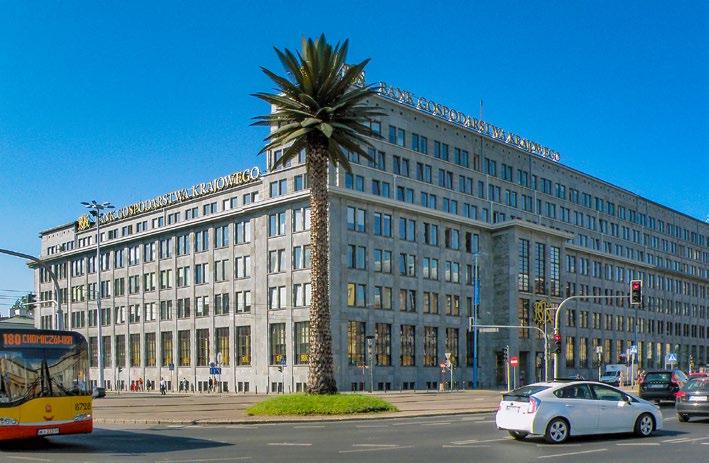
Of course you can always backtrack to the Metro to make a shortcut to the River Boulevards (p.47) or onward to Praga (p.56). Decisions!
Poland’s greatest composer, Fryderyk Chopin (1810-1849) was born 50km west of Warsaw, moving to the capital with his family as a baby. A prodigy from the start, he came to fame here before being exiled at age 20 due to the November Uprising of 1830. Walking down Warsaw’s Royal Route, Chopin-related sites are in abundance, most notably the interactive multimedia experience of the Fryderyk Chopin Museum (p.46) and the Holy Cross Church (p.43). Also, keep an eye out for several ‘Chopin Benches’ which explain the history of relevant sites and play a burst of the composer’s music at the touch of a button.

Live Chopin recitals are a popular tourist activity in Warsaw, and there are two points along the Royal Route where you can attend one. The first is Chopin Point on Plac Zamkowy (F-4, ul. Krakowskie Przedmieśćie 87/89; Fri-Sun only at 19:00, 90/65zł), the second is Chopin Salon on ul. Smolna 14/7 (H7, every day at 19:00, 60/40zł). From 15th May until the end of September, you can catch one of two FREE outdoor recitals at the Chopin monument in Łazienki Park (p.51) on Sundays at 12:00 and 16:00.
Wondering what a giant palm tree is doing in the middle of this roundabout? Modern art, my friends! In this case, a project called Greetings from Jerusalem by Polish artist Joanna Rajkowska, who, during a trip to Israel, was struck by the brainwave of sticking a palm tree in the Polish capital to give it some sunny cheer (in the most ironic way possible). The palm tree is actually a steel column specially designed to bend in the wind, covered with natural bark and leaves made from polyethylene. Quite popular, the permanent installation reminds us of all the beautiful and exotic places we could be instead.QG-8,
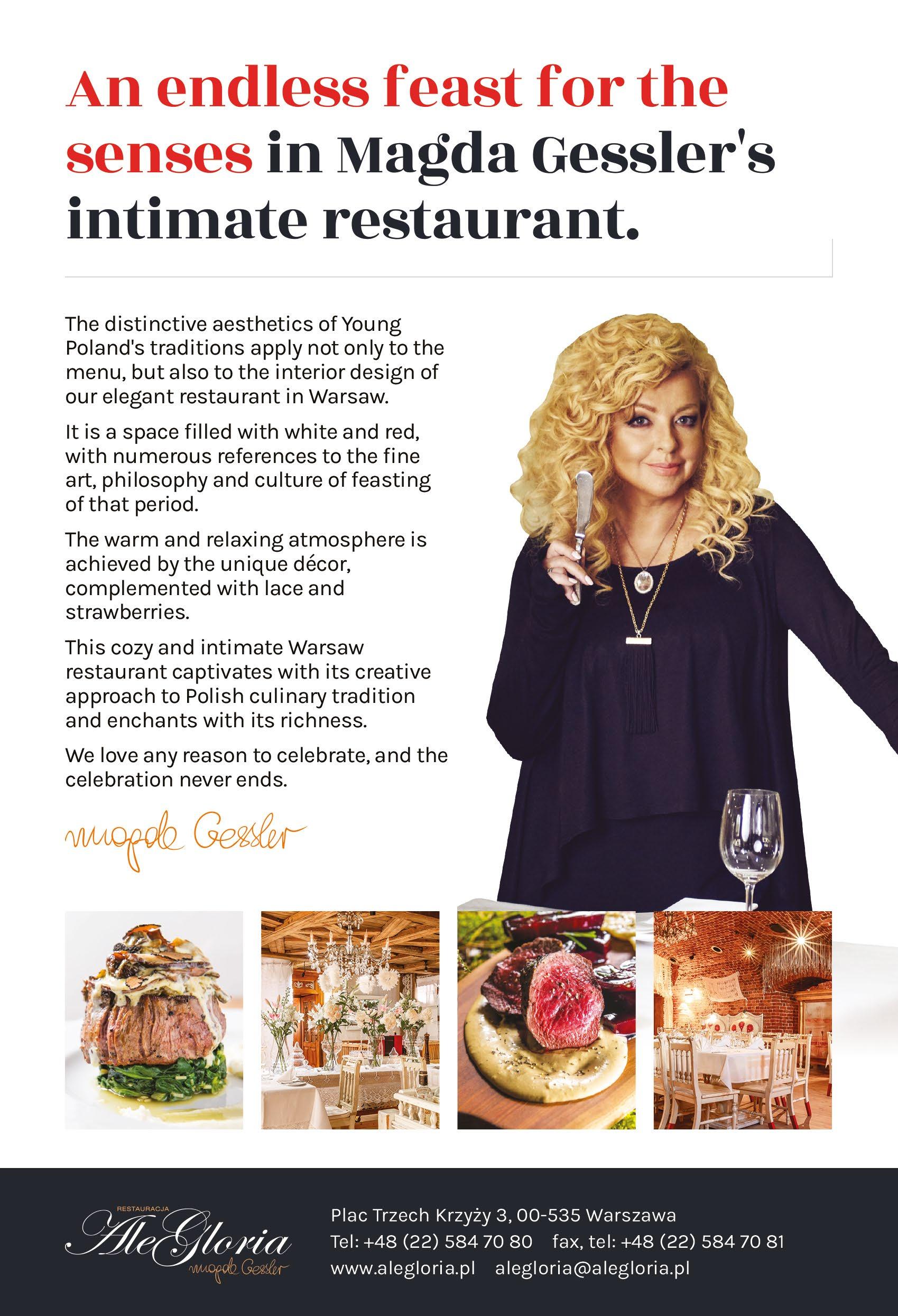
Once a mundane area of apartment blocks and industrial decay, over the past two decades Powiśle has transformed into one of Warsaw’s most intriguing and eclectic areas to explore.
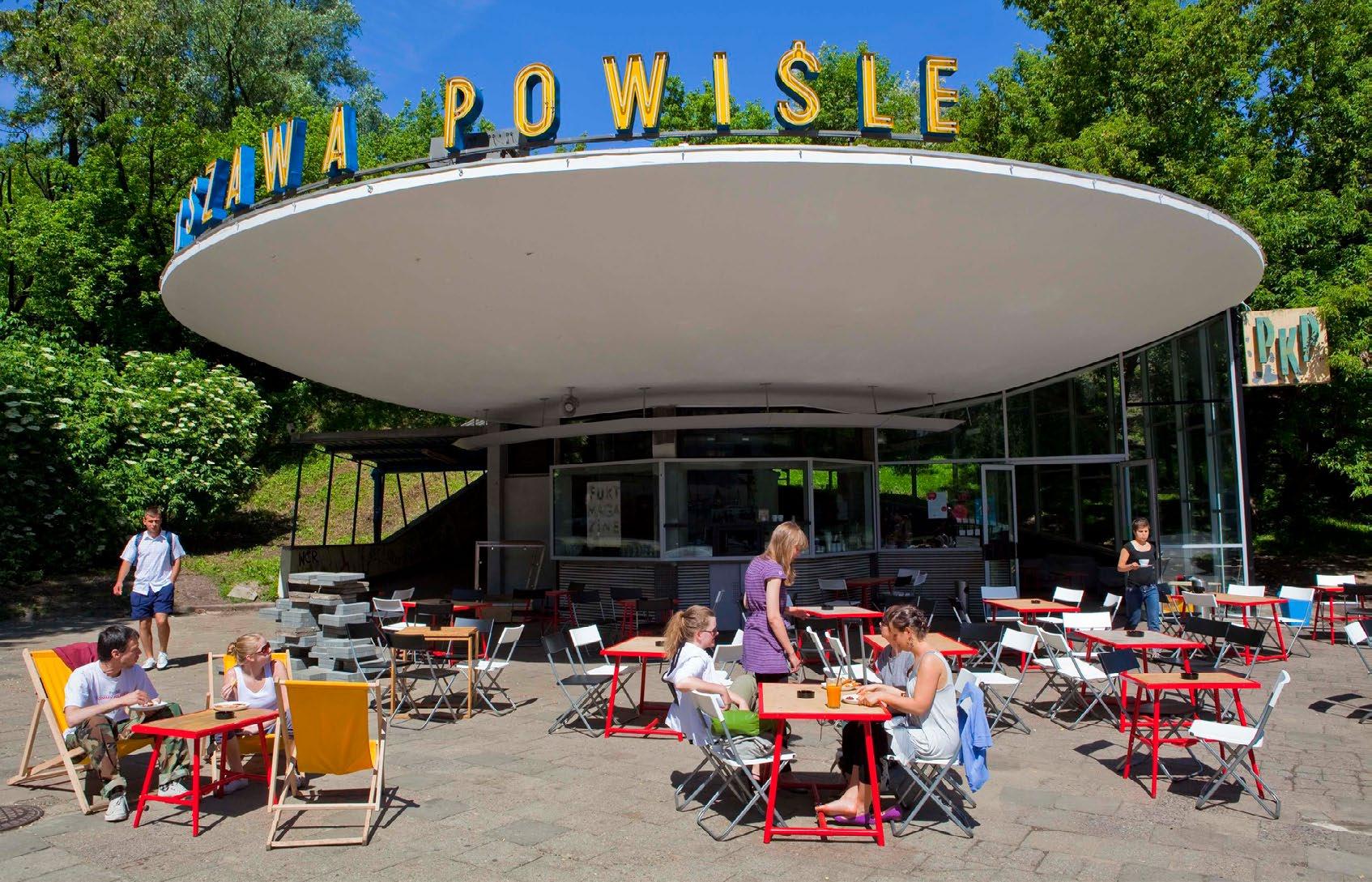
Considering its plum location along the riverside, it’s hard to believe that this large neighbourhood was essentially a cultural dead zone until skyrocketing rent costs in the City Centre forced Warsaw’s students, artists, activists and small business owners to reconsider its potential. Warsaw University was the first to pitch a tent in the area, creating a real draw since 2002 with their lovely Library Rooftop Gardens (open from April until end of October), and the adjacent opening of the prestigious Copernicus Science Centre in 2009 invited further cultural investments (like the Museum of Modern Art), while also creating strong impetus for the city to connect the area via Metro (2015) and finally clean up and modernise the left bank river boulevards into a popular place for public recreation (completed in 2017). The massive redevelopment of the former Elektrownia Powiśle power plant into a space for events, dining and shopping (opened in 2020) typifies the high-powered investment taking place here today, but despite increasing gentrification, Powiśle still maintains an authentic local vibe thanks to its balance of both trendsetting gastro spots and boho dives (like the iconic Warszawa Powiśle bar). Roll yourself downhill towards the river from Warsaw’s Old Town or City Centre to discover what’s good in this hood!
This museum is touted as one of the most hightech in Europe! Four floors of interactive exhibits cover the composer’s life in every aspect, including a recreation of his Paris drawing room, the last letter he wrote to his family, his death mask, and even an intriguing section on the women in his life. In addition to dozens of touchscreens, audio-visuals, and musical games, the museum allows visitors to ‘adapt their trip to their particular circumstances’ by personalising their own route by swiping their e-ticket to access more music, interactive graphics, and videos. 30min live concerts take place every Sat and Sun at 12.00pm, 1.00pm and 2.00pm (available to all museum visitors). Visitor numbers are restricted, so we suggest reserving tickets online in advance. Located in the famous Ostrogski Palace, the building’s catacombs are said to be home to the legendary Golden Duck - a princess charmed by the Devil before being transformed. Visiting time: 1hr.QH-7, ul. Okólnik 1, MNowy Świat-Uniwersytet, tel. (+48) 22 441 62 51. Open 10:00-18:00; closed Mon. Admission 25/15zł. U
Feisty, beautiful and busty, Warsaw’s ‘Syrenka’, the iconic freshwater warrior mermaid, has been representing Warsaw since time immemorial. The monument here is arguably the second most famous statue of the city’s symbol (the other one is in the Old Town Square - p.36), though this one actually overlooks the body of water that the mythical icon is alleged to have dwelled in. This 2.75m tall bronze work was created by sculptor Ludwika Nitschowa and unveiled in June 1939, a few months before the outbreak of WWII. Her model was 23-year-old poet and ethnography student, Krystyna Krahelska, but allegedly Ludwika changed the features of her face slightly to protect Krystyna’s modesty. After Warsaw’s devastation during both the Nazi invasion and Soviet ‘liberation’, it’s remarkable that the Powiśle Mermaid stood the whole time in this spot and sustained only minor damage!QI-6, Bulwar Bohdana GrzymałySiedleckiego (near Most Świętokrzyski), MCentrum
Nauki Kopernik.
Warsaw has modernised and improved its left bank dramatically in the last decade. The Powiśle boulevards flanking the Świętokrzyski Bridge and leading north to the Old Town have seen the most development and are now not only a popular thoroughfare for walking, running, cycling and skating, but also brimming with bars, cafes and restaurants - particularly in the warmer monthsplus parks and leisure spaces. The area just north of the bridge has also become a cultural corridor and tourist lure thanks to a clutch of top attractions: the Copernicus Science Centre, Museum on the Vistula and the University Library Gardens (open April to October), as well as the Multimedia Fountain Park further north (F-3). It’s fair to say that Warsaw’s river boulevards are now among the best in
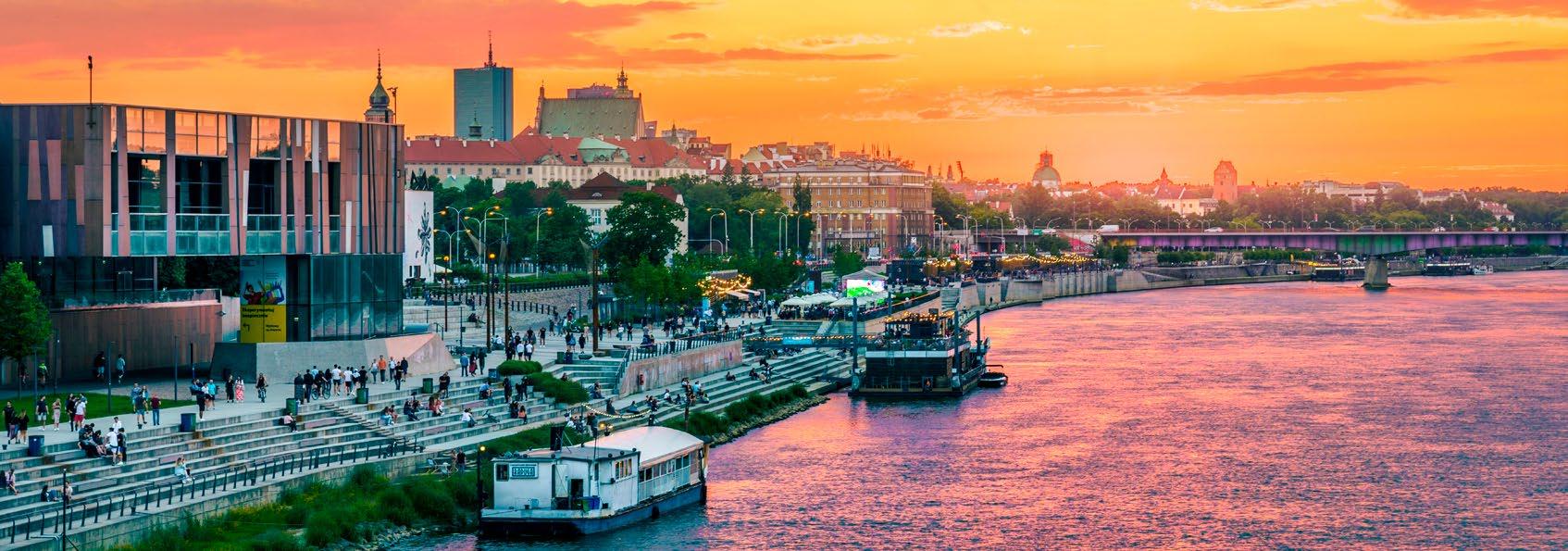
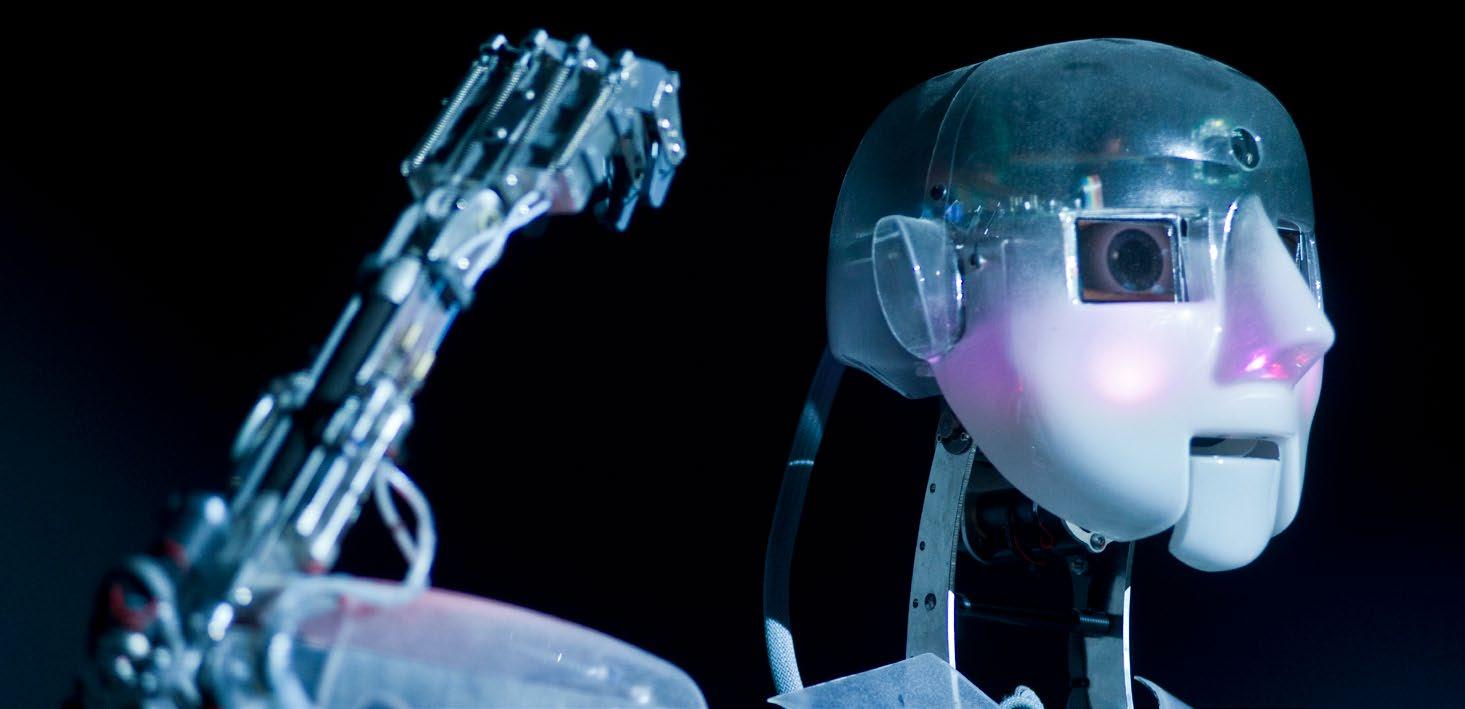
When it’s time for a rest or a feed, there are many worthy venues on and around ul. Solec - one of the main streets in the area, as well as numerous food trucks and barges moored up along the river. Also, Elektrownia Powiśle has an entire food hall inside, so your options are manifold. Here are a few other notable venues in the neighbourhood:
The Cool Cat: Exuding cool and all over the latest trends, this Asian-influenced bistro does everything from brunch, bao and ramen, to cocktails and natural wines.QI-7, ul. Solec 38.
Nadwiślański Świt: A cult restobar in the former lobby of a 1960s hotel near the river, serving modern European dishes, lunch specials, craft beer, cocktails and retro vibes.QI-6, Wybrzeże Kościuszkowskie 31/33.
Warszawa Powiśle: This cult dive bar for hungover hipsters in a former train ticket office epitomises the local vibe, while offering allday breakfast, veggie eats and more.QI-7, ul.
Kruczkowskiego 3B.
LAS: Refined with a lush edge, this ‘forest’ uses local, seasonal ingredients to create contemporary incarnations of Polish classics, plus yummy cocktails.QI-7, ul. Solec 44
SAM Powiśle: A bakery and bistro that rises early to produce its own bread for their aromatic menu of stacked bagles, sandwiches, French toast and more. Put simply, an excellent breakfast option in Powiśle!QH-6, ul. Lipowa 7A
Europe and as endemic to the identity and character of the capital as those in London or Paris, so don’t miss having a stroll along the water while in town. One thing that makes Warsaw’s riverside especially unique is that while the boulevards of the left bank consist of concrete retaining walls, the entire breadth of the opposite shore has been left completely wild and undeveloped, making for a stark, fascinating and unusual contrast.QI-6, Generała George’a Smitha Pattona, MCentrum Nauki Kopernik.
Once one of the largest electrical power plants in Europe, Elektrownia Powiśle powered the Polish capital from 1904 to 2001 before it was closed and left to crumble. Purchased by a developer in 2016, it was only a matter of time before the historic industrial site was transformed into a multifunctional, mixeduse urban centre. Covering a massive 50,000m2, much of the site has been converted into offices, apartments and a hotel, but a remaining 15,000m2 in the former boiler and engine buildings comprises commercial space for retail, gastronomy and wellness. In keeping with current revitalisation trends, the postindustrial plot deftly mixes original architecture and design details with modern trends and convenience, including glass exterior elevators, 30m chimneys and original switchboards. Reopened in 2020, today Elektrownia offers four levels of shopping with over 70 boutiques, 10 sitdown restaurants across the complex, plus a huge food hall with an additional 13 international food concepts and 3 bars. Additionally, there is a 1500m2 Beauty Hall offering over 456 cosmetic treatments from 8 salons. Events are frequently hosted in the courtyards between the buildings, including
a regular farmer’s market, yoga lessons and film screenings, and there’s also a multimedia fountain. Whatever your proclivity, there are plenty of reasons to check out one of Warsaw’s most exciting and successful urban renewal projects QH/I-6, ul. Dobra 42, MCentrum Nauki Kopernik, tel. (+48) 22 128 56 00, www.elektrowniapowisle.com. Food Hall open 12:00-22:00, Fri 12:00-02:00, Sat 11:00-02:00, Sun 11:00-01:00. TU6K
A rare example of EU funding being used in a genuinely visionary way, the CSC is the very best science centre in Europe, and one of Warsaw’s top tourist attractions. Not only will you learn an awful lot, but you’ll have a blast doing so. The fun starts as soon as you encounter the museum’s very own ‘Robothespian’ - an interactive humanoid robot - at the front doors, before exploring several hundred hands-on exhibits across two floors that will have you actively pressing buttons, answering quizzes, and even exerting yourself physically. In addition to temporary exhibits and the all-ages ‘Experiment Zone,’ there are zones specially designed for the youngest visitors up to teens and adults. Check out the free rooftop garden (open until the end of October), and don’t miss the Planetarium (separate opening hours and ticket). Visiting time: 3-4hrs.QI-6, ul.
Wybrzeże Kościuszkowskie 20, MCentrum Nauki Kopernik, tel. (+48) 22 596 41 00, www.kopernik.org.pl.
Open 09:00-18:00; Fri 09:00-20:00; Sat, Sun 09:00-19:00.
Closed 1st Mon of every month. Planetarium open Mon 09:00-15:30; Tue-Thu 09:00-19:00; Fri 10:00-21:00; Sat 10:00-20:30; Sun 10:00-19:30. Admission 37/25zł; Sat, Sun 39/26zł; planetarium 27/19zł. U
The Museum on the Vistula is a branch of the Warsaw Museum of Modern Art, and the current site of all the institution’s exhibitions while their new headquarters is being built on Plac Defilad (scheduled to open in 2024). Located on top of the Wisła’s riverside terraces, the eye-catching large white box of a building is
From Powiśle it’s exceedingly easy to get to Praga (p.56) or the City Centre (p.22) via the handy riverside ‘Centrum Nauki Kopernik’ M2 Metro station. Alternatively, walk north along the river to return to the Old Town (p.32) or check out New Town’s Multimedia Fountain (F-3), which is a popular attraction for young families; both are about 2km/20mins on foot.
actually a pavilion that was designed by Austrian architect Adolf Krischanitz and housed the Kunsthalle in Berlin from 2008-10. In 2017 it arrived in Warsaw with the caveat that the exterior be covered in artwork. Sławomir Pawszak won the contest for decorating the facade, and his colourful scribblings have adorned it since it opened. Inside you’ll find provocative exhibitions by international artists that challenge our notions on the nature of art, as well as the Paloma cafe/ bistro and a bookstore. Check out MoMA’s website for current/future exhibitions.QH-5, ul. Wybrzeże Kościuszkowskie 22, MCentrum Nauki Kopernik, tel. (+48) 22 596 40 10, www.artmuseum.pl. Open 12:0019:00; Fri 12:00-20:00; Sat 11:00-20:00; Sun 11:00-18:00; closed Mon. Admission 15/5zł, kids under 7 free.
Traditionally speaking, rooftops are the preserve of chimney sweeps, superheroes and Santa, but visit the Warsaw University Library (BUW) building and that opinion will quickly change. Topping off the bizarre oxidised green building is a lovely two-level rooftop garden filled with bridges, streams and sculptures that covers an entire hectare; there’s even a fishpond and a stone fountain mixed in among the oak trees and Japanese spirea. Designed by Irena Bajerska and opened back in 2002, the garden affords panoramic views of lower left-bank Warsaw and across the river to Praga. A wonderful place to stop and rest in the heart of the city, take a picnic and sit amongst the groups of students taking time out from studying (ahem, napping). While you’re there, we also highly recommend visiting the BUW Gallery to see some fantastic Polish poster art (open 13:00-18:00, Sat 13:0017:00, closed Sun; admission free).QH-5, ul. Dobra 56/66, MCentrum Nauki Kopernik, www.buw.uw.edu.pl. Open 08:00-15:00. 1 May - 30 Sep: 08:00-20:00. Library open Mon-Sat 08:00-22:00, Sun 15:00-20:00. Rooftop Gardens accessible April 1 - October 31 only. Admission free.
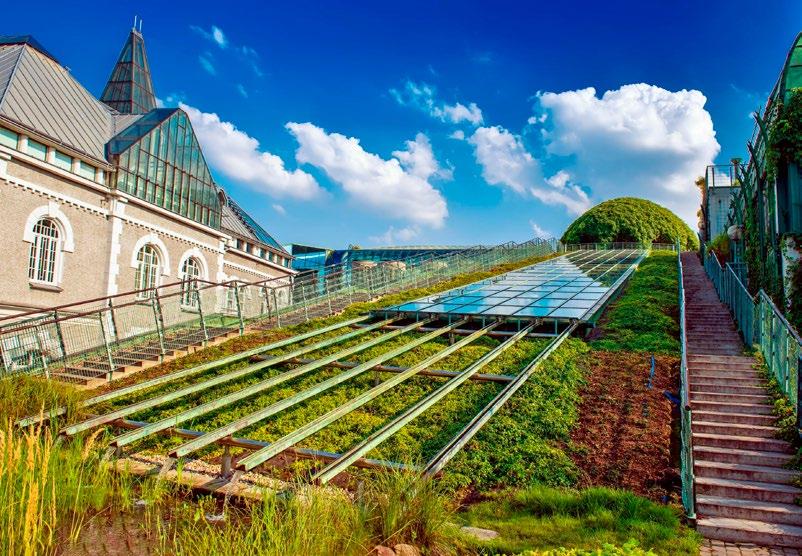

This glorious 17th century park, spread over 74 hectares, is one of Warsaw’s unparalleled highlights, adored year-round by locals and visitors alike. Although it seems as if half of Warsaw spends its summer Sundays here, the park is so vast that it never feels crowded and offers an enchanting opportunity to escape the capital’s modern-day gloom and get lost in its nostalgic past. Don’t mistake Łazienki for a simple city park; it is also a museum complex full of wonderful art and architecture. Don’t miss it.
The full/proper name of today’s park is ‘Łazienki Królewskie,’ which means ‘Royal Baths’ and is derived from the park’s centrepiece and best-known attraction, the Palace on the Island. The palace was originally built in the 17th century as a private bathhouse for Stanisław Herakliusz Lubomirski, owner of the nearby Ujazdowski Castle and much of the surrounding land (and much of Poland, come to mention it). The bathhouse was bought by the last king of Poland, Stanisław August Poniatowski, in 1772 and converted into a private residence (thus taking the name Palace on the Island). It was at this time that the grounds were formally laid out as a private garden. Perfect for romantic strolls, family picnics and cultural outings, today the park is packed with gorgeous sculptures and monuments, palatial architecture and priceless art, lovely landscapes of bridges and ponds, plus cafes, restaurants and more. With so much to see and explore, don’t be surprised to find yourself spending most of a day here
While the park is free to wander, explore and enjoy, Łazienki’s indoor exhibits require a paid ticket. To ensure that your pockets don’t fill with litter, there are now two types of tickets , each covering entry to a number of the park’s key sites. Ticket #1: The Palace on the Island, the Old Orangery, and Myślewicki Palace; Ticket #2: Same as #1, with additional sites - the Officer Cadets School and the Museum of Hunting & Horsemanship. See ticket prices below Tickets can be purchased at the park’s two information offices at the Old Orangery or the Officer Cadets School. Note that all indoor attractions have the same opening hours (see below), with the exception of the Museum of Hunting & Horsemanship and the Botanical Garden.
QH-12, MPolitechnika, tel. (+48) 22 50 60 024, www.lazienki-krolewskie.pl. Park open 06:00-20:00. Indoor attractions open 10:00-16:00; Fri&Sat 10:0017:00; closed Mon. Ticket #1 - 40/20zł; kids under 7 free; students under 26, 1zł. Ticket #2 - 50/25zł; kids under 7 free; students under 26, 1zł.
The Belvedere Palace was the residence of Polish presidents from 1918 to 1995 and then once again during the presidency of Bronisław Komorowski from 2010-2015 (Presidents Aleksander Kwaśniewski, Lech Kaczyński and current president Andrzej Duda opted to live in the Presidential Palace on ul. Krakowskie Przedmieście (p.42)). Built in 1694 and thoroughly remodelled in 1818, the building is essentially offlimits to visitors, but an eyeful to behold. A wonder of Neo-Classical design, complete with tympanium and oversized Corinthian columns, the best views and photo ops are fetched from outside the park on Al. Ujazdowskie.QH-12, ul. Belwederska 56, MPolitechnika.
A depiction of Warsaw’s favourite son, Fryderyk Chopin, here in Łazienki beneath a willow tree. This work by Wacław Szymankowski was erected in 1926, dynamited by the Nazis in 1940, and restored from an original plaster cast in 1958. Set in the midst of a rose garden (which blooms June to October), this large monument is the backdrop for a very popular series of free classical piano concerts every Sunday at 12:00 and 16:00 from mid-May until the end of September. The opportunity to hear the music of this great composer in such a beautiful setting is one of the most wonderful experiences in the city during the summer. Bring a blanket and picnic and enjoy.QH-11, Łazienki Park.
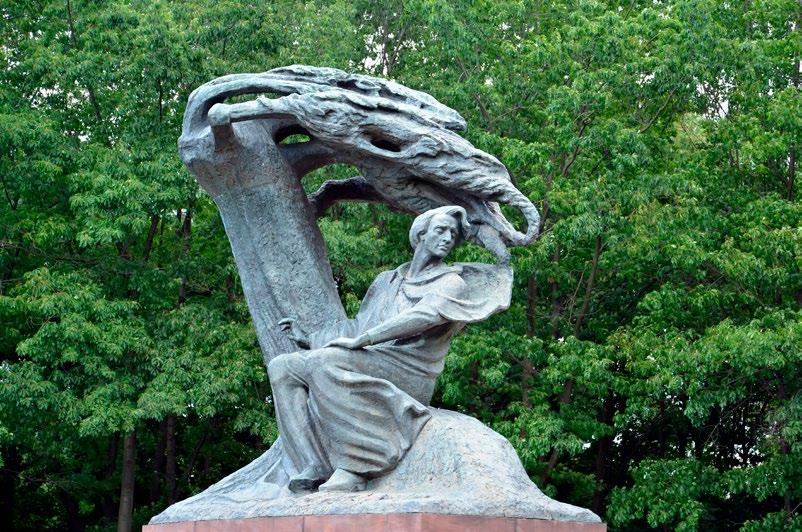
Any number of buses stop in front of the park’s three main entrances on ‘Al. Ujazdowskie’, including numbers 116 (from Old Town/Nowy Świat) and 180 (from Al. Jerozolimskie, bus stop ‘PKP Powiśle’); get off at the ‘Łazienki Królewskie’ bus stop. Accurate times and routes can be checked online at warsaw.jakdojade.pl

A good place to start a visit to Łazienki, the Old Orangery is one of two ticket offices and tourist info points in the park. Originally erected in 1785-88 to house exotic trees through the once-harsh Polish winter, the sunny structure also harbours King Stanisław August’s Royal Theatre - one of the few surviving 18th century court theatres in Europe, and still used today to host chamber concerts. Another important inclusion residing within the Old Orangery, is the Royal Sculpture Gallery, which features 120 marble and plaster copies of the most famous sculptures from antiquity. It should be noted that Stanisław August was a devoted collector of such things, so we have him to thank for that! These works are played against a painted backdrop that is designed to give the visitor the feeling of a stroll through an alley of statues in an Italian garden. Visiting time: 30mins.QI-11, ul. Agrykoli 1, tel. (+48) 22 506 01 01, www.lazienki-krolewskie.pl. Open 10:0016:00; Fri, Sat 10:00-17:00; closed Mon. Combined ticket allows entrance to main attractions, 40/20zł; kids under 7, free; students under 26, 1zł; Fri free.
The Palace on the Island is Łazienki’s raison d’etre Originally built as a Baroque bathhouse in 1683, the iconic structure was converted into a Neoclassical residential palace in the late 1700s by King Stanisław August. Architecturally spectacular, the palace is lies on an island in the middle of a long narrow lake, and is connected to both shores by colonnaded bridges on each side. The façades are unified by giant Corinthian pilasters that link its two floors and are crowned by a balustrade that bears mythological figures. Today almost all of the palace can be visited, including the King’s private rooms, which appear in their original context, and the extravagant Baroque reception hall A major patron of the arts, in 1793 King Stanisław August converted the palace into the first modern public museum, displaying the most important paintings from his collection of 2,289 works. Today 140 of these canvases are on display as the Royal Picture Gallery, and arranged as they would have been in the years 1793-1795. Visiting time: 45-60mins.QI-11, ul. Agrykola 1, MPolitechnika, tel. (+48) 22 506 00 28, www.lazienki-krolewskie.pl. Open 10:00-16:00; Fri, Sat 10:00-17:00; closed Mon. Combined ticket allows entrance to main attractions, 40/20zł; kids under 7, free; students under 26, 1zł; Fri free.
In the eastern section of Łazienki near the Palace on the Island stands a large, classical building constructed in a horseshoe plan. Formerly the site of the palace’s external kitchen, King Stanisław August expanded it into something called the ‘Great Annex’ in 1778, including a number of apartment dwellings. This would eventually morph into the Infantry Officer Cadets School in 1822, and it was from here that second lieutenant Piotr Wysocki led an uprising, aided by the young men of the school, which escalated into the nationwide November Uprising of 1830-31. Today the building houses a tourist info centre and ticket office for all of the park’s attractions, as well as some small temporary exhibits Visiting time: 20mins.QJ-11, ul. Agrykola 1, MPolitechnika, tel. (+48) 22 506 00 28, www.lazienki-krolewskie. pl. Open 10:00-16:00; Fri, Sat 10:0017:00; closed Mon. Combined ticket allows entrance to main attractions, 40/20zł; kids under 7, free; students under 26, 1zł; Fri free.
Built in the 1770s and 80s, this elegant semi-circular palace was originally conceived as King Stanisław August’s primary residence, though it gradually shifted to more diplomatic functions, hosting official state soirees and accommodating foreign ministers. Retaining its late 18th-century look, a walk through the interiorsreplete with original murals, furniture and art - is worth the short amount of time it takes to see them. Visiting time: 30mins.QJ-11, ul. Agrykola 1, MPolitechnika, tel. (+48) 22 506 00 28, www.lazienki-krolewskie.pl. Open 10:00-16:00; Fri, Sat 10:00-17:00; closed Mon. Combined ticket allows entrance to main attractions, 40/20zł; kids under 7, free; students under 26, 1zł; Fri free.
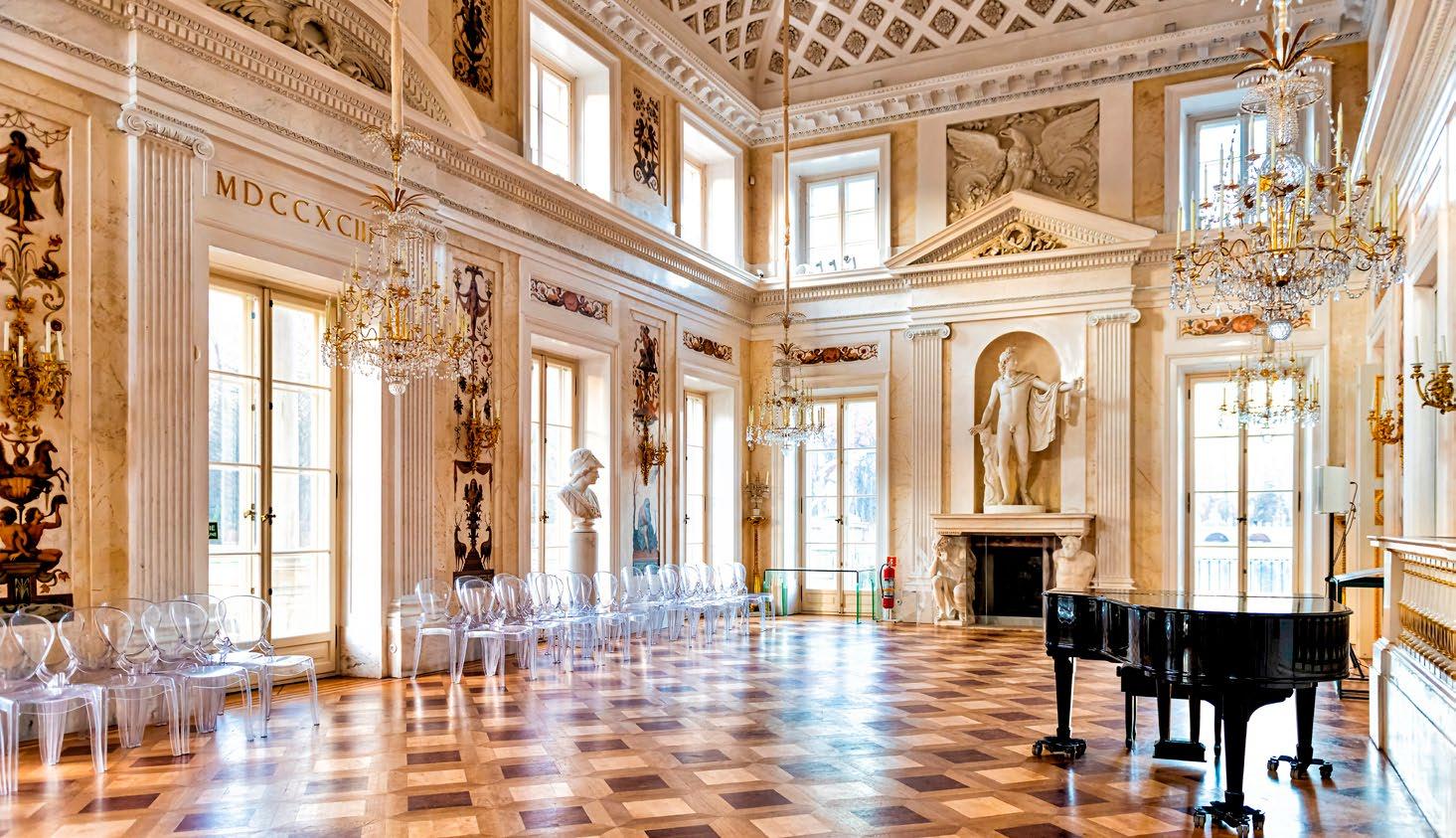
Very much as advertised, this museum will appeal to avid hunters and horse lovers, though the latter may have some trouble with all the mounted trophies. If so, you can skip the former Cantonists’ Barracks - built in 1826–1828 and full of hunting arms and taxidermied animals - and head straight to the Kubicki Stables, built 1825–1826 and home to an exhibit of horse-drawn carriages, saddles, harnesses and riding accessories; the Stables also host the Royal Weaving Workshop - featuring 19th-century Jacquard looms, ornamental fabrics, old fabric patterns and more. Visiting time: 1hr.QJ-12, ul. Szwoleżerów 9, MPolitechnika, tel.
(+48) 22 522 66 30, www.lazienki-krolewskie.pl.
Open 10:00-16:00; Fri, Sat 10:00-17:00; closed Mon. Admission 16/8zł; kids under 7 free; students under 26, 1zł. Fri free.
Łazienki has several cafes and restaurants, though most of them are very pricey. Head 500m west out of the main gates to Plac Unii Lubelskiej (H-12) for more casual options.
Belvedere: Located in the park’s New Orangery, this is one of Warsaw’s most prestigious restaurants and worth the money, but not for families after a day in the park.QI-12.
Być Może: This hip cafe/bistro bakes its own bread, offers all-day breakfast and daily lunch specials, and is perfect whether you’re craving coffee or wine. QH-12, ul. Bagatela 14.
DZiK (Dom Zabawy i Kultury): This old residence offers European cuisine and hosts a wide range of evening events, getting wild on weekends. QI-13, ul. Belwederska 44 A.
Rest. Baczewskich: Suffused with interwar elegance, this upmarket restaurant offers exquisite Polish cuisine with a Galician touch. (p.83)QH-11, Al. Szucha 17.
Klonn: This stylish parkside resto is worth the walk for modern cuisine and excellent wine. QH-11, ul. Jazdów 1B.
The Cool Cat TR: Inclusive, vegan-friendly and all around cool, this fusion bistro does everything from brunch, bao and ramen, to cocktails and natural wines. QH-12, ul. Marszałkowska 8.
The ‘Polish Versailles’ is just one of the many fitting monikers applied to this splendid late 17th-century 45ha palace and garden complex 10km south of the centre.
Essential visiting for anyone wishing to understand the former grandeur of the Polish capital, Wilanów is more than just a palace. As one of the few existing remnants of the era when Poland was a vast kingdom stretching from the Baltic to the Black Sea, today it also represents the European splendour and sophistication that was lost and few today associate with Warsaw. The palace, park and surrounding ensemble of buildings also represent the height of Polish Baroque and are collectively one of Poland’s greatest cultural treasures. If the weather’s good and you’ve got time to spare, it’s easy to spend most of a day relaxing and taking in the sites here.
10km south of the centre, Wilanów is best reached by bus or taxi, though the latter costs 35-40zł and essentially takes the same amount of time: 25-35mins. All buses stop directly outside the palace gates at the ‘Wilanów’ stop. From Plac Zamkowy (F-4), Pl. Trzech Krzyży (H-8) or Łazienki Park (H-11) take buses 116 or 180. From Warszawa Centralna train station (E-8) take bus 519. For exact times and routes, check warsaw.jakdojade.pl
The 45 hectares that make up Wilan ó w Park grew over the centuries according to the particular fancies of its owners. Made up of a series of individual gardens, the park includes a two-level Baroque garden, a Neo-Renaissance rose garden, a classical English landscape park and the socalled English-Chinese landscape park. The park’s was extensively renovationed during the 1950s, overseen by the architect and historian Professor Gerard Ciołek (1909-1966), made to recreate their appearance during the time of King Jan III Sobieski. The park near the Orangery, East, North and Rose gardens and their associated architecture were recently the subject of a major revitalisation program and during work on the Baroque garden a series of archaeological digs discovered several artefacts, including ceramics dating from the 12th century. Q P - 2, ul. St. Kostki Potockiego 10/16, tel. (+48) 22 544 27 00, www.wilanow-palac.pl. Open 09:00-16:00. From Feb 27 until March 12 open 09:00-17:00, from March 13 open 09:00-19:00. Admission 10/5zł, Thu free (0zł ticket is still required).

The first museum at Wilanów was opened in 1805 by the palace’s owner at the time, Stanisław Kostka Potocki. The current museum, which takes up a substantial portion of the palace’s interior, comes in two parts. The first is the upstairs Polish Portrait Gallery - comprising room after room of portraits of the rich and the powerful from the 16-19th century. If portraits are your thing you will find this very interesting, though the lack of descriptions is frustrating. Next you’ll find yourself downstairs in the Wilanów Palace Residence, featuring residential rooms, suits of armour, Etruscan vases, magnificent frescoes and even a private chapel. Most impressive are the private apartments of King Jan III Sobieski and his wife, while the wings house the apartments of the subsequent owners of the palace. Visit the Wilanów Palace website for info about current temporary exhibits and to buy tickets. Visiting time: 2hrs.QP-2, ul. St. Kostki Potockiego 10/16, tel. (+48) 22 544 27 00, www.wilanow-palac.pl. Open 10:00-16:00. Last entrance 1hr before closing. Admission (includes park admission) 35/28zł, kids 7-16 1zł, kids under 7 free; Thu free. U
An extraordinary piece of funerary art, befitting two of Poland’s most powerful, wealthy and influential families, this tomb in Wilanów Park was dedicated to Stanisław Kostka Potocki and his wife Aleksandra (nee Lubomirska) Potocka by their son Aleksander. Designed in 1834 by Henryk Marconi and built between 1834-1836 by Jakub Tatarkiewicz and Konstanty Hegl, this sandstone mausoleum consists of a Neo-Gothic canopy, with lions holding shields bearing the crests of the Potocki and Lubomirski families in each corner. On the sarcophagus itself are the figures of the deceased, and around the sides symbols of their virtues and interests are displayed.QO-2, Wilanów Park.
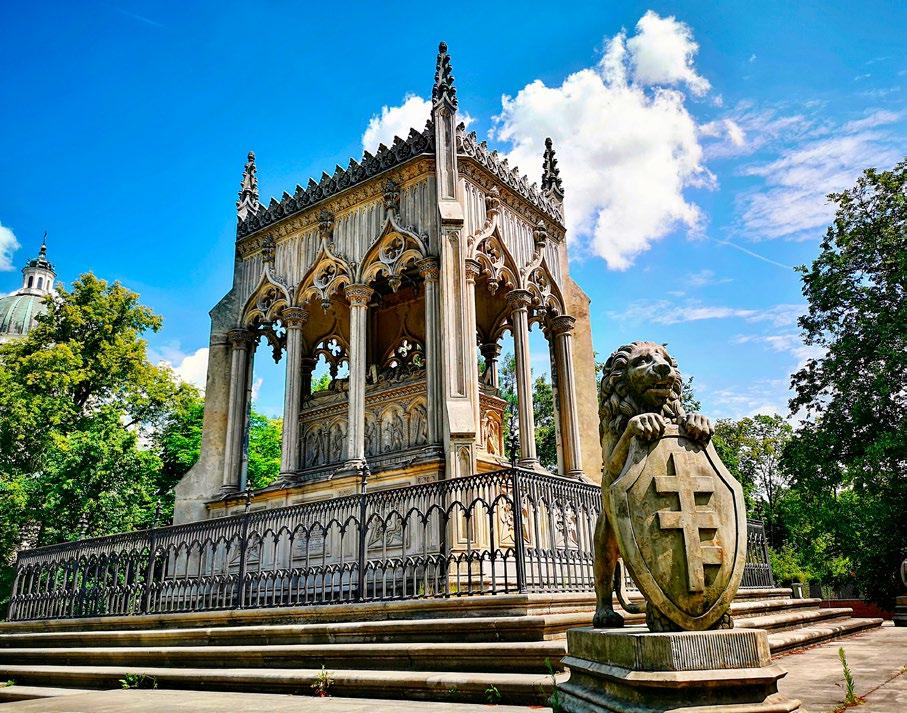
A church has stood on this site since the 14th century, when the wooden church of St. Leonard was built here, followed by a wooden Gothic version in the 16th century that stood throughout Sobieski’s day. In 1772 the new brick Church of St. Anne was founded by Prince August Adam Czartoryski based on a design by Jan Kotelnicki. Czartoryski’s granddaughter, Aleksandra Lubomirska Potocka, decorated the church with art in the period 1799-1831, the most precious of which is the Annunciation to the Virgin Mary in the main altar. From 1857-1870, Aleksandra’s son August and his wife extended the church based on a
Neo-Renaissance design by Henri Marconi, including adding the marvellous dome. The terracotta shrines in the surrounding gardens mark the fourteen Stations of the Cross, while the crypt houses the tombs of the Potocki family. The church suffered damage during both world wars and was even used as an internment camp by the Nazis, who looted and damaged it. The church bells dating from 1723 and 1777 survived thanks to the bravery of the local people who hid them. Today, they are housed in the newly built Third Millennium Tower.QO-2, ul. St. Kostki Potockiego 18, tel. (+48) 22 842 18 01, www.parafiawilanow.pl. Open 08:00-17:00; Fri, Sat 08:00-12:00; Sun 13:00-17:00.
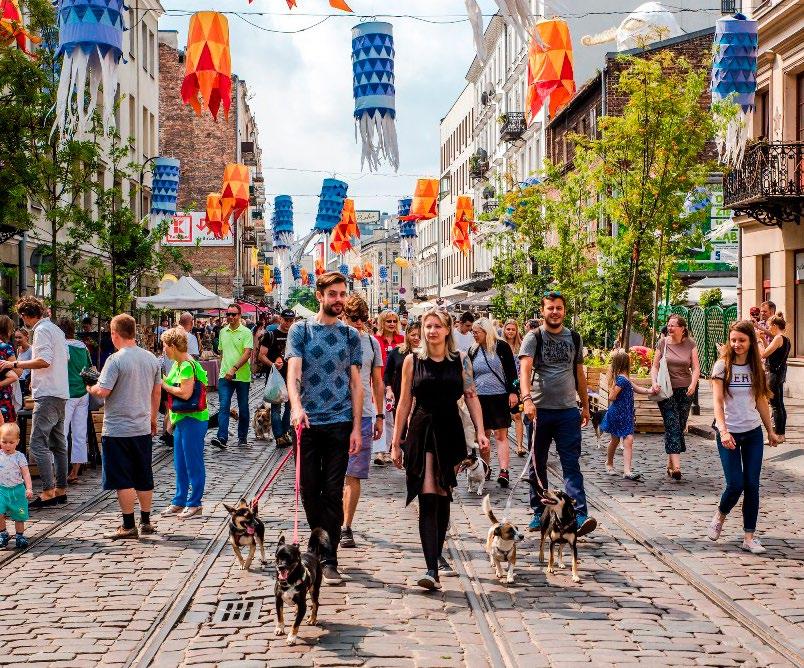
‘Gritty’ and ‘boho’ are just two of the terms tossed around to describe Praga, Warsaw’s east riverside district. Once disregarded due to its criminal underclass and imposing tower blocks, today an urban revival makes Praga worth visiting – especially for those looking to get off the tourist trail and see more of the city’s artsy side. The current standard-bearer for cool, folks here prefer their fun improvised and their bars dark. Filled with murals and hip hangouts, you can easily spend a day checking out the vibes of this alternative district across from the Old Town. Getting here is easy - take M2 Metro to M Dworzec Wileński
Located in the oldest surviving residential buildings on Warsaw’s right bank, this modern museum boasts interactive exhibits that tell the story of Praga: its people, history, industry, bazaars and more. The cellars include the Residents’ Stories Archive and two pre-war Jewish prayer rooms with original wall paintings, and there’s even an observation terrace. Visiting time: 1.52hrs.QJ-3, ul. Targowa 50/52, MDworzec Wileński, tel. (+48) 22 518 34 30, www.muzeumpragi.pl. Open 09:0017:00; Thu 09:00-18:00; Sat, Sun 10:00-18:00; closed Mon. Admission 12/8zł, permanent exhibit only 10/7zł, temporary exhibits 5/3zł; Thu free for perm exhibit. U
Nowhere is Praga’s revival better illustrated and its artistic vibe more felt than on Ząbkowska. Originally lined with timber frame houses, a fire in 1868 led to their replacement with tall tenements, all but one surviving WWII. Post-war neglect hit the street so hard that wholesale demolition was seriously considered, but somehow it endured and today many of the buildings have been restored and filled with lively galleries and bars. You’ll know you’ve arrived at Praga’s high street when you discover the explosion of murals and street art near ul. Targowa.QJ-3, ul. Ząbkowska, MDworzec Wileński.
Once the Koneser Vodka Factory (1897-2007), this large industrial site lay mostly derelict before getting a major revamp in recent years. Interesting from an architecture and urban renewal standpoint, the 5ha complex includes a tourist info point, the Polish Vodka Museum, the new-and-exciting Museum of Fantastic Art (p.64), several art galleries and dozens of restaurants, cafes and bars, plus shops and services amongst the apartments and offices (including Google headquarters). Host to frequent events and fairs, the premises are well worth exploring.QK-2, Plac Konesera 2, MDworzec Wileński, www.koneser.eu. U
Locals will tell you that the best part of Praga isn’t the sightseeing, but the nightlife. The area’s main attraction is a vodka museum after all. You’ll find plenty of restaurants, cafes and bars in and around Praga Koneser Center, along ul. Ząbkowska and ul. Okrzei. Here are a few of the most emblematic hangouts in the ‘hood.
W Oparach Absurdu: A shabby-chic boho hangout full of battered lampshades and oriental rugs, offering coffee, craft beer, cocktails and pierogi, plus frequent concerts and events.QJ-3, ul. Ząbkowska 6.
3/4 Koneser Bar: Skip the museum and head straight to this bar hidden on the 3rd floor of the Vodka Museum to try their delicious alcohol infusions and cocktails, and enjoy beautiful views. More on p.90.QK-2, Plac Konesera 1.
Bar Setki Powodów: There are 100 reasons why you should swing by, including its retro-neon chic, cocktails, a tantalising food menu and a kicking live music roster! More on p.90 QK-2/3, Pl. Konesera 1.
Set inside a former vodka factory, this multimedia museum is visited with a live tour guide or audio guide. The experience takes you from the origins of vodka to modern production methods, showing you plenty of paraphernalia and treating you to a tasting of this strong spirit so deeply tied to Polish history. Entries are timed (PL and EN tours hourly) and it’s wise to look at all the tour options online and book in advance Visiting time: 1.5hrs.QK-2/3, Pl. Konesera 1, MDworzec Wileński, tel. (+48) 22 419 31 50, www.muzeumpolskiejwodki.pl. Open 12:00-20:00; Fri, Sat 12:00-21:00; closed Mon. Audio guides/standard tours 49zł. 6
Yet another old industrial space turned cultural hub is Soho Factory, the biggest draw of which is no doubt the illuminating (non-pun intended) Neon Museum. The passionate curators of this private museum have collected hundreds of Communist-era neon signs, saving them from oblivion in the process. One of Warsaw’s most photogenic places. Visiting time: 30mins.QM-4, ul. Mińska 25, Soho Factory, Building 55, MStadion Narodowy, tel. (+48) 665 71 16 35, www.neonmuzeum.org. Open 12:00-18:00; Sun 11:0017:00. Admission 16/13zł, kids under 6 free. U6
Warsaw’s combination of these three is what makes it so exciting. Whether you’re an art lover, amateur historian, or tracing your roots, Warsaw’s heady brew of imperial grandeur, prewar glamour, 20th century tragedy, socialist austerity and present-day dynamism makes it unique in Europe and offers much to the visitor. Use this chapter of the guide to discover the capital’s art spaces and current exhibitions, find out about museums ranging from niche to national, and learn about sites related to some of the most important events in Warsaw’s modern history.

Warsaw is the centre of Poland’s contemporary art scene and home to countless pieces of priceless art. While Krak ów’s collections skew more historical, Warsaw boasts a great variety of exhibits showcasing younger artists as well as the nation’s masters. When it comes to art tourism, temporary exhibits are often as or more important than permanent collections, so check the current exhibitions on p.60.
1 Fryderyk Chopin Museum
Located in a beautifully-restored palace, this museum uses incredible interactive multimedia displays to illustrate the life of Poland’s most famous composer, without any details missing! QSee p.46
2 Warsaw National Museum
Polish and European masters, Polish design, ancient African art and 5 decades of painting can all be found inside the exhibits of this stately museum. QSee p.64.
3 Museum on the Vistula
Warsaw’s MoMA, right on the riverside in an eye-catching pavilion. Inside are provocative contemporary art exhibits by international artists. QSee p.49.
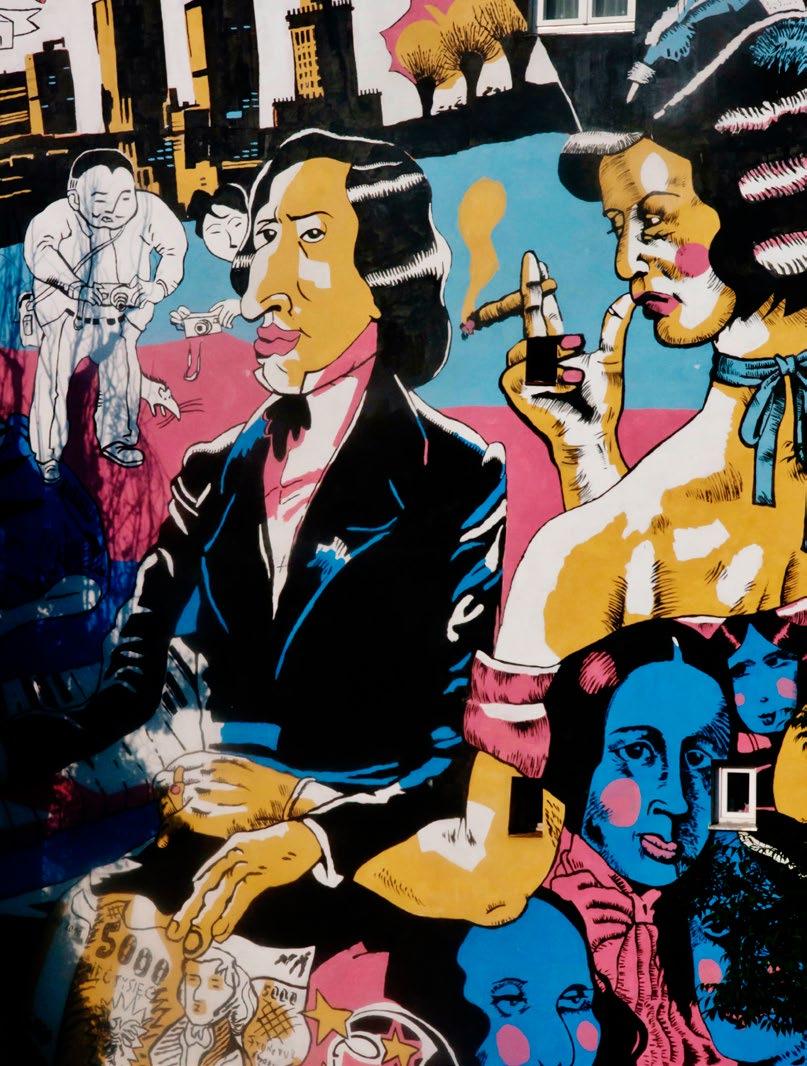
What about art in public spaces? Poland has a long, lauded tradition of graphic art, with Polish print advertising and poster design known internationally for their high artistic quality. With such a knack for graphics, it stands to reason that Poles would have a penchant for street art as well. And they do. In Warsaw both graffiti art and large-scale murals are a common sight, with the city and private businesses even inviting international artists to do installations. You’ll find a particularly high volume of murals on buildings in Praga, Wola and around the City Centre, where the urban landscape is changing most rapidly. Although it’s a dynamic situation, as many murals are installed on buildings that later become designated for demolition, at WIYP we keep a close eye on murals and urban art, marking major works on all of our maps; just look for the spray can icon . Not only that, but we’ve meticulously put it all online with exact GPS coordinates, so that your smartphone can do the work of leading you directly to Warsaw’s alternative artistic visions.
4 Ujazdowski Castle
Contemporary art in a rebuilt palace. One of PL’s most prestigious and provocative art centres, with an extensive program of exhibits, performances, film screenings and more.QSee p.64
5 Neon Museum
A small, but brilliantly illuminating and highly photogenic museum, displaying hundreds of historical neon signs from Warsaw’s past.QSee p.57.
6 Museum of Fantastic Art
Celebrating Polish fantasy/surrealist art, with names like Beksiński, Duda-Gracz, Wałkuski, as well as the extremely-talented successive generation of creatives. Many works here have never been exhibited publicly until now! QSee p.64.
It’s not uncommon for some temporary exhibits to be major events, even overshadowing the permanent collections of local museums. Of the literal hundreds of art events across Warsaw, here are a few picks for the coming months. For more, as well as other events in the capital, head to our website.
UNTIL 03.09 » Created with sound | Music and dance in visual arts of Asia and Oceania. A multisensory exhibition exploring the ability of artistic techniques in Asian and Oceanic cultures that manage to capture the ephemeral essence of music and dance!QJ-7, Asia & Pacific Museum, ul. Solec 24, MCentrum Nauki Kopernik, tel. (+48) 22 621 94 70, Admission 15/9zł., www. muzeumazji.pl/en/temporary-exhibition/stworzonedzwiekiem/. Open 10:00 - 18:00. Closed Mon.
UNTIL 30.07 » Chopin’s Letters | A special exhibition. A special exhibition of the correspondence of Poland’s famed composer, during his time living in Plac D’Orleans in Paris, amongst a thriving artistic community that included many greats - Pauline Viardot, Charles-Valentin Alkan, Pierre-Joseph Zimmermann, and his lover Amantine Lucile Aurore Dupin, better known by the pen name ‘Georges Sand’.QH-7, Fryderyk Chopin Museum, ul. Okólnik 1, MNowy Świat-Uniwersytet, tel. (+48) 22 441 62 51, Admission 25/12zł, www.muzeum.nifc.pl.
UNTIL 18.06 » There will be no second spring... | Children and Art in the 20th and 21st Centuries. A look at child development in the challenging environments, such as daily violence, pandemics, war, the status of being a refugee, as well as the role of interdisciplinary art in nurturing children’s creativity and restoring their sense of worth.QF-6, Zachęta National Gallery of Art, Pl. Małachowskiego 3, MNowy Świat-Uniwersytet, tel. (+48) 22 556 96 00, Admission 20/10/2zł, Thu free, www. zacheta.art.pl. Open 12:00 - 20:00. Closed Mon.

16.06
Well. The confronting works by one of China’s most prominent artistic dissidents, who has focused his criticism on the policies of ideological control in his homeland. This exhibition also pays homage to other artists who dare to make art as a form of protest!QI-10, Ujazdowski Castle Centre for Contemporary Art, ul. Jazdów 2, MPolitechnika, tel. (+48) 22 628 12 71, Admission 10/5zł., www.u-jazdowski. pl. Open 12:00 - 19:00, Thu 12:00 - 21:00. Closed Mon.
A powerful and emotional exhibition, organized in cooperation with the Holocaust Research Center, commemorating the 80th anniversary of the Warsaw Ghetto Uprising and the heroism and tragedy of the capital’s Jewish civilians that defied the enemy until the very end.
The Warsaw Ghetto Uprising is often associated with the capital’s remaining Jewish population heroically taking up arms against the occupying Germans in 1943. Whilst such brave actions were certainly made, we mustn’t forget, however, that the individuals that sat quietly in hidden shelters, in direct defiance of their occupier’s orders, were people who should be considered in the same heroic light as their brothers and sisters in arms. It’s these two types of individuals that are revealed in this exhibition at Warsaw’s POLIN Museum (p.67). ‘Around Us a Sea of Fire’ is divided into two halves. The first - In a bunker - aims to recreate the daily ‘physical’ reality of being confined to a bunker, the conditions that these people lived in, and the experience of living through the immolation of the Warsaw Ghetto. Balancing these aspects out are the relationships of people who shared close quarters, as well as their feelings and emotions, and the dichotomy between fear, panic, hopelessness, and abandonment, inversely partnered by the need for love and intimacy, the urge to act and take responsibility for others. The second half of the exhibition - In the face of death - is devoted to the time in history that the events of 1943 took place, the themes of which still remain in
question in today’s world - How do we behave in the face of death? Where is the line between struggling to survive and surrendering? What do people feel when they are excluded from society and experience indifference or disdain? How do we oppose evil, and how do we combat it? Do we feel ashamed when we witness the suffering of others? This exhibition has been realised through the testimonies of Jews who hid in the bunkers both in the ghetto area as well as on the “Aryan” side of occupied Warsaw. Because of the Ghetto’s destruction, written words have acquired a particularly important role in the exhibition, conveying the feelings and experiences of their authors, as well as constituting a unique testimony, and, in many cases, are often the only tangible trace left of individuals who perished in the ghetto.
“Around Us a Sea
The
Civilians During the Warsaw Ghetto Uprising” is exhibiting at Warsaw’s POLIN Museum from 18.04.2023 until 08.01.2024.QD-4, POLIN Museum, ul. Anielewicza 6, MRatusz Arsenał, tel. (+48) 22 471 03 01, Admission 30/25zł., www.polin.pl.

Warsaw boasts some superior museums, ranging from world-class attractions full of multimedia displays, to small institutions covering niche historical events. It’s more than we have space to cover here, but you’ll find them all listed and up-todate on our website. In this guide, some of the city’s most important museums are listed within the district tours of Sightseeing section, while the rest of the best are here. Descriptions focus on each museum’s permanent collection; for current temporary exhibits, see p.60

Based on the passionate collection of enthusiast Jacek Łupina, the Apple Museum is home to around 1,700 exhibits of one of the world’s leading names in information technology. This is the most complete (if not, the largest) collection of Apple computer products in the world! Young families need not stress about their visit - for the museum’s younger visitors, there is a fantastic Game Room, with modern and vintage games readily available for the kids to play. The story of Apple has never been told in such an accessible and immersive way... and it’s right here in Warsaw! Make use of the passionate and knowledgable guides on the floor, who possess a wealth of Apple knowledge. Additionally, the museum’s audio guide is thoroughly recommended as well! QD-8, Żelazna 51/53 (Fabryka Norblina), MRondo
ONZ, tel. (+48) 730 00 12 55, www.applemuzeumpolska. pl/. Open 12:00-20:00; Sat, Sun 10:00-20:00; closed Mon. Admission 45/30zł; Sat, Sun 55/40zł. PU6
This Old Town Museum showcases over 20,000 items dating from the Middle Ages up to today, and surprises with its wealth of secular art. Split into the Sacred and the Profane, the former includes liturgical objects, paintings and sculptures of Jesus, Mary and the saints, plus personal items of Stefan Wyszyński - former Primate of Poland. The latter includes lots of furniture, clocks, sculpture and paintings, including works by famous artists such as Malczewski, Hofman and even Beksiński. One highlight is entering the ‘Royal Corridor’ (aka the ‘Piekarski Corridor’) that formerly connected the Royal Castle with the Cathedral, and was built to ensure King Sigismund III Vasa’s safe passage between the two following an assassination attempt in 1620. Visiting time: 1hr.QG-4, ul. Dziekania 1, MRatusz Arsenał, tel. (+48) 22 621 34 14, www.maw.art.pl. Open 12:00-18:00; Sat, Sun 12:00-16:00; closed Mon. Admission 30/22zł. U
A unique experience where seeing impaired guides lead you into their sightless world. On the tour you’ll understand the challenges blind people face daily as you try to write with a Braille typewriter, use kitchen gadgets designed for the sightless, and solve simple puzzles while blindfold.ed Once you’re sufficiently awed by your inability to do even minor tasks, next is a series of pitch-black rooms that force you to rely on your other senses. You’ll feel the contours of a sculpture to discern what kind of art it is, listen for cars before crossing the street, and the guide will even serve you a drink in the completely dark bar (bring some cash). An eye-opening experience that will make you think about what you take for granted, to visit book online in advance. Tours in English can be arranged, but you must first email them via info@niewidzialna.pl with ‘TOUR IN ENGLISH’ as the subject line. Visiting time: 1hr.QC-9, Al. Jerozolimskie 123A (Atlas Tower), MRondo Daszyńskiego, tel. (+48) 504 32 44 44, www.niewidzialna.pl. Open 12:00-20:00. Admission 35/31zł; Sat, Sun 39/34zł. N
Found in the Warsaw Citadel - a massive 19th century fortress - this museum documents the shocking events of 1940 when 22,000 Polish officers were executed by their Soviet captors in the middle of a Russian forest. The museum has a host of objects, documents and personal effects that have been recovered from the site near Smoleńsk, Russia. The artefacts from the victims and a scrolling list of their names need no explanation, while the multimedia presentation of the extenuating circumstances, the victims’ stories and the entire event’s historical relevancy are well thought-out and thoroughly moving. Visiting time: 2hrs.QE-1, ul. Jana Jeziorańskiego 4 (entrance from Nowomiejska gate), MDworzec Gdański, tel. (+48) 26 187 83 42, www. muzeumkatynskie.pl. Open 10:00-16:00; closed Mon, Tue. Admission free. Guided tours (EN, PL) 90-300zł. Audioguides (EN, PL, DE, FR, RU) 15zł. U
Located in the renovated building she was born in, this charming museum pays homage to the life and work of the two-time Nobel Prize-winning physicist and chemist Maria Skłodowska-Curie - better known to the world as Marie Curie. Comprising of five rooms, visitors have the opportunity to learn about her family and early life, see a recreation of her Parisian laboratory, plus many of her personal effects, including private letters and scientific instruments.. Visiting time: 1hr. QF-3, ul. Freta 16, MRatusz Arsenał, tel. (+48) 22 831 80 92, www.mmsc.waw.pl. Open 12:00-18:00; closed Mon, Sun. Admission 11/6zł, Tue free. U
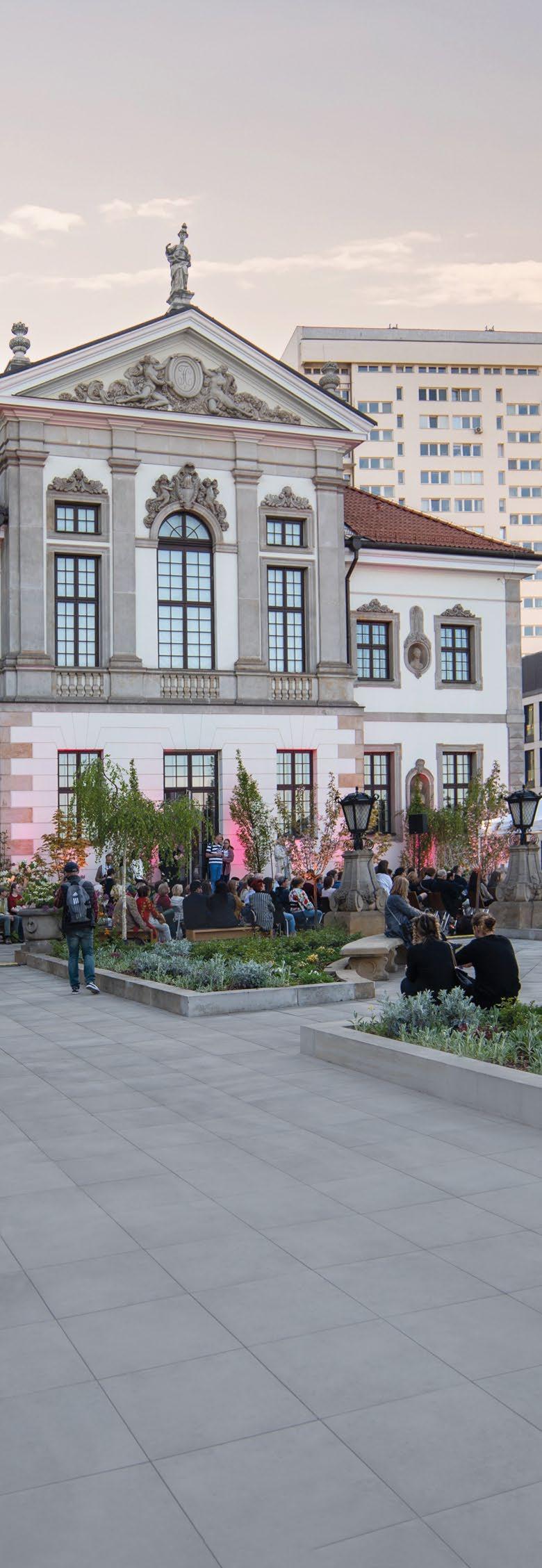
Completed in a Baroque style in 1730, Ujazdowski was gutted by fire during WWII. Though the original walls and foundations remained structurally sound, the communist authorities decided to tear it down and build a military theatre on the site. Common sense prevailed and the 1970s saw Ujazdowski rebuilt to its original design. Today several large exhibition halls showcase a rotating collection of the very best contemporary art; find a wild mix of the good, the bad and the ugly, by leading Polish and international artists. The gallery also houses a very good bookshop and reading room where you can freely peruse a huge collection of albums, magazines and books - many of which are in English. There is also a fantastic cinema on site (U-Jazdowski Kino), plus a top-notch restaurant/ café, and it’s surrounded by a lovely park. Visiting time: 2hrs.QI-10, ul. Jazdów 2, MPolitechnika, tel. (+48) 22 628 12 71, www.u-jazdowski.pl/. Open 11:00-19:00; Thu 11:00-20:00; closed Mon. Admission 16/8zł to all exhibits; 2 exhibits 12/6zł; 1 exhibit 10/5zł; project room 5zł; students up to 26, 1zł; Thu free. U
Located inside a huge and decidedly bizarre interwar building, this is Warsaw’s most comprehensive art museum, leading you from the ancient world through the middle ages up to the 19th century. Along the way you’ll see the some of the country’s
most priceless works, including 15th century Dutch masters and Botticelli, plus Polish masters like Chełmoński, Matejko and Wyspiański. There’s also the Gallery of Polish Design and the Faras Gallerythe latter of which holds a rare exhibit of medieval Nubian art from the Nile River Valley, plus temporary exhibits. Visiting time: 3hrs.QH-8, Al. Jerozolimskie 3, MNowy Świat-Uniwersytet, tel. (+48) 22 621 10 31, www. mnw.art.pl. Open 10:00-18:00; Fri 10:00-20:00; closed Mon. Admission 20/10zł for permanent exhibits; kids and students up to 26, 1zł; Tue free. U
Unmissable. Zachęta National Art Gallery is one of the leading art galleries in Poland, with a focus on the contemporary. Located in a beautiful Renaissance-style palace in the centre of Warsaw, just across from the Saxon Garden, the setting itself is worth a visit. The name of the gallery derives from the Polish word for encouragement and refers to the group that created it in 1860: - The Society for the Encouragement of Fine Arts. While they have their own collection, there is no core permenant exhibition on display, but rather topnotch temporary exhibits showcasing the best in Polish and international contemporary art. As a result you get leading-edge art in an old European environment! Visiting time 60-90mins.QF-6, Pl. Małachowskiego 3, MNowy Świat-Uniwersytet, tel. (+48) 22 556 96 00, www. zacheta.art.pl. Open 12:00-20:00; closed Mon. Admission 20/10zł, family ticket 25zł, students 2zł. Thu free. U6
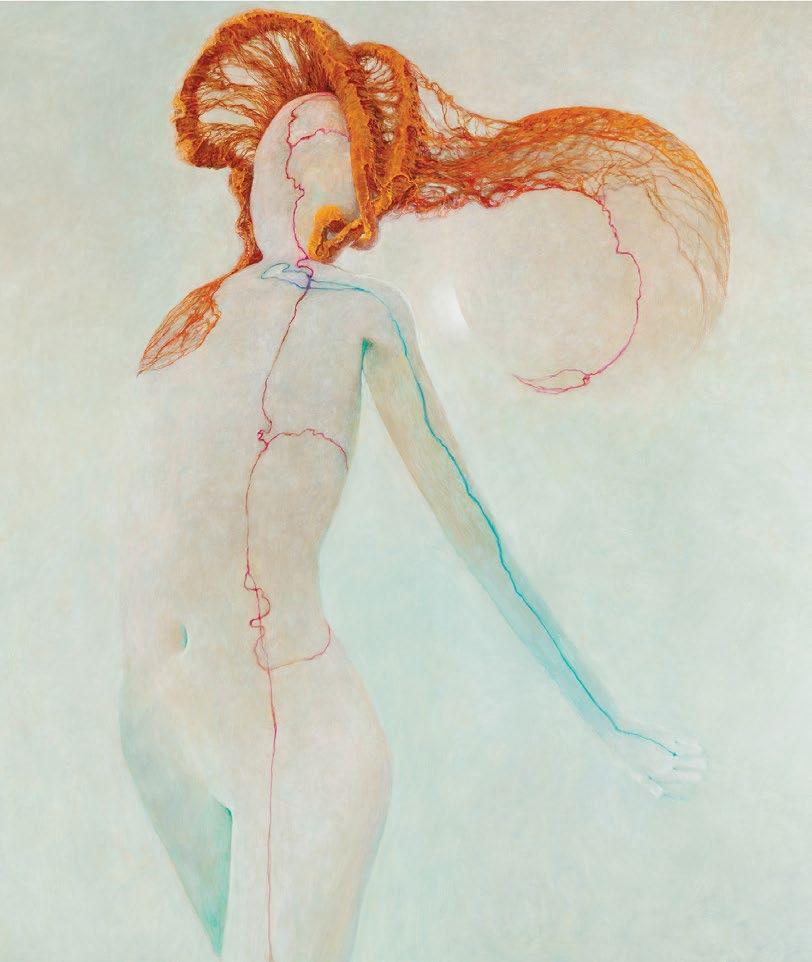
The first gallery solely devoted to the internationally-renowned world of Polish fantasy/ surrealist art. Residing within the grounds of the Praga Koneser Center (p.57) in Warsaw’s Praga district, the Museum of Fantastic Art features the elder statesmen - Zdzisław Beksiński, Jerzy Duda-Gracz, and Wiesław Wałkuski - as well as the extremely-talented newer generation of artists who have drawn upon the legacy of their predecessors to push the boundaries even further and bring an impressive new quality to this unique artistic circle. Most of the works of art on display have never been presented to the public before, which is yet another reason why this exhibition is a must-visit for art lovers in Warsaw!
QK-3, ul. Ząbkowska 31, MDworzec Wileński, tel. (+48) 798 82 27 65, www.muzeumsztukifantastycznej.pl. Open 11:00-19:00. Admission 35/25zł.
PUL
© Zdzislaw Beksiński | CN
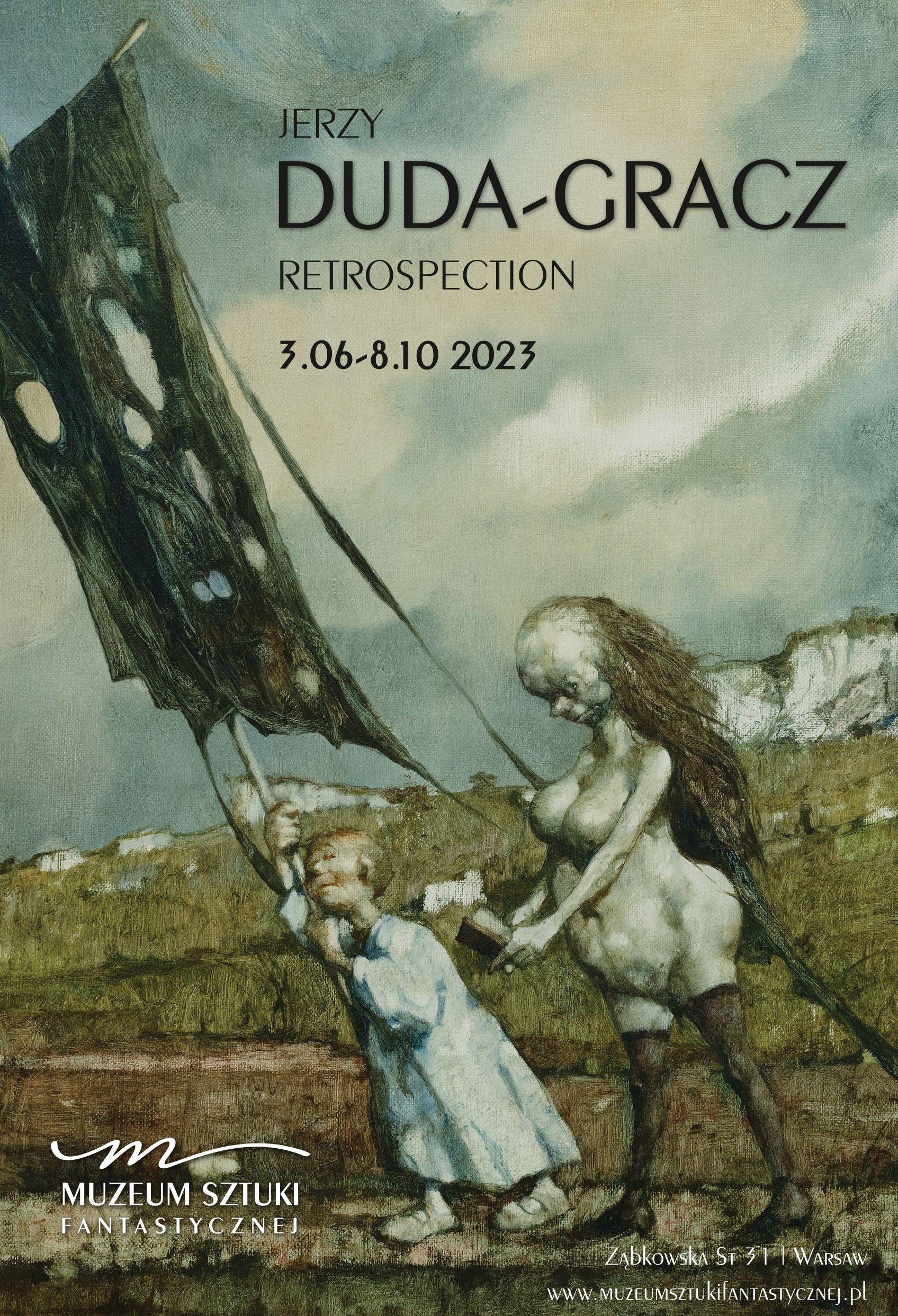
When Nazi Germany invaded Poland in September 1939, Warsaw’s thriving Jewish population numbered approximately 350,000 - only New York City could boast a larger community.
Although anti-Semitism was by no means rare, Poland had been seen as a relative safe haven, and it attracted Jewish settlers forced into flight by more discriminatory regimes elsewhere. By the inter-war years the Jewish population had made significant contributions to the social, political and cultural fabric of Poland.
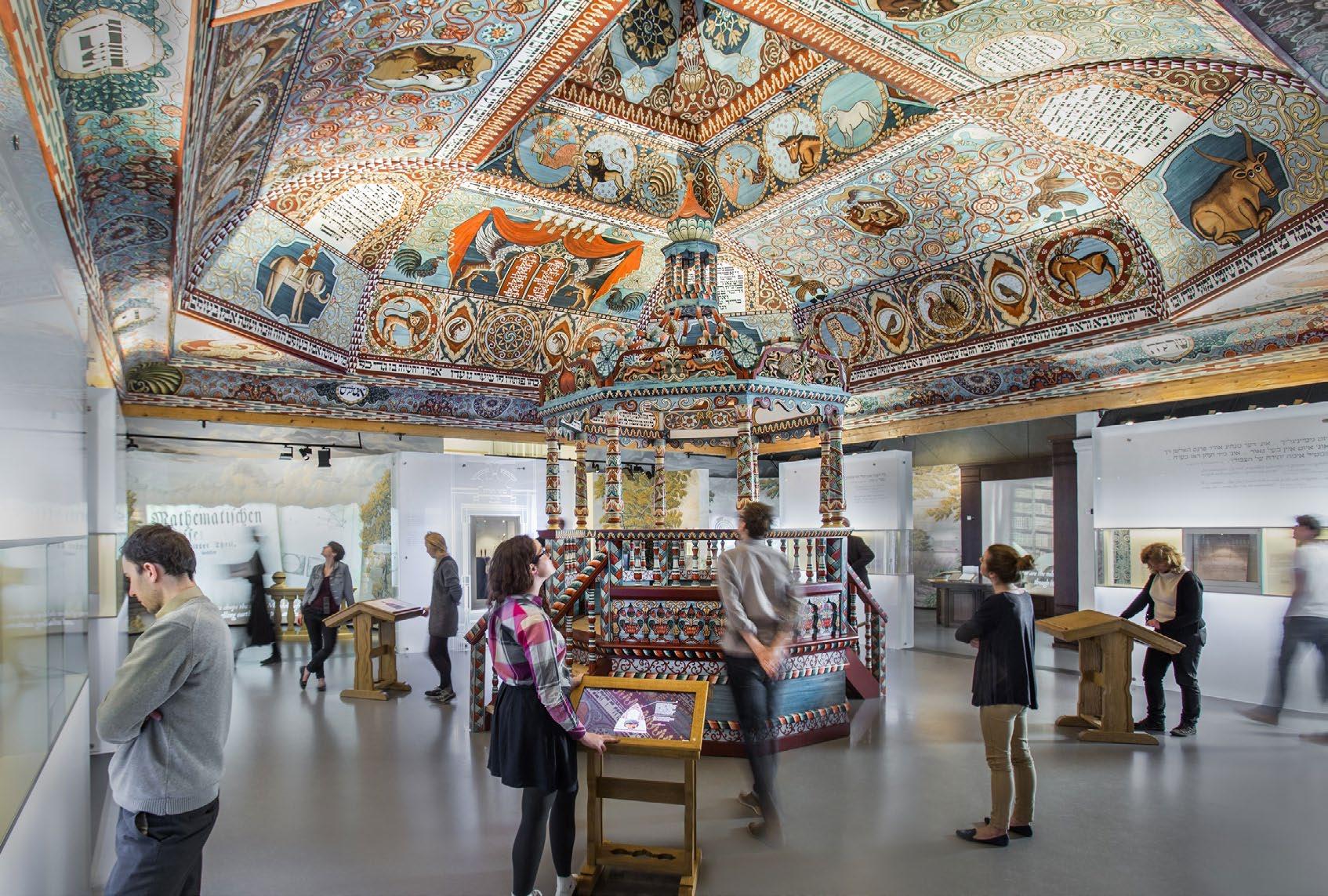
As we know, Nazi occupation meant the complete dehumanisation and systematic destruction of Poland’s Jews, who were first forced into ghettos, where they faced violence, starvation and disease, and then deported to Nazi death camps where they were executed. The Warsaw Ghetto was the largest of WWII and occupied much of the City Centre, as you can see by its outline on the maps in this guide (p.2, p.23). At its height it imprisoned 460,000 Jews in an area of 3.4km2. After more than 254,000 Varsovian Jews were sent to their deaths at Treblinka in the summer of 1942, those remaining began building bunkers and smuggling weapons into the Ghetto in preparation for what would be the war’s largest act of Jewish resistance. Beginning on April 19, 1943, Jewish fighting units engaged German troops
in guerilla warfare within the walls of the Ghetto in a final, doomed act of bravery, defiance and protest against the world’s silence and inaction. When the Warsaw Ghetto Uprising ended 27 days later with the German command’s symbolic detonation of the Great Synagogue, 13,000 Jews had been killed, almost half of them perishing from the fire and smoke as the Nazis burned the Ghetto to the ground, building by building. Of the remaining 50,000 Jews, almost all of them were captured and perished at the Majdanek or Treblinka Nazi death camps.
Following WWII, much of Warsaw’s surviving Jewish population chose to emigrate to the U.S., the British mandate of Palestine (taking an active part in the creation of Israel) and elsewhere. Today Warsaw’s Jewish community is estimated at only about 2,000, but the city’s Jewish heritage remains an essential part of its identity, honoured today by innumerable monuments, memorials, museums and events, foremost among them the POLIN Museum, presenting the history of Polish Jews, and the annual Singer’s Warsaw Festival For a full list of Jewish tourism sites in Warsaw, visit our website
Only 350m from the POLIN Museum, this small mound and memorial marks the site of the large bunker from which the Warsaw Ghetto Uprising was lead by the Jewish Combat Organisation (ŻOB). Located beneath the tenement at the wartime address of ul. Miła 18 (today Miła 2), the bunker was discovered and surrounded by the Nazis on May 8, 1943, with about 300 people hiding inside. Given the chance to surrender, half of the occupants - mostly civilians - gave themselves up, but the ŻOB insurrectionists chose to stay and fight. When the Nazis used gas to force them out, many of the ŻOB fighters chose suicide. 120 fighters died, including ŻOB commander Mordechai Anielewicz and his girlfriend Mira Fuchrer; only about 15 survived (many of whom perished later). The bodies of the dead were never exhumed and covered over with rubble from the surrounding tenements to make this mound after the war. Today two monuments can be found on/near the memorial with inscriptions commemorating their sacrifice.QD-3, ul. Miła 2, MDworzec Gdański.
This amazing historical building that stood next to Warsaw’s Great Synagogue houses the Oneg Shabbat Archive, also known as the Ringelblum Archive - a secretly kept collection of documents, reports, essays, letters and other materials recording exactly what life was like in the Warsaw Ghetto, by those who were experiencing it, as it happened. As the Ghetto came under siege in 1943, the vast and carefully organised archive was secretly buried in three containers in three separate locations. Sadly, only the first two have been recovered, but they represent such extraordinary witness testimony that they were inscribed on UNESCO’s Memory of the World List. In the permanent exhibit here you will see the original documents of the Archive, the authentic containers and more. Incredibly powerful and important, if you don’t have the time for the POLIN Museum, this is a great alternative. There are also temporary exhibits and an excellent bookshop. Visiting time: 90mins.QE-5, ul. Tłomackie 3/5, MRatusz Arsenał, tel. (+48) 22 827 92 21, www.jhi.pl. Open 09:0018:00; Tue 09:00-20:00; Fri 09:0016:00; Sun 10:00-18:00; closed Sat. Admission 15/10zł. Mon free.
A beautiful and poignant place to visit, this is Warsaw’s only active Jewish cemetery. Established in 1806 beyond the city trenches (‘okopy,’ where today’s Okopowa Street runs), the cemetery houses some 200,000 tombs and is the final resting place of many generations of Varsovian Jews, including Ludwik Zamenhof, inventor of the international language Esperanto.QB-5, ul. Okopowa 49/51, tel. (+48) 22 838 26 22, www.cemetery.jewish.org.pl. Open 10:00-16:00; Fri 10:00-15:00; closed Sat. Admission 10zł. N
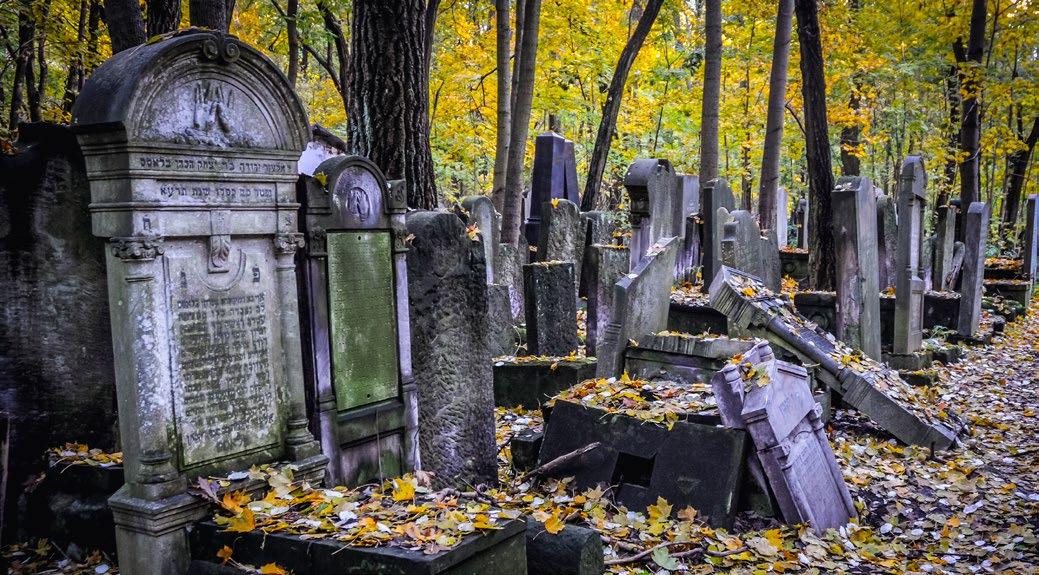
One of the best museums in Poland, the POLIN Museum explains a millennium of Polish Jewish history and relations through multimedia displays that earned the 2016 European Museum of the Year award. Located within the former Warsaw Ghetto, the modern building itself is a stunning structure of copper and glass. Inside, each gallery addresses a different era in the history of the Jewish people in PL, from the 10th century to the tragic events of the 20th. While the Holocaust is described in detail, the permanent exhibit is primarily a celebration of 1,000 years of Jewish life in PL. Exhaustive and fascinating, it takes the better part of a day to explore. The temporary exhibits are of such quality that they require their own ticket, and the museum is also home to a cafe and an excellent restaurant serving traditional Jewish cuisine (kosher dishes available). In the middle of a green public square, outside the museum visitors will also see several monuments, including a massive memorial the heroes of the Warsaw Ghetto. See website for more details! Visiting time: 3hrs.QD-4, ul. Anielewicza 6, MRatusz Arsenał, tel. (+48) 22 471 03 01, www.polin. pl. Open 10:00-18:00; Sat 10:00-20:00; closed Tue. Perm. exhibit 30/20zł; temp. exhibit 20/15zł; students and kids 7-26 1zł; kids under 7 free; Thu free. Audioguide 12zł. U
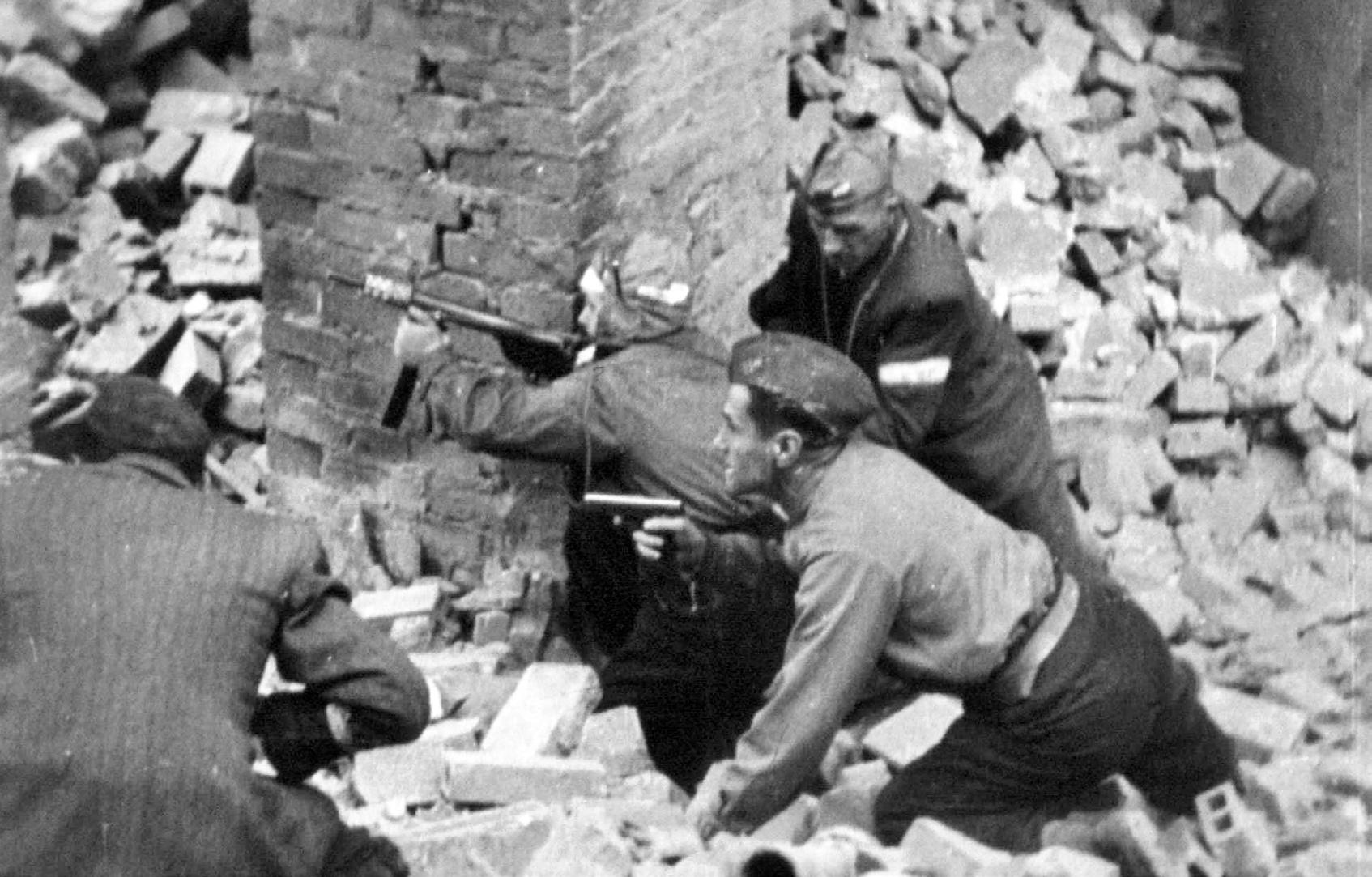
August 1, 1944 . Warsaw, subject to five years of fascist hegemony, rose up in rebellion in what would be the largest uprising in the German occupied territories.
With German morale in ribbons, a retreat from Warsaw in full swing, and the Red Army on the east bank of the Vistula, no time seemed better than the present. Following close contact with the Polish government-in-exile, and assurances of Allied aid, the Home Army (Poland’s wartime military movement a.k.a the ‘Armia Krajowa’ or AK) launched a military strike with the aim of liberating Warsaw and installing an independent government. What ensued was an epic 63-day struggle during which the Home Army faced the full wrath of Hitler’s forces.
On orders from General Tadeusz ‘Bor’ Komorowski, 17:00 signalled W-Hour (‘Wybuch’ standing for outbreak), the time when some 40,000 members of the Home Army would simultaneously attack key German positions. Warsaw at the time was held by a garrison of 15,000 Germans, though any numerical supremacy the Poles had was offset by a lack of weaponry. Nonetheless the Germans were caught off guard, and the Poles captured a string of strategic targets, including the Old Town, Prudential Tower and the post office. The first day cost the lives of 2,000 Poles, yet for the first time since occupation the Polish flag fluttered once more over the capital.
Within days German reinforcements poured in, and on August 5th and 6th Nazi troops rampaged through the western Wola district, massacring over 40,000 men, women and children in what would become one of the most savage episodes of the Uprising. It was to prove a mixed first week for the Poles. In liberated areas, cultural life thrived. Better still, the first allied airdrops hinted at the support of the west. As it turned out, this was just papering over the cracks. The Germans, under the command of Erich von dem Bach, replied with heavy artillery, aerial attacks, armoured trains and tanks.
Fantastically ill-equipped, the one thing on the insurgents' side was an almost suicidal fanaticism and belief. Casualties were almost 20 times as high as those inflicted on the Germans, yet the Poles carried on the fight with stoic self-assurance. Airdrops were vital if the uprising was to succeed, though hopes were scuppered with Stalin’s refusal to allow Allied planes landing rights in Soviet-held airports. Instead the RAF set up a new route running from the Italian town of Brindisi to Warsaw, though casualty rates proved high with over 16% of aircraft lost, and the drops often inaccurate. All hopes rested on the Russians.
After six weeks of inaction Red Army Marshal Rokossovsky finally gave the go-ahead for a Polish force under General Berling to cross the river. The operation was a debacle, with heavy casualties and no headway made. This single attempt at crossing the Wisla was enough; Warsaw was on its own. Already by this time the situation in Warsaw’s Old Town had become untenable, and a daring escape route was hatched through the sewers running under the city. The Germans were now free to focus on wiping out the remaining outposts of resistance, a task undertaken with glee. Abandoned by her allies the Poles were forced to capitulate, some 63 days after they had taken on the Reich.
Having deposited their weaponry, 11,668 Polish soldiers marched into German captivity. The battle had cost up to 200,000 civilian lives, while military casualties between Germans and Poles would add a further 40,000 to the figure. Remaining inhabitants were exiled (though around 2,000 are believed to have seen the liberation by hiding in the ruins), and the Germans set about obliterating what was left of the city. ‘No stone can remain standing,’ warned Himmler, and what happened next can only be described as the methodical and calculated murder of a city. Buildings of importance to Polish culture were dynamited by teams of engineers, while less historic areas were simply burned to the ground. Modern studies estimate the cost of damage at around $54bn. In human terms Poland lost much more. With the Uprising died a golden generation, the very foundation a new post-war Poland could build on.
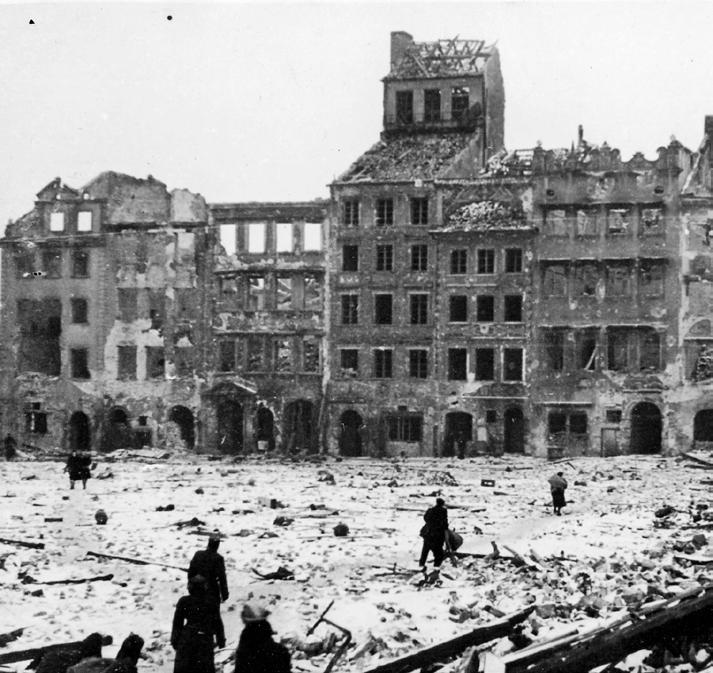
Opened in 2004, this remains one of Poland’s best museums. Packed with interactive, multimedia displays, period artefacts, photos, video footage and plenty of sounds effects, this museum is guaranteed to leave a mark on all visitors. Occupying a former tram power station, the 2,000m2 space is split over several levels, leading visitors through the chronological story of the 1944 Uprising - provided they don’t make any wrong turns; it’s a common mistake, and, as such, an audiguide is handy (follow the numbers even if you don’t have one). Crowded on weekends, weekdays are the best time to visit, and you should set aside several hours for the experience.
Visitors start by learning about life under Nazi rule, with immersive displays including a clandestine radio station and covert printing press. The mezzanine level features a film detailing the first month of battle, including the opportunity to clamber through a mock sewer. There is also an exact replica of the B24 Allied planes used to make supply drops over the besieged city. The final sections are devoted to the creation of a Soviet puppet state, a hall of remembrance, and a particularly poignant display about the city’s destruction; take time to watch the black and white ‘before and after’ shots of important Warsaw landmarks being systematically obliterated by the Nazis.
Near the exit check out the film City of Ruins, a silence-inducing 5min 3D aerial ‘film’ that uses old photos and new tech to recreate the desolation of ‘liberated’ Warsaw in March 1945. A viewing platform (open weather permitting) and ‘peace garden’ wrap up this high impact experience. Visiting time: 3hrs.QB-7, ul. Grzybowska 79, MRondo Daszyńskiego, tel. (+48) 22 539 79 05, www.1944.pl. Open 09:00-18:00; Sat, Sun 10:00-18:00; closed Tue. Admission 30/25zł (kids under 7 free), Mon free. Audioguides in 27 languages 10zł/person. U

Hey, it doesn’t all have to be exhausting museums and knee-lifts as you explore Poland’s largest city. Check out the local activities below if you’re looking for fun alternatives to traditional sightseeing, ready to try something new, or simply want some rest and relaxation.
Hulakula Leisure Centre
This modern indoor family entertainment centre has it all. Strut you stuff on one of their 28 10-pin bowling lanes, break balls on one of 8 LEO Black King billiard tables, or go old-school with their classic arcade games, pinball machines and air hockey tables. There’s a soft-toy toddler zone, plush castle maze playground for older kids, restaurant, bar, seasonal grill and even DJ parties after the kids go home.Qul. Jagiellońska 82B, MDworzec Wileński, tel. (+48) 669 00 10 01, www.hulakula. com.pl. Open 12:00-23:00; Wed 12:00-01:00; Thu 12:00-02:00; Fri 12:00-03:00; Sat 10:00-03:00; Sun 10:00-23:00. U

Stacja Grawitacja
Gravity getting you down? Get the bounce back in your step at this huge trampoline park that also features 3D virtual reality gaming by Hologate, a ropes course, obstacle course, basketball and volleyball courts and even a climbing wall with routes for all ages and abilities. Put on anti-slip socks and join the fun. Children ages 3-6 must be accompanied by adults; older kids can be let loose while their parents hang out at the well-stocked cafe.

Qal. Bohaterów Września 12, tel. (+48) 726 13 06 66, www. stacjagrawitacja.pl. Open 10:00-22:00; Sat, Sun 10:00-21:00.
Thai Bali Spa continues a 2000-year-old tradition of massage therapy which aids in keeping the mind, body and soul healthy. Choose from traditional, oriental massages that use appropriate lighting, plus music, smell and touch to put you in a state of deep relaxation and tranquility. The skilled massage therapists - all of whom hail from Thailand or Bali - will have you feeling fresh and rejuvenated in no time. Also at ul. Grzybowska 3 (E-7).QG-7, ul. Nowy Świat 48, MNowy Świat-Uniwersytet, tel. (+48) 663 55 11 22, www.thaibalispa.pl. Open 11:00-20:00.

Found inside Galeria Młociny (p.100) in the northern district of Bielany, this modern entertainment centre is just 2 mins away from the final stop of the M1 metro line ‘Metro Młociny’. Once you’re there, you have the choice of 12 bowling lanes, 3 billiards tables, and a table shuffleboard, plus a bar that also dishes out Neapolitanstyle pizza! Call in advance to reserve.Qul. Zgrupowania AK Kampinos 15 (Galeria Młociny, 2nd floor), MMłociny, tel. (+48) 600 80 05 56, www.mkbowling.pl/start-warszawa. Open 12:0022:00; Fri 12:00-24:00; Sat 10:00-24:00; Sun 10:00-22:00.
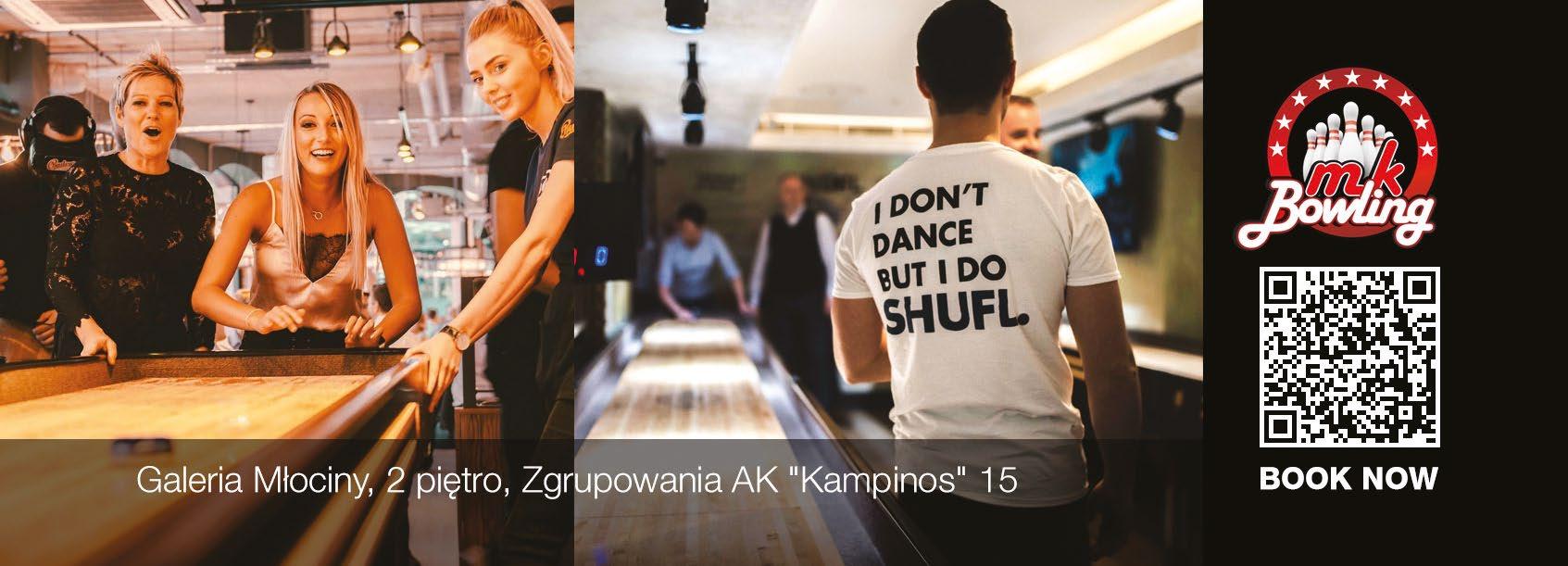
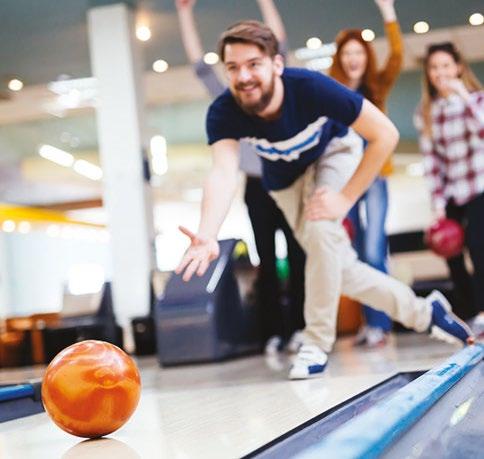

A strict break from the stuffiness of the Old Town, this fun, colourful museum is exciting and educational for all ages. Enter the Matrix, a mirror room, a vortex, the room of shadows, and a brand new upsidedown room - each and every one out-of-this world! Pefect for groups and pairs, make sure your phone is fully charged so you don’t miss these photo-ops, and go discover the extent to which the mind can be tricked by the eye.QF-4, Rynek Starego Miasta 21, MRatusz Arsenał, tel. (+48) 501 80 80 06, www.swiatiluzji.pl. Open 09:00-20:00; Sat, Sun 10:0021:00. In July and August daily 10:00-21:00. Admission 39/27zł. 6
Relax in an armchair within a mesmerising salt-brick interior, whilst you experience its sensual sands between your toes, a soundtrack of calming atmospheric music, and the revitalising tang of salted air in your lungs and on your skin! Inhalatorium Solne is a certified salt therapy centre, practising the treatment of dry salt aerosol (AKA ‘halotherapy’), the healing properties of which have a tonne of respiratory and dermitalogical benefits!QD-5, Al. Solidarności 82 lok. U8, MRatusz Arsenał, tel. (+48) 512 13 70 04, www.inhalatoriumsolne.pl. Open 10:00-20:00. Admission 25/22zł.

While Warsaw has plenty of wonders, not every cultural site is going to be engaging for young visitors. The first step to having a successful family vacation is probably to just accept that what you and your kids want to do are not going to be one and the same. That said, there’s common ground to be found in some of Warsaw’s most popular attractions.
Wandering the Old Town (p.32) or Łazienki (p.50) will likely please everyone, as will a visit to one of Warsaw’s many beaches (p.12) in this fantastic summer weather. Fabryka Norblina (p.26), there are more child friendly activities in one place than you could ever wish for (p.10), including Smart Kids Planet and the awesome Apple Museum Poland (p.62). There are a bunch of other great cultural institutions for kids, such as and the Copernicus Science Centre (p.49) and the World of Illusion (p.71).
Although it may sound more like punishment, kids really respond to the interactive exhibits of the highly modern Warsaw Rising Museum (p.69), which features areas designed specifically for young visitors. Slightly older children, as well as those who are showing creative potential, should spend some time in the Museum of Fantastic Art (p.64) as well as the other galleries listed on p.59. Travelling a little further out from the centre of Warsaw to places like the Galeria Północna Rooftop Garden and MK Bowling Entertainment Centre (p.71) can be rewarding.
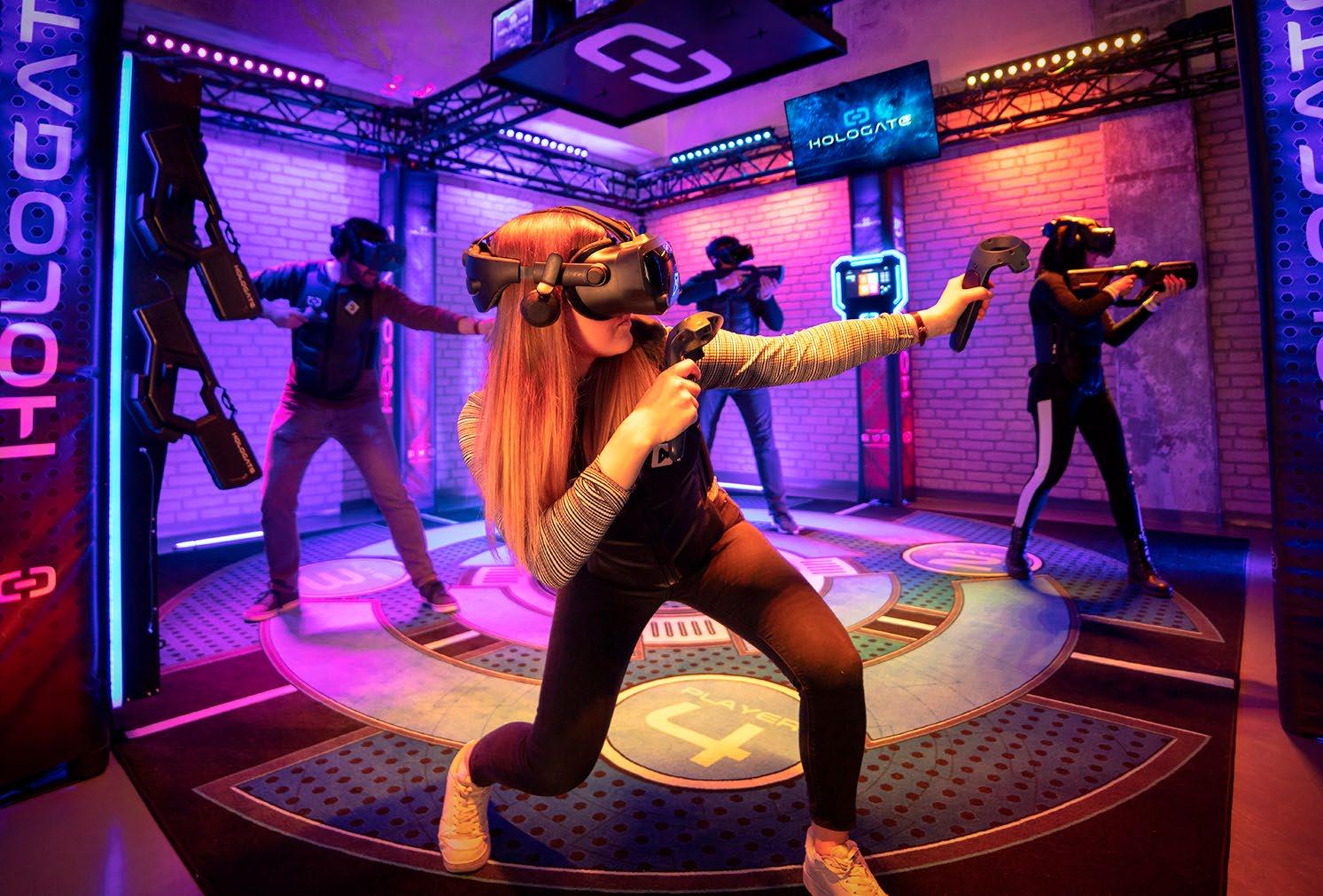
Panoramic viewpoints are also a winner with kids, so in addition to those at the Rising Museum and University Gardens, check out St. Anne’s tower (p.40) near Plac Zamkowy, and the viewing terrace on the 30th floor of the Palace of Culture & Science (p.21).
Located in Warsaw’s north-eastern Białołęka district, Galeria Północna (p.100) is more than just a shopping centre. It is also home to a lush rooftop garden, which spans an area of 5,000 m2 and features a range of leisure activities among the high-yielding greenery. Within the garden itself, you can a food court, spatial sculptures, water wheel, and Poland’s largest large-format mural dedicated to children, which creates a magical 3D waterfall with rocks. There’s also two playground, complete with slides, tunnels and obstacle courses. For older visitors, a photography exhibition titled ‘Sielsko’, which is dedicated to the Polish countryside, rural landscapes and nature, is currently displaying. Concerts and artistic performances are also planned in 2023, with a stage and other facilities ready to go! Various
species of grasses and plants adorn this fantastic space, as well as small architectural elements, which make the Galeria Północna garden a peaceful oasis in the middle of Poland’s bustling capital! You can get to Galeria Północna from the city centre easiest by the Metro - Hop on the ‘Młociny’ line and head to the end, then get either tram 2 or 17 to stop ‘Śreniawitów’. Alternatively, take bus no.s 152, 186, 211, 214, 509 or 518 to stop ‘Milenijna’.Qul. Światowida 17, MMetro Młociny, tel. (+48) 22 812 84 84, www.galeriapolnocna.pl. Open 10:00-22:00; Sun 10:00-21:00*. T
Opened in 1928, Warsaw Zoo covers an area of 40 hectares and attracts some 500,000 visitors each year. In total there are 13,000 animals here, across 500 species. Conditions have improved dramatically in recent years, though a visit here will do little to change any opinions you have on locking animals in cages. It was bombed at the beginning of the conflict and by 1945 all the animals had either been killed, deported to the Third Reich, eaten by locals or escaped into the wild. Zoo director, Jan Żabiński, became something of a hero; wounded during the 1944 Warsaw Uprising, he helped save countless lives by sheltering Jewish orphans inside the grounds of the zoo.QH-3, ul. Ratuszowa 1/3, MDworzec Wileński, tel. (+48) 22 619 40 41, www.zoo. waw.pl. Open 09:00-18:00; Sat 09:00-19:00. Admission 35/25zł.
Young families visiting Warsaw need not worry about wholesome and constructive fun for the kids! Head along to Fabryka Norblina (p.26) and you will find Smart Kids Planet - the first edutainment center in Poland, that is, a recreational format that bridges the gap between playrooms and science centers. Divided into 9 thematic zones and with over 50 engaging activities throughout, young minds can journey through many different worlds - building construction, food and fresh produce, sports, the magic of machinery, outer space, and much much more! This world of limitless imagination and exploration has an important ulterior motive - the development of their competencies for the future, learning how to cooperate, becoming ecologically conscious and, perhaps most importantly, using and becoming familiar with the latest in our fast-moving universe of technologies. Whilst the kids are having fun, parents can enjoy one of the 3 rest zones, including a cafe with a kids menu. There’s also the Smart Kids Store (p.96) where different products allow for the educational fun to be continued at home! For children aged 0-10 QD-8, ul. Żelazna 51/53 (Fabryka Norblina), MRondo ONZ, tel. (+48) 727 77 08 80, www. smartkidsplanet.pl/. Open 09:00-20:00. PUL

Nowhere is Warsaw’s vibrancy and diversity more apparent than in its progressive culinary scene. What follows are some of the most noteworthy dining establishments in the capital, divided into basic categories with the type of cuisine listed under the venue name; for more options visit our website. In terms of tipping, 10% is standard (easy math). Smacznego!

utensils Polish
Garnering the Grand Award (that is, 5 forks) from the prestigious gastronomic list of Poland 100 Best Restaurants, Nova Wola encapsulates the spirit of central-west Warsaw’s trendsetting Wola district, and absolutely nails the concept of ‘premium casual’ dining. This industrial chic interior with big city views is where Nova Wola delivers a decidedly modern take on Polish cuisine. Under Executive Chef Paweł Suchenek’s direction, the menu emphasizes simple plates made with high-quality ingredients sourced from local suppliers and foraged in the wild. Find rich soups, premium Polish seasoned beef steaks, fish, as well as a special seasonal menu, with many of the entrees and soups available in larger portions, ideal for sharing. Upscale, yet relaxed, Nova Wola is perfect for every occasion. make an evening reservation for over 5 people and get a complementary bottle of Ostoya vodka; na zdrowie!
QC-8, Rondo Daszyńskiego 2, MRondo Daszyńskiego, tel. (+48) 22 377 38 01, www.novawola.com. Open 12:30-16:00, 17:00-22:30. €€€. TU
utensils Japanese
Located right on Nowy Świat (with a lovely seasonal terrace, plus additional locales in the Blue City and Galeria Mokotów shopping malls), Tokyo Sushi is a great place to take a break from shopping or sightseeing for a healthy and filling lunch. The menu is absolutely exhaustive, encompassing almost any kind and combination of sushi you could desire, plus soups, salads, sashimi, gunkan, tartar, hot dishes with rice and 650ml bowls of ramen. If you can’t decide what you want, simply grab what looks good (everything?!) from the ready-made sushi rolls and salads going by on the conveyor; each is colour-coded by price from 8-15zł. Popular with the local business lunch crowd, there are many value deals to be had in the afternoon - including weekends - and the sheer volume of food being served ensures that all the ingredients are exceptionally fresh.
QG-7, ul. Nowy Świat 50, MNowy Świat-Uniwersytet, tel. (+48) 22 657 15 89, www.tokyosushi.com.pl. Open 11:00-23:00. €€€. TV6


For some the direction of the day depends on the ability to eat a good breakfast, so we’ve highlighted some of our favourite places in Warsaw that specialise in śniadania (the Polish word for breakfast). Whether you’re an early bird or a late riser, get a good first feed in the places listed here!
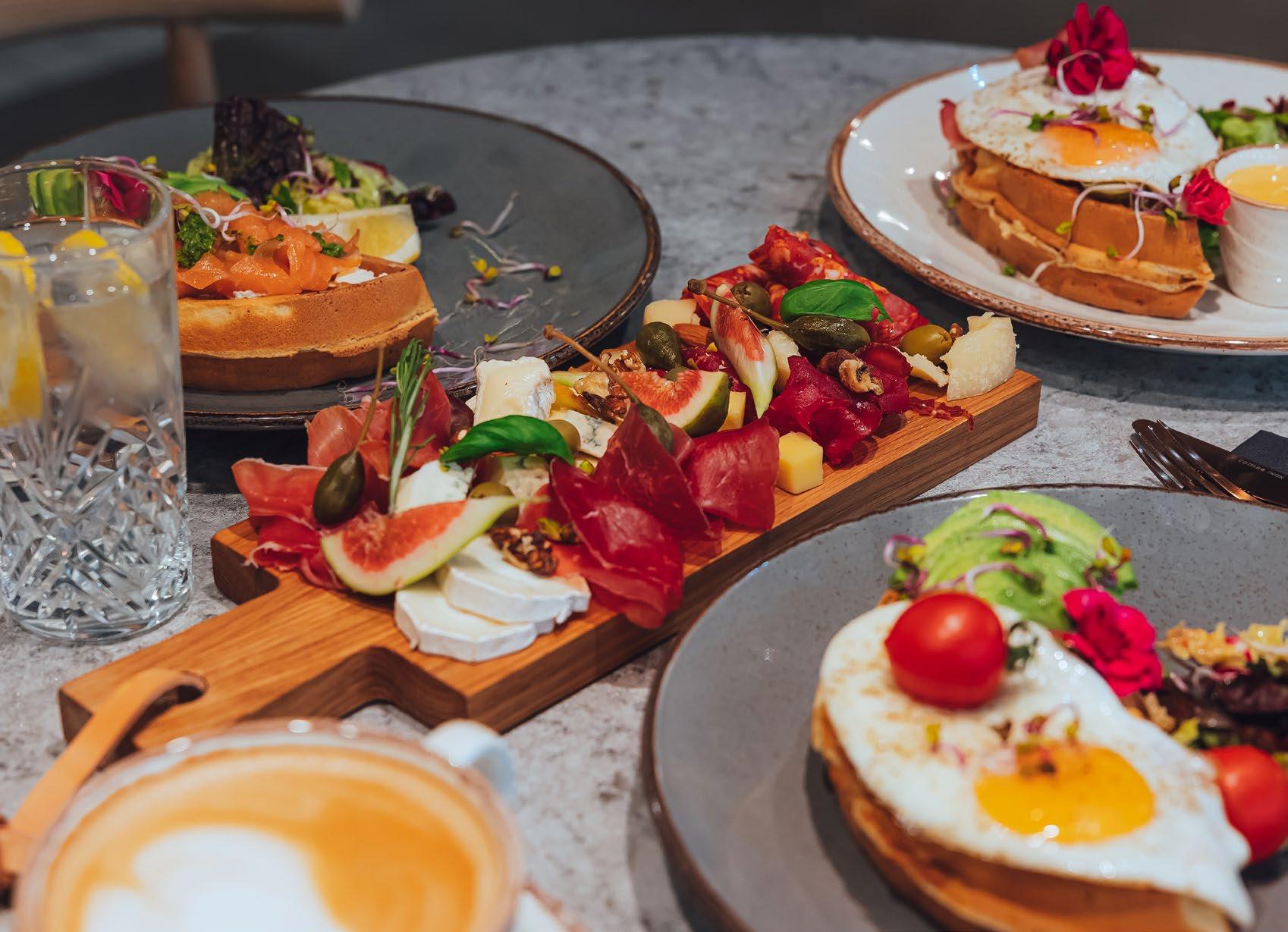
Located within the elegant Crowne Plaza Hotel, Nova Wola encourages a wholesome start to your day in Warsaw, with a fresh and organic breakfast selection as part of its impressive modern Polish menu offer (p.75). Whether you opt for the breakfast buffet or a la carte, you’ll find light and healthy options crafted from local and seasonal ingredients. The breakfast menu includes favorites like omelettes with customizable add-ins, shakshouka, avocado toast with kale tapenade, and oatmeal with seasonal fruit. For those seeking unique choices, Nova Wola also offers baked sweet potatoes with yogurt, berries, and granola, as well as hummus with grilled vegetables and egg. Additionally, the restaurant stands out by offering entire pots of coffee, ensuring you have ample caffeine to energize yourself for the day ahead.QC-8, Rondo Daszyńskiego 2, MRondo Daszyńskiego, tel. (+48) 22 377 38 01, www. novawola.com. Open 06:30-10:30; Sat, Sun 06:30-11:00.
€€€€. TU
At this stellar bakery/bistro, it all starts with their own artisanal bread, which forms the basis for many of their breakfast options (served all day), including stacked bagels, sandwiches, French toast and more. But SAM offers a wide menu of delicious, diverse and healthy dishes, including many vegetarian/vegan and gluten-free options, plus vitamin-rich juice cocktails. Taking their healthy philosophy further, everything they offer is all natural and made from scratch. With such strong credentials, and a location next to the University Library, you can bet it’s popular, so don’t be surprised by slow service at peak times; the full house of hipsters let’s you know it’s worth the wait. Also at ul. Twarda 4 (Plac Grzybowski, E-7).QH-6, ul. Lipowa 7A, MCentrum Nauki Kopernik, tel. (+48) 600 80 60 84, www.sam.info.pl. Open 08:00-22:00; Sat, Sun 09:00-22:00. €€. TU6
Escape just beyond the medieval confines of the Old Town walls to find this charmingly twee cafe specialising in coffee, cakes, quiche and delicious fruit crumbles. Favouring the cosy cafe culture of smaller historic cities, such a setting is perfect when it comes to indulging in aromatic coffee and rich cakes. Breakfast menu is served all day, as well as wraps and some savoury snacks. The name translates to ‘I like this’ and indeed we do.QF-3, ul. Freta 8, MRatusz Arsenał, tel. (+48) 22 635 90 23, www. tolubie.pl. Open 09:00-22:00; Mon 10:00-22:00. €. 6
In addition to their unique intersection of traditional Polish and Galician cuisine (p.83) Rest. Baczewskich is now serving breakfasts (8:00-11:45 during the week, 9:00-11:45 on weekends). You can find shakshuka, porridge and granola, alongside one of their many hearty breakfast sets - ‘Lviv’ offers parówki sausages with fried eggs, pâté, and a salad mix, while ‘Warsaw’ steps it up with a grilled kiełbasa sausage and side of traditional Polish cottage cheese, radish and chives in a mix. The more indulgent of you may opt for the naleśniki pancakes, with smoked salmon and caviar as a filling. Those privy to all things steamy and sweet will best be suited with fried serniczki, small thick pancakes made from a cottage cheese mix, served with kaymak cream, almond flakes, cherries and sour cream. Remember that all the essential bakery goods that make their way out to you are freshly-baked on-site every day!QH-11, Aleja Jana Chrystiana Szucha 17/19, MPolitechnika, tel. +48 888 52 26 68, www.baczewskich.rest. Open 08:00-23:00; Sat, Sun 09:00-23:00. €€€€€. TU6
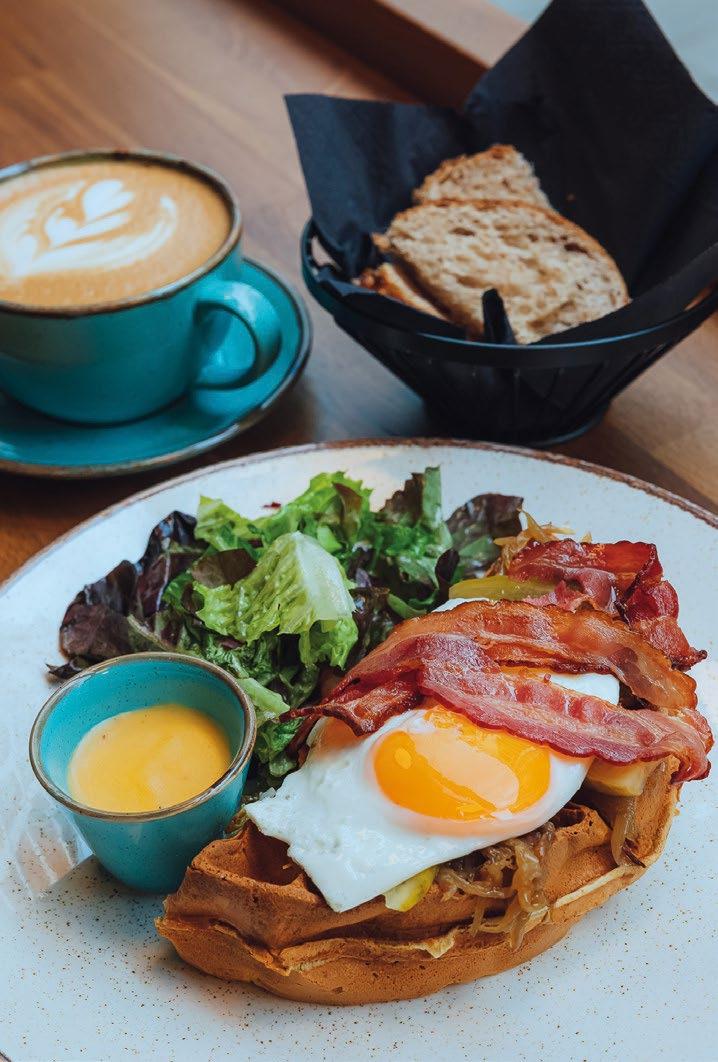
This delightful cafe’s perfect combination of aromatic coffee, mouthwatering dishes, and phenomenal desserts is enhanced by a cozy modern interior design and layout, inviting you and your entourage to come in, relax, and indulge in one of the best breakfast offers in Warsaw! Expertly-prepared coffee is the wingman of a impressive menu of daystarters, notably featuring one of our all-time favourite food items - waffles! In our opinion, Panattoni has the best savoury waffles in the capital, if not Poland! Their phenomenal taste and texture are complemented a variety of toppings, like smoked salmon and avocado. Elsewhere you can find Shakshuka, English breakfast sets, creamy vegetable soups, refreshing salads, as well as plenty of breakfast options for vegan and vegetarian guests. Their delectable desserts, prepared fresh everyday, are a guaranteed fix for your sweet tooth. An enticing selection of original cocktails and craft beer is also part of this fine offer! QC-7, ul. Krochmalna 58 (Browary Warszawskie), tel. (+48) 663 33 77 88, www.panattonicafe. com. Open 08:30-22:00; Sat, Sun 09:00-22:00. T
Sometimes you just need a casual and convenient place to relax, enjoy good food, vibes and hospitality. The following venues deliver in that regard. While our listed opening hours seem self-explanatory, be aware that some venues close their doors if business is slow, while others stay open after the kitchen has closed. In such cases, the hours we list are for the kitchen.
utensils Steak

Hidden away in a small alleyway alongside the famous Roma Theatre, the exterior may look like you’re about to enter a 1970’s Texas shopping mall, but inside it’s a smart, urban steakhouse and bar. The quality of the cuts here is excellent (28 days wet-aged or 30 days dry-aged) and the fact that they use the finest local meats means the prices are surprisingly reasonable. Seafood and Louisiana Chicken Wings struggle for a look-in as beef rules. In addition to a fine wine list, the slick bar has a brilliant selection of whiskies and bourbons, and there’s live music every Tuesday from 19:00. Kitchen closes one hour before closing time!QF-9, ul. Nowogrodzka 47A, MCentrum, tel. (+48) 785 02 50 25, www.beefandpepper.pl. Open 12:0024:00; Sun 12:00-23:00. €€€€. TUE6
utensils International
A popular chain of establishments all over Poland, Bierhalle is an original concept that combines the unique taste of beer produced onsite together with an equally-reputed restaurant that whips up mouthwatering cuisine that is brought to the table by talented and traditionally-frocked waitstaff! Inspired by the experiences of brewers-restaurateurs from Poland and Bavaria, guests at the mighty Bierhalle always take interest in the site’s main attraction - a unique brewhouse made of glass that allows for magic of the brewing process thanks to be observed. While you can assure that your grog hasn’t been phoned in, the restaurant also offers a wholesome range of dishes, from home-made dumplings to ovenbaked pork knuckles, grilled salmon, chicken salads and much much more. Also at Galeria Północna (p.100).QC-2,
€ most mains under 35zł
€€ most mains 35–55zł
€€€ most mains 55–80zł
€€€€ most mains 80–120zł
€€€€€ most mains over 120zł
Al. Jana Pawła II 82 (Arkadia), MDworzec Gdański, tel. (+48)
601 67 79 62, www.bierhalle.pl. Open 12:00-22:00; Fri, Sat 12:00-23:00; Sun 12:00-20:00. €€€. TUBW
utensils Italian
Located a short distance away from the Old Town Square (p.36), Ciao Napoli succeeds in bringing a little piece of Naples to the centre of Warsaw. Offering a selection of antipasti, salads, piadina and desserts, it’s the Neapolitan pizzas, with their fantastic thin and crispy dough, which really distinguish this small family-run franchise. The friendly atmosphere and cosiness of the restaurant also makes an impact, despite its popularity and the fact that its at the heart of one of the capital’s biggest tourist hotspots. That being said, you will leave satisfied, especially when you realise how reasonably priced the whole experience is! Their second location at ul. Piwna 40/42 (F-4) has weekday lunch specials from 12:00-16:00.
QF-4, ul. Wąski Dunaj 4/6/8, MRatusz Arsenał, tel. (+48) 508 69 43 52, www.ciaonapoli.pl. Open 12:00-22:00; Fri, Sat 12:00-23:00. €€. TB6
utensils International
Making a hotel more than just a place for its sleepover guests, NYX has created an inviting first-floor space where urban art and culture collide, and anyone can drop in. With an open floor plan that features traditional dining areas flowing into more casual zones with sofas and armchairs, this is a unique visual aesthetic of retro and modern furnishings together with elegant table settings, flanked by edgy photography and street art. Dine on a unique fusion of Polish-Israeli cuisine, order a signature cocktail, or challenge their bar staff to make you a custom drink. Happy Hour specials from 17:00-19:00, and live music and DJ are often part of the program (check their FB to see what’s on).QD/E-8, ul. Chmielna 71, MCentrum, tel. (+48) 22 346 29 00, www.leonardo-hotels.com/nyxhotel-warsaw. Open 14:30-23:00. €€€. TUE6
Polish
Workers of the world unite around a large choice of well-presented Socialist Bloc cuisine. Deriving its name from a former meeting place for members of the early communist movement, legend has it that even Lenin paid this place a visit in 1909. The interior is based on the style favoured by the 1950’s -1960’s party elite, and the walls are bedecked with memorabilia of the era. Somehow the owners have managed to carefully side swerve tackiness and the whole experience has a lovely, faded and nostalgic glam to it. Immensely popular with locals and tourists alike (including the likes of Bruce
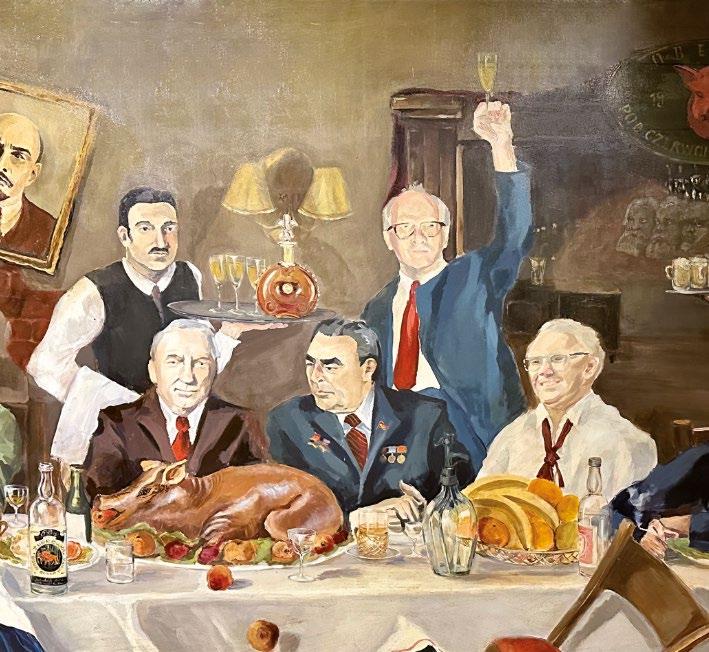
Willis, Lennox Lewis and the Real Madrid football squad), 2012 saw ‘The Hog’ voted one of the 25 best and most interesting restaurants in the world by the Spanish Trade Leaders’ Club. Check out their lunch menu, in action from from Mon to Fri, 12:00-16:00. Kitchen is open till 22:30.
QC-7, ul. Żelazna 68, MRondo ONZ, tel. (+48) 22 850 31 44, www.czerwonywieprz.pl. Open 12:00-24:00. €€€.
TUB
utensils Polish
You can’t visit the capital of Poland without trying some traditional Polish food, right? Gościniec has just that - hearty soups, plump dumplings, potato pancakes and various cutlets - all prepared ‘as they should be’ and at very reasonable prices. You can’t go wrong with pierogi, but we’d personally recommend the pork chops or cabbage rolls stuffed with meat (known locally as gołąbki: go-womp-ki). The drinks on offer are quite funky (cold/hot options), and it’s all served up by friendly staff wearing folk attire. It may feel very kitsch inside, but the food hits the mark and the portions are immense. Additional locations at ul. Nowy Świat 41 (G-7), and deep in the Old Town at ul. Podwale 19 and ul. Piwna 14 (F-4).QG-5, ul. Krakowskie Przedmieście 29, MRatusz Arsenał, tel. (+48) 22 273 69 36, www.gosciniec. waw.pl. Open 11:00-22:00; Fri 11:00-23:00. €€. TB6
utensils Polish
Located directly between the Royal Castle and the Old Town Square, this veteran Polish restaurant is as simple and traditional as it gets. A good option for tourists, families and anyone looking for their first foray into Polish cuisine, the modestly-priced, bilingual menu includes photos of almost every dish. There is a lot to choice, from classics like pierogi (15 types), potato pancakes with goulash and mushroom soup served in a bread bowl, to old school staples that have dropped off most modern menus like tripe soup and chicken livers with fried onions and baked apples. With a tidy, colourful interior and fast service, the experience is easy, accessible and satisfying.QF-4, ul. Świętojańska 15, MRatusz Arsenał, tel. (+48) 22 428 39 43, www.gospoda. waw.pl/. Open 11:00-22:00; Fri 11:00-23:00. €€.
utensils Indian
Over 17 years ago, what began as a modest Indianowned grocery store quickly developed by demand into multiple full-service restaurants. This - the expanded original location - remains the consensus best Indian food in the capital, just ask anyone who lives here. The prices are set so low you can’t help but wonder what’s the catch - there isn’t one; we’ve tried the entire menu
As the capital of a country that traditionally feasts on meat, and smears lard on bread as a snack, you might be surprised to learn that in 2021 National Geographic named Warsaw the top city for vegans in the world
This humble restaurant run by the ‘Margins’ Social Cooperative has achieved what not long ago was considered by many to be inconceivable: their hearty vegan variations of traditional Polish dishes are as, if not more, delicious than their meat-and-egg-based counterparts. That’s quite an accomplishment in a country that fed itself in ‘milk bars’ not so long ago. Alongside seitan, soy and cabbage ‘cutlets’ on their frequently changing menu, you’ll also find vegan versions of popular dishes from international cuisines, plus a few surprises. Large portions, fresh ingredients and low prices make this a great option for a healthy meal, but it’s also a great place to connect with Warsaw’s activist communities.QG-9, ul. Krucza 23/31, MCentrum, tel. (+48) 517 61 51 22, www. lokalveganbistro.pl. Open 12:00-21:00; Sun 12:0020:00. €€. TU6
Opened in 2010, Tel Aviv was one of the first strictly vegan restaurants in PL, earning a cult following and launching a franchise that now has several locations around the capital. This - their original foray into Middle Eastern-inspired vegan street food - remains a popular bastion of foodie culture and social consciousness. Drop in early for sweet baghrir (Maghreb pancakes), take advantage of their generous weekday lunch offer from 12:00-16:00, munch on mezze, inhale their hummus and uncork with some wine. There’s also a decent kids’ menu. Doing well to show that vegan cuisine can be rich, exotic and visually stunning, this place has earned its accolades. Note that though they are open later, the kitchen closes at 22:00 (23:00 on Fri, Sat). However, if they have a lot of customers, they will typically be open later.QF-9, ul. Poznańska 11, MCentrum, tel. (+48) 22 621 11 28, www.telaviv.pl. Open 10:00-23:00; Fri, Sat 10:0000:00; Sun 10:00-23:00. €€. TB6
and it’s all delicious. Consider ringing ahead for takeaway because waiting times can be torture. Also a great spot to book their private room for events, so do inquire!QG-8, ul. Nowogrodzka 15, MCentrum, tel. (+48) 22 357 09 39, www. namasteindia.pl. Open 11:00-23:00; Sun 12:00-22:00. €€.
utensils Middle Eastern
Experience new tastes and celebrate Warsaw’s multiculturalism in Tehran - the capital’s only authentic Persian restaurant. Adored by locals for their beautiful, large portions of exotic Iranian specialities, the menu features lots of grilled mutton and lamb, halal kebab and eggplant paste, flavoured with mint, rose, pomegranate and saffron (don’t miss the Persian ice cream!). Vegan, halal and kosher restrictions can be easily accommodated, there’s a terrace, and the superfriendly staff means it’s nothing but good vibes here! For the full effect, follow up with a traditional shisha pipe and a cocktail.QG-7, ul. Gałczyńskiego 9, MNowy Świat - Uniwersytet, tel. (+48) 537 10 02 51, www.tehrankuchniaperska.pl. Open 12:30-21:00; Fri, Sat 12:30-00:00. Kitchen is open daily until 21:00. €€€. SV6
utensils International
We’ve always loved The Alchemist for their craft beer and cocktail chemistry, but these days the real reason to visit is their award-winning food (Gault & Millau 2020). While you can get gourmet interpretations of Polish standards, fresh seafood and bar classics like burgers and fish & chips, their specialty is juicy steaks served on hot lava plates. The presentation is as sleek and pleasing as the interior design. Perfect for literally every and any kind of occasion, this is a top venue that is currently serving out in their amazing garden for the summer. Also at Pl. Piłsudskiego 3 (F-5).QE-7, ul. Grzybowska 5A, MŚwiętokrzyska, tel. (+48) 22 375 92 22, www.thealchemist. pl. Open 12:00-23:00; Fri, Sat 12:00-24:00. €€. B6

utensils Polish
The Old Town is packed with places to eat, but this is one of the few truly great. As you walk from the market square into the elegant dining room, you will discover a world of luxury, craft and privilege. The signature duck baked with beetroot, fried apples and cranberry sauce, and the Angus steak with green pepper are just two of the winning dishes on the menu, and we have to mention the outstanding wine list. They also have a huge summer garden, so call ahead to reserve your space in this charming place.QF-4, Rynek Starego Miasta 12/14, MRatusz Arsenał, tel. (+48) 22 635 24 76, www.ubarssa. pl. Open 11:00-22:00; Fri 11:00-23:00; Sat, Sun 10:00-23:00. €€€. TB
If you want to splash out on some of Warsaw's finest cuisine, we definitely have you covered - testing the food was our pleasure. Whether you're looking for the right venue to impress a potential client, romantic partner or celebrate any kind of special moment, the following pages will keep you right. Bear in mind that reservations are almost essential in any of these venues.

utensils Polish
Magnificent, enjoyably over-the-top restaurant in the finest part of Warsaw where the strawberrythemed decor appears amazingly at home and where their take on modern Polish cuisine will leave you determined to come back for more. AleGloria is another successful gastronomic venture looked over by the discerning eye of Magda Gessler (for those who don’t know the name, she is Poland’s most successful celebrity chef) and, therefore, it makes sense how such a restaurant can so seamlessly present the pure pleasure and simplicity of Polish cuisine while at the same time elevating it to world-class gourmet standards! Amongst the tantalising dishes with lavish descriptions on the menu, goose meat makes a lot of regular appearances, as well as other eccentric birds like ducks and gamey cuts of venison. Delicious! The whimsical interior includes an illuminated salt-brick bar, with an impressive range of alcoholic beverages, including a concise list of red and white wines. Matching the boarding and fluffy bits hanging off
the chandelier is a bright white upright piano, which regularly serenades the guests. AleGloria is far from a dim-lit affair, and an dine-in here is an absolutely delightful experience. Highly recommended, of course!QH-9, Pl. Trzech Krzyży 3, MCentrum, tel. (+48) 22 584 70 80, www.alegloria.pl. Open 13:00-22:00; Sun 13:0020:00. €€€€. TU
utensils Polish
When we first heard of Elixir we instinctively thought, surely someone has already thought of this? Unbelievably, nobody had - so, top marks to the masterminds behind this classy establishment. At their Vodka Atelier, you can try some 800 vodkas from around Poland and the globe; the range goes from PRL era classics to Polish ‘small batch’ distillers, designer vodkas, flavoured vodkas and culminates in the staggeringly priced Młody Ziemniak (25ml for 50zł). The restaurant itself features stunningly presented, contemporary, and takes on Polish classics with a unique food and vodka pairing system, which
recommends specific vodkas to complement the ingredients and flavours of each dish! Such a system is unrivaled anywhere in Poland and the world at large, so this spot is an Absolut (pardon the pun!) top-spot and a truly unique venue on Warsaw’s culinary map. Check out their lunch offer from Mon-Fri 12:00-16:00. Kitchen open until 22:20QF-5, ul. Wierzbowa 9/11, MRatusz Arsenał, tel. (+48) 22 828 22 11, www.domwodki. pl. Open 12:00-24:00. €€€€. T
utensils Fine Dining
Living by the mantra ‘sharing is caring’, Let’s Nibble balances the comfort and sociability of a tapas bar with a unique approach to comfort food. Created from unique products, graced with wine culture, and a very non-standard approach to classic flavors, let us ask you: Have you ever had a hot dog made from eel? How about kale chips with a chive dip? Or perhaps a herring taco? The international wine list is also complemented by menu section curated especially for discerning drinkers. Located in the revitalised industrial space of Fabryka Norblina (p.26), this impressive modernised interor is flanked by a fantastic collection of art, so there’ll be no shortage of conversational topics for you and your entourage!QD-8, ul. Żelazna 51/53, MRondo Daszyńskiego, tel. (+48) 537 00 07 13.

Open Tue, Wed 17:00-23:00; Thu, Fri 17:00-24:00; Sat 12:00-24:00; closed Mon, Sun.
utensils Polish
Embracing the legacy of art, culture and culinary traditions of interwar Poland, Rest.Baczewskich’s phenomenal menu has been lead by Dmitriy Babak, born and raised in Lviv, Ukraine, not to mention a student of the Basque Culinary Center in San Sebastian, Spain, and an intern of many prestigious restaurants in Warsaw and London, including “Dinner” by Heston Blumenthal, which boasts 2 Michellin stars. However, it’s Babak’s home region, historically known as Galicia, that truly defines the food concept here. This multicultural region and its unique cuisine has inspired the team to source from their own smokehouse, not to mention their own bakery section, as well as necessary ingredients for unique sweets, desserts and liqueurs. The agrarian south-eastern corner of interwar Poland (now Ukraine) gives things a slightly rustic touch, as well as varying the menu for seasonal dishes to keep the offer varied and exciting for the many return visitors that have been turned on to the magic of this place! Additionally, the Baczewskich Bar has one of the biggest ranges of liqueurs in Poland, showing off over 100 different flavors that bolster the already sizeable list of classic beverages. Lavish events and old-school cabaret
numbers are also an essential part of the Baczewskich experience. A must dine! At other times of the day, Rest. Baczewskich also serves breakfasts (p.77) and fires up the outdoor grill from Friday, Saturday and Sunday. Those travelling with children are encouraged to drop in for one of their ‘Family Sundays’ (13:00-17:00) with events and activitivies available for children.QH-11, Aleja Jana Chrystiana Szucha 17/19, MPolitechnika, tel. +48 888 52 26 68, www.baczewskich.rest. Open 08:0023:00; Sat, Sun 09:00-23:00. €€€€€. TU6
Strefa Restaurant & Bar
utensils International
Nestled within a meticulously restored pre-war tenement house at the intersection of Próżna Street and Grzybowski Square, Strefa effortlessly combines the finest of the gastronomic arts with an elegant decor, and a warm, inviting ambiance, that exudes a timeless charm. With an emphasis on authentic recipes, the menu masterfully blends contemporary culinary trends with traditional flavors, offering a diverse array of global cuisine with a Polish twist. Renowned for its expertise in fish and seafood dishes, Strefa’s exceptional culinary creations are expertly complemented by an extensive wine selection curated by top sommeliers. Moreover, the restaurant’s bar features a superb collection of world-class spirits. Celebrated for its impeccable service, Strefa is both a recipient of prestigious awards and a pet-friendly establishment. From its award-winning exterior to the stylishly modern interiors, every detail at Strefa exudes sophistication and elegance, making it a destination of choice for discerning diners.QE-7, ul. Próżna 9, MŚwiętokrzyska, tel. (+48) 22 255 08 50, www.restauracjastrefa.pl. Open 12:00-23:00. €€€€.
Thai
Run by Warsaw’s Godfather of Thai cuisine, Surachart Urajaroen, this restaurant is 100% the real deal. No messing around with fusion concepts or making compromises. The Thai kitchen team stick firmly to tradition, and the spectacular results have earned a Thai Select certificate. Inside the National Theatre, the exterior of hefty, grey stonework gives no inkling of the opulence that awaits. Black walls with Thai designs and gold archways create a calming environment. The well laid out dining area also offers several more private spaces, great for business meetings or intimate dinner dates. Business lunch is served Mon-Fri 12:00-16:00 for 45zł. Thai Thai’s Kitchen is open until 22:30 and the restaurant closes at 23:00! QF-5, Pl. Teatralny 3, MRatusz Arsenał, tel. (+48) 601 81 82 83, www.thaithai.pl/thai-thaiwarszawa/. Open 12:00-22:30. €€€. XT
utensils Polish
Warsaw’s oldest and most famous restaurant, with a tradition going all the way back to the 16th century. Under the star stewardship of Magda Gessler (of Polish MasterChef fame), this enchanting establishment’s interior is a work of art, bedecked with oil paintings and ornate antiques, creating a fantastic ambience. It’s easy to feel like you’re a part of history when dining here, and the guestbook - with such haughty names as Naomi Campbell, Henry Kissinger and Sarah Ferguson - suggests that indeed you are. Right on the Old Town Square, enjoy the delicious, perfectly-presented food and soak up the regal atmosphere.QF-4, Rynek Starego Miasta 27, MRatusz Arsenał, tel. (+48) 600 99 99 33, www.ufukiera.pl. Open 12:00-24:00. €€€€. T6
utensils Polish
Located in the city arsenal - a 17th century building once used as a royal arms warehouse - this longrunning restaurant has come back from renovation with more contemporary touches and an infusion of greenery, while still highlighting the space’s original historic elements. Aptly dubbed ‘At the Chefs’ due to the huge kitchen island in the middle, watching the cooks prepare your meal is good theatre, and creates a unique dining environment. This team outputs exquisite Polish and European cuisine, with plenty of mouthwatering cuts of meat, rich soups and fresh fish - all of it skillfully prepared and elegantly presented. Overall, an excellent choice, right near lovely Krasiński Garden.QE-5, ul. Długa 52, MRatusz Arsenał, tel. (+48) 885 88 61 50, www.ukucharzy.pl. Open 12:00-22:00; Fri, Sat 12:00-23:00. €€€. TUE
utensils Japanese
Sometimes stiff formality and pretence go hand in hand with fine dining, and though the food may be great, the overall experience can be a bit awkward or even, ugh...tiring. As such, it’s nice to experience exclusive dining in the Japanese Izakaya style (informal eating). Wabu is very much a place for all types of people, from businessmen to couples to tourists and even families, so relax and enjoy. The interior is a minimal and elegantly unfussy gem, that blends in nicely with its modern surroundings on Plac Europejski. The menu is extensive and diverse, and includes a special menu for kids, and a mighty lunch offer (Mon-Fri 12:00-15:00, soup and 8 pieces of sushi for 49zł). Simple and elegant, Wabu has our hearty endorsement.QC-7, Plac Europejski 2, MRondo Daszyńskiego, tel. (+48) 668 92 59 59, www. wabu.pl. Open 12:00-23:00. €€€€. TU6

The popularity of street food and fast gastro concepts has led to an explosion of food markets and indoor dining halls in Warsaw, offering dozens of diverse eating options. Not only a place to slay your hunger, these modern food markets are also trendsetting urban social spaces, featuring bars and hosting events.
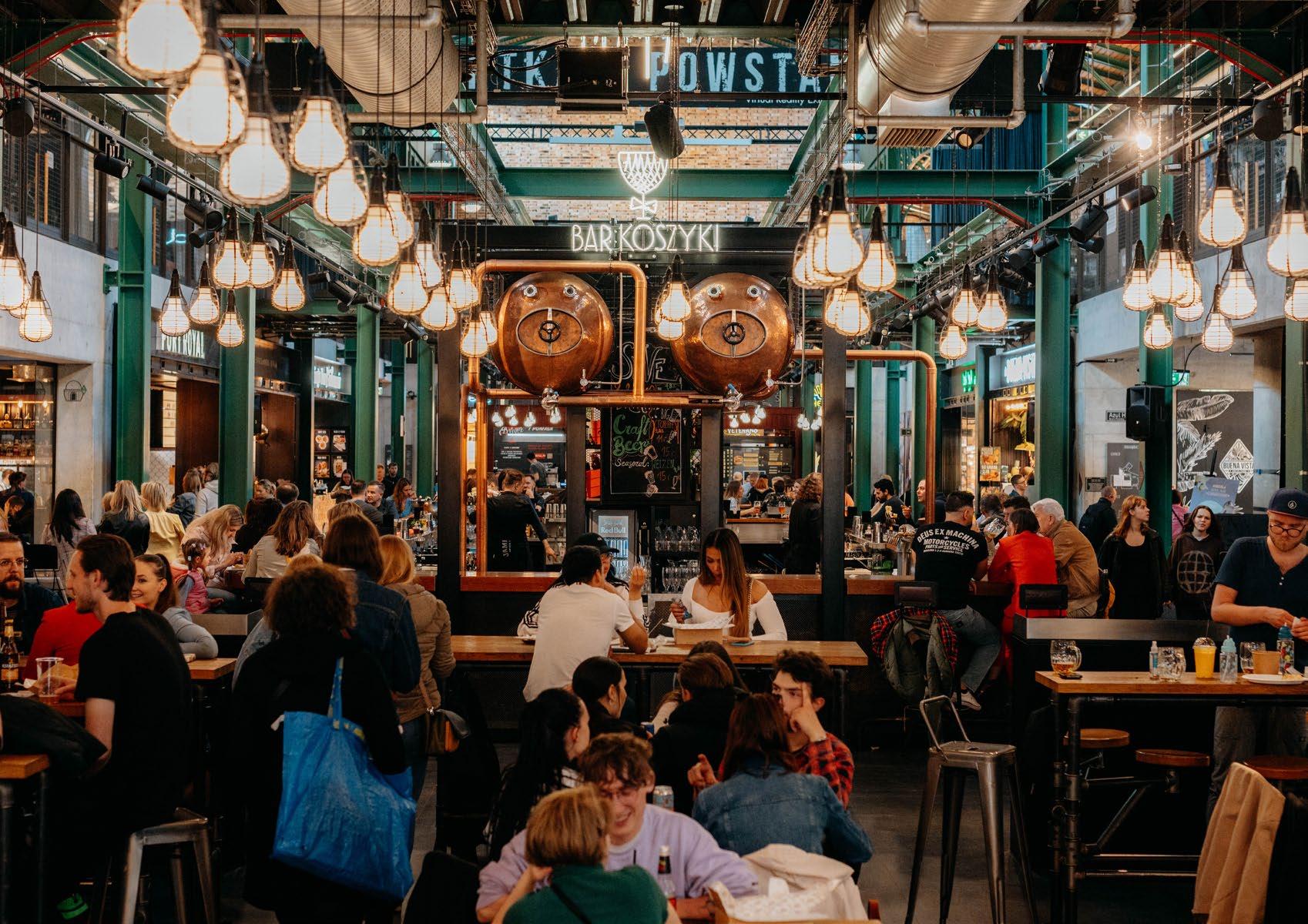
Occupying a large, brick-walled space in the historic Brewery Cellars, this impressive food hall is arguably the social centre of the Browary Warszawskie district (p. 25 ). With 11 different contemporary food concepts to choose fromranging from Silk & Spicy’s authentic Thai cuisine to Dziurka od Klucza’s new panozzo sandwich venture, ‘a’Panu occo?!’ - there are plenty of enticing options, including special breakfast and lunch offers. The focal points are the impressively long Central Bar - well-stocked with craft beer, fine wine, and cool cocktails courtesy of legendary local bartender Karim Bibars, and the small stage which hosts DJs, bands and a range of thematic events. Grab a seat at a communal table and get socialising. Q C - 7, ul. Haberbuscha i Schielego 2 (Browary Warszawskie), M Rondo Daszyńskiego, www.foodhallbrowary.pl. Open 12:00-22:00; Fri, Sat 12:00-24:00.
Anchoring Fabryka Norblina (p.26) is Food Town - a massive 3200sqm indoor gastronomy market featuring 23 diverse culinary concepts and no less than 6 atmospheric bars. Globetrot from Indian to Israeli to Cuban cuisine with ease within a showpiece of Warsaw’s most impressive urban revitalisation project to date. Buzzing with energy that spills out into the central courtyard, but also a covered passage in case of rain or cold, Food Town hosts events seven days a week - everything from stand-up to fashion shows to trade fairs. DJs and live bands regularly play both in the courtyards and at Gimlet Live Hall - a separate 290sqm performance space. Stop by any time for a quick bite, slow sit-down meal, craft cocktail or entertainment.QC/D-8, ul. Żelazna 51/53, MRondo Daszyńskiego, tel. (+48) 577 77 74 89, www.fabrykanorblina.pl/food-town-w-fabryce-norblina. Open Mon, Tue 08:00-22:00; Wed, Thu 08:00-23:00; Fri 08:00-01:00; Sat 09:00-01:00; Sun 09:00-22:00. TU6
The grimier twin number of Hala Mirowska - its adjacent neighbour to the west (p.25) - these two enormous brick buildings were built as market halls at the turn of the century. Miraculous survivors of WWII, while Mirowska quickly returned to its function as a vast indoor market where you can buy almost anything, Hala Gwardii served as a bus depot, eventually becoming a sports hall and home to the ‘Gwardia’ Policemen’s Sports Club - hence the name. Today it still features a boxing ring, small boxing museum and portraits of Polish boxing legends on the walls, but since 2017 has returned to a modern version of its roots - as an eclectic indoor food hall and hipster marketplace focused on local and organic products. The neglected exterior gives it an alternative edge, while inside you have dozens of the city’s top gastro concepts to choose from, plus coffee, alcohol and other drinks, as well as a market of local food products. Worth checking out each weekend for frequent food festivals and other very cool events.QE-6, Plac Żelaznej Bramy 1, MRondo ONZ, www.halagwardii.pl. Open Fri, Sat 09:00-01:00; Sun 10:00-21:30 only. 6
Hala Koszyki
This historic Art Nouveau market hall originally opened in 1906, but was renovated, redeveloped into a modern mixed-use facility full of bars, restaurants, bookstores and designer boutiques, and reopened in 2016. Smashingly popular, drop in to the ground floor dining area to choose from dozens of diverse options, ranging from top-class independent bistros - like Sobremesa Tapas Bar, Port Royal and Zachodni Brzeg - to some of Warsaw’s top name gastro brands, like Ćma and Warszawski
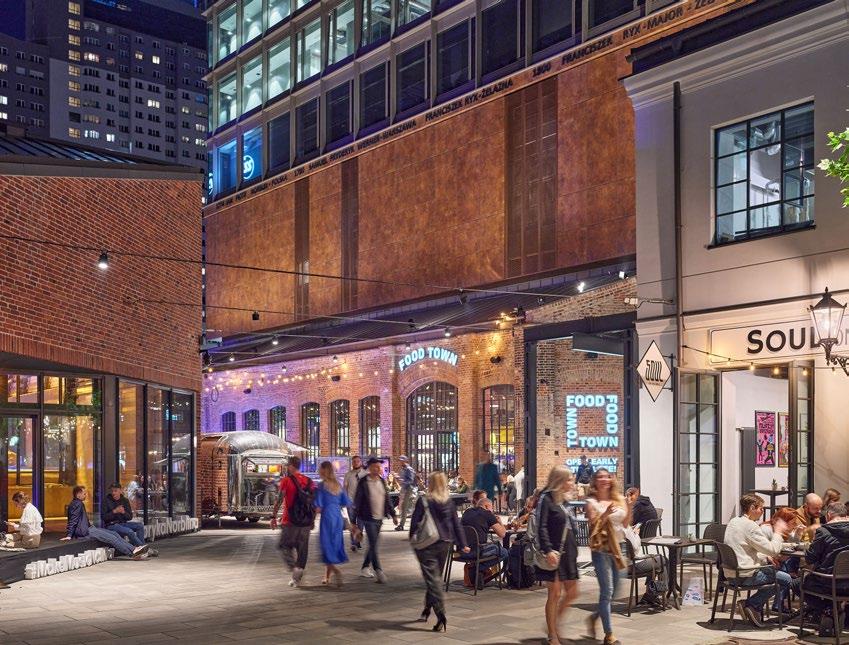
Sen. For something really different, make sure you check out UPPER DECK Wine & Cocktail Bar, a quirky space with a jazz soul on the top floor. Keep in mind that Hala Koszyki’s popularity means it can often be so packed that mere availability and access dictate which places inside you’re able to patronage. Even if you can’t find a table at any of the cool eateries and bars, we urge you to spend some time taking in this stunning market hall, which also features shops downstairs and space for cultural events upstairs. Don’t forget to look up, down and sideways as beautiful details abound!QF-10, ul. Koszykowa 63, MPolitechnika, www.koszyki.com. Open 08:00-01:00.
As Poland’s largest street food market, Warsaw’s Night Market is a vibrant culinary destination nestled within the former Central Railway Station platforms, and comes to life at the hour of dusk. Food enthusiasts from all over the world are enticed by this diverse array of local delicacies and a variety of international cuisines, and the fusion between Asian street life, the off-beat end of Berlin, and a touch of Warsaw’s unique flair, captivates visitors with a neon-lit ambiance, open-air dining, and a moonlit energy like no where else at that time of the day! Not only does it showcase the best street food vendors and a wide selection of drinks, but the whole affair is somehow rejuvinated by the distinct architecture of the old railway station that hosts it! With ample communal seating, well-stocked bars, their very own ‘music travel zone’, and a wine bar offering natural wines, Nocny Market is an irresistible experience. Additionally, guests can even indulge in the art of tattooing, with a different studio operating each week from Monday to Friday.QC-9, ul. Towarowa 3, MRondo Daszyńskiego. Open Thu 17:00-24:00; Fri, Sat 17:00-01:00; Sun 16:00-23:00; closed Mon, Tue, Wed. This seasonal event runs from mid-May until the end of September. TBE6
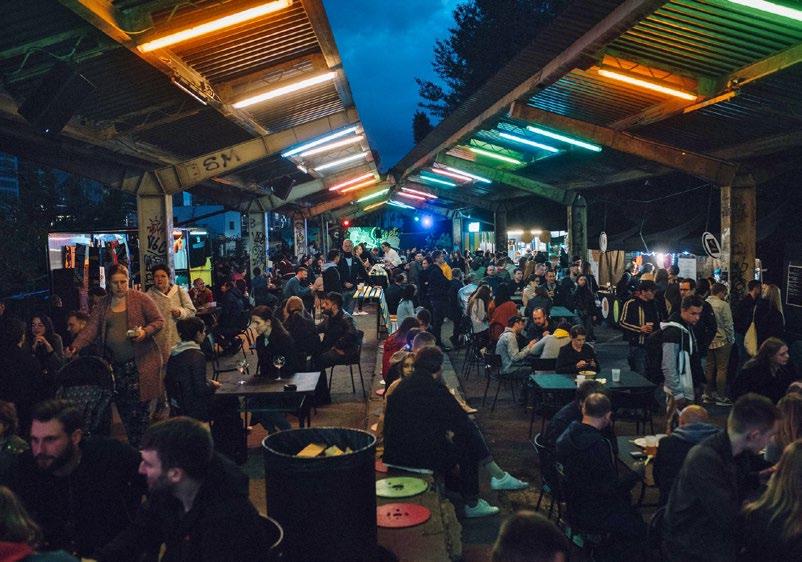
In Warsaw you’re never far from a great night out. If the weather’s warm, simply head to the river. Elsewhere skint students patronise the dive bars of The Pavilions (G-7, courtyards of ul. Nowy Świat 22/28); for a more mature alternative crowd seek out the artsy bars across the river in Praga (p.56); for a lark with the lads, hit the party strip on ul. Mazowiecka (F-6/7). In practice, bars will stay open well past their given hours if business is good, but also bolt the doors early if not. Visit our website to refine your search and see more reviews. Na zdrowie (cheers!)!
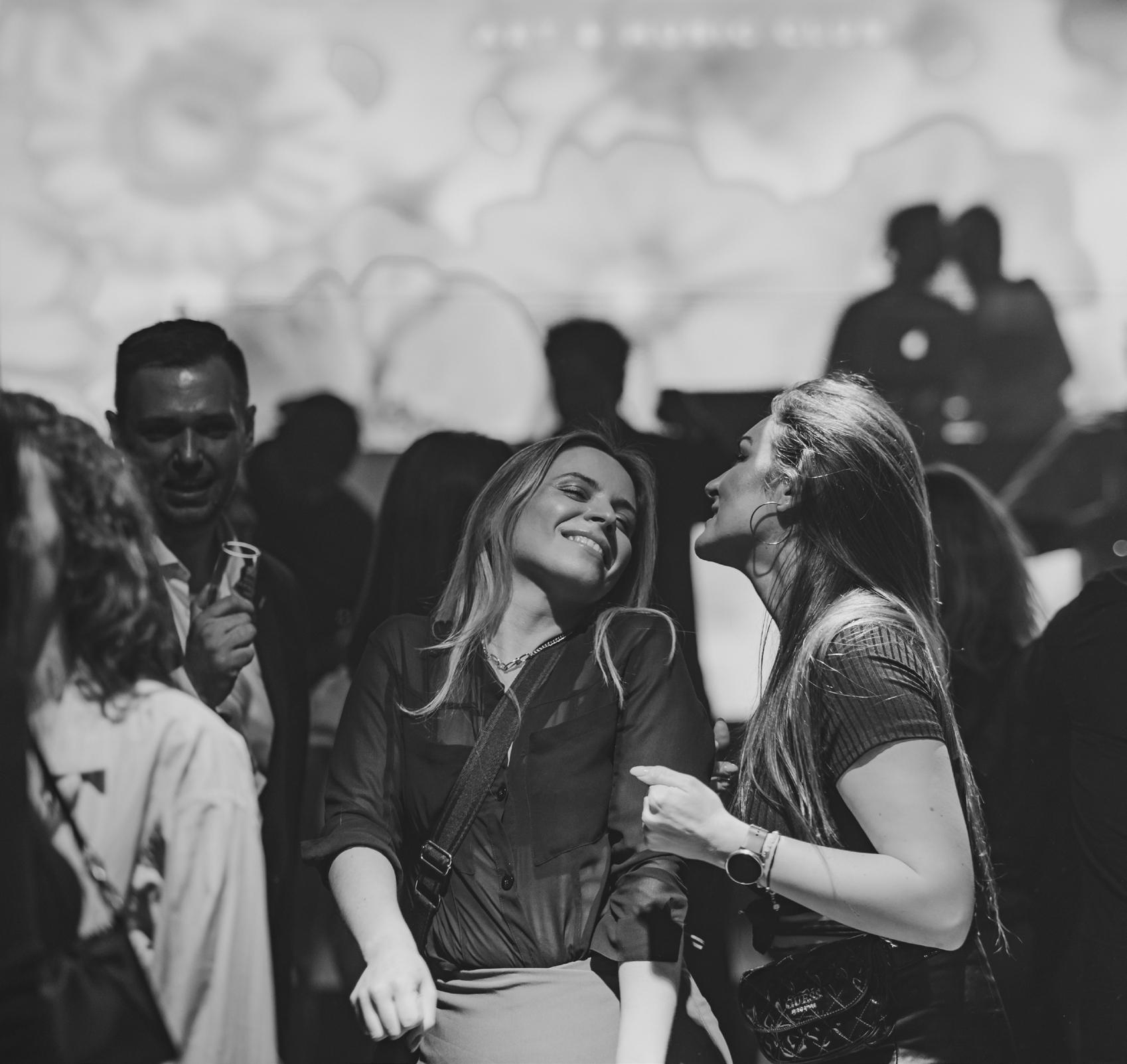
A living legend of the Polish capital that always has a finger on the pulse, Enklawa, located in the very heart of Warsaw, has spent the last 20 years hosting some of the city’s wildest cult dance parties, and, even today, it continues to provide a calendar of hotly-pursued events. Starting on Wednesdays and operating over four nights of the week, this classy premises exudes style and modernity, and its spacious rooms are brought to life every evening with the highest quality sound and lighting systems on offer. With a diverse music cycle that keeps both locals and visitors coming back to be in a space of non-stop good vibes, there’s a reason why Enklawa tops the list as one of Warsaw’s most popular clubs. Don’t believe the hype? Stop by some time and we’ll see you on the dance floor!
QF-6, ul. Mazowiecka 12, MNowy Świat-Uniwersytet, tel. (+48) 606 31 11 17, www.enklawa.com.
Open Wed, Thu 22:00-04:00; Fri, Sat 22:00-06:00; closed Mon, Tue, Sun. XUE
Perched on the 21st floor of Warsaw - The HUB, with an enchanting outdoor terrace and panoramic views of Warsaw’s city centre, The Roof offers a captivating setting for enjoying drinks, live music, a delightful dinner, or gathering with friends. At the bar, you’re invited to explore the a diverse selection of cocktails, and unique concoctions, all curated to reflect the essence of Warsaw and its extraordinary skyline. Boasting stylish interiors and a sophisticated atmosphere, everything is further enhanced by a range of acoustic performances and intimate cultural events that are hosted here. Whether you are seeking a memorable night out, a place to enjoy live music, or a spot to savour enticing cocktails while taking in the breathtaking views, this is the one place in Warsaw you need to experience!

Qul. Rondo Daszyńskiego 2, MRondo Daszyńskiego, tel. +48 881 97 41 44, www.theroofskybar.com Open 18:00-01:00. PUE6
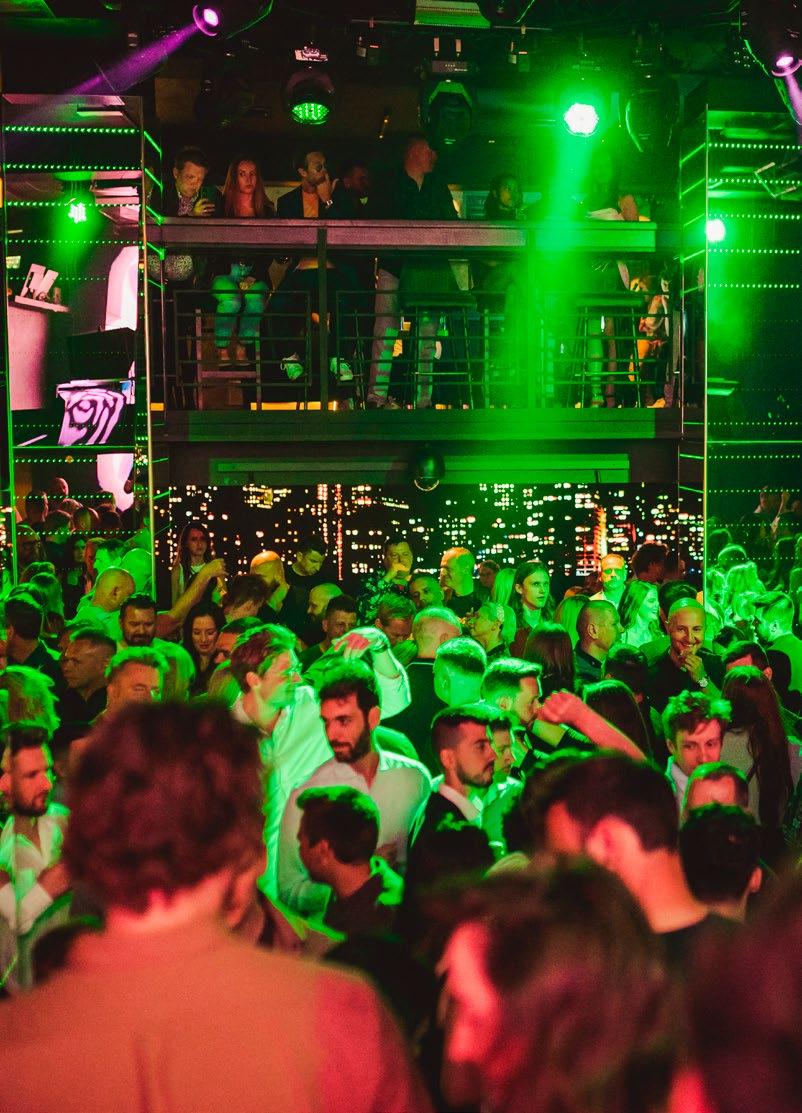
Cocktail Bar
If you’re eager to experience Polish vodka the right way (sip, don’t shoot!), go straight to the source. Located on the 3rd floor of the Polish Vodka Museum (p.57), this spectacular bar makes dozens of their own artisanal alcohol infusions - earl grey, beetroot and lemoncake are just a few of their surprising and constantly changing flavours. Sip them straight or in delicious modern cocktails inside the refined post-industrial interior that transports you back to Warsaw’s interwar glory days. The lovely seasonal terrace offers great views of the heart of Praga and they also host live music from time to time. Sounds pretty good to us! Na zdrowie!QK-2/3, Pl. Konesera 1, MDworzec Wileński, tel. (+48) 22 419 31 52, www.koneserbar.com/. Open 16:00-24:00; Fri, Sat 18:00-03:00; Sun 16:00-21:00; closed Mon. Subject to change. UB6
Cocktail Bar
A recent (and very exciting addition) to Warsaw’s Polish Vodka Museum (p.57), Bar Setki Powodów (Bar of 100 Reasons) guarantees musical feasts, dishes out of this world, drinks poured from the stick, and an almost-constant program of grooving live music - indie rock, jazz, hip hop, experimental, and much more! Furnished in a style reminiscent of the nearby Neon Museum (p.57), this Praga nightspot shows off a concise list of cocktails, flanked by a string of other ‘reasons’ to come here. Consume as you wish, and enjoy the small-but-punchy live music stage in the corner.QK-2/3, Pl. Konesera 1 (Centrum Praskie Koneser), MDworzec Wileński, tel. (+48) 511 69 29 63, www.muzeumpolskiejwodki.pl. Open Tue, Wed 12:00-22:00; Thu 12:00-24:00; Fri, Sat 12:00-02:00; Sun 12:00-21:00; closed Mon. UE
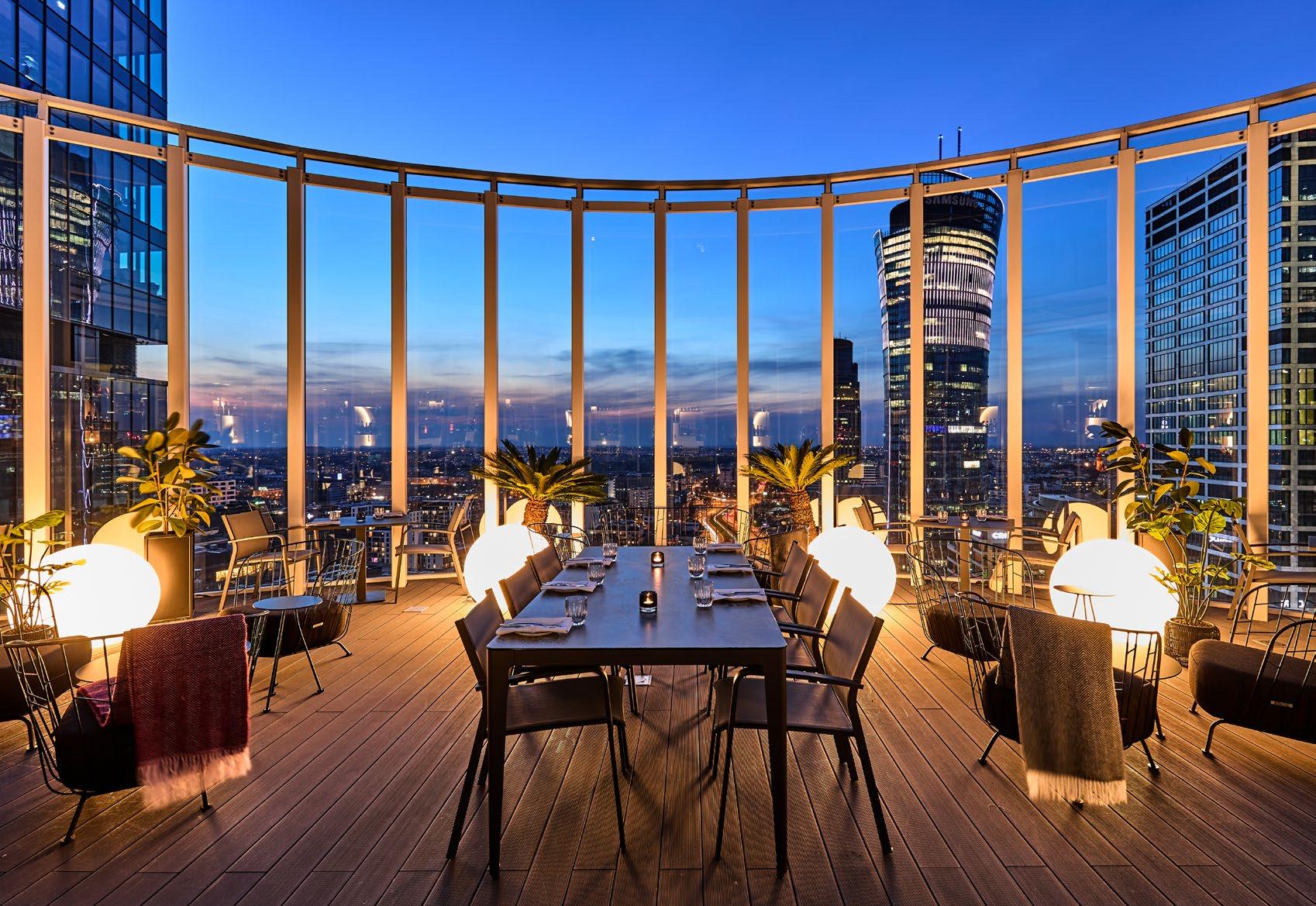
Cocktail Bar
Step onto this 19th-floor terrace bar for a breath of fresh air, and the views might just take it away. Nestled amongst the capital’s soaring skyscrapers, this open-air rooftop lounge features stylish furnishings, classy cocktails to match the scenery, plus occasional live music and DJs. It’s perfectly legal to get this high; in fact, you don’t even need to be a guest of the hip NYX Hotel to lose your head in the clouds. Note that the opening hours are somewhat dependent on the weather.QD/E-8, ul. Chmielna 71, MCentrum, tel. (+48) 22 346 29 00, www.leonardo-hotels.com/warsaw/ nyx-hotel-warsaw. Open 13:00-01:00. Operates seasonally from roughly May to mid-October. UBE6
Hulakula Club
Entertainment centre by both day and night, but once the kids are getting tucked in, Hulakula drops its family-friendly daytime disposition for party vibes. Although unusual, the idea to also use this huge entertainment centre as an after-hours hangout place with friends is absolutely brilliant and the fun is irrepressible as this place turns into a different kind of rumpus room. DJs often play weekends, check out their calendar for other concerts and events.QJ-4, ul. Jagiellońska 82B, MDworzec Wileński, tel. (+48) 669 00 10 01, www.hulakula.com.pl. Open 12:00-23:00; Wed 12:00-01:00; Thu 12:00-02:00; Fri 12:00-03:00; Sat 10:0003:00; Sun 10:00-23:00. PXTUBEWKi
Cocktail Bar
Relaxed & business-appropriate during the day, Myata’s sleek, modern interior full of plush love seats is the scene of weekend parties and awesome live music that absolutely no one in Warsaw can match in quite the same way. Backed up by an exquisite European food menu, high-quality shishas, and an enticing list of classic and original cocktails, the clientele skews sexy Slav, and it’s these regulars that make the place special. We all appreciate that crowd who would rather go hard than go home, and Myata is the beating heart of that very scene. The menu ranges from wasabi shrimp and teriyaki salmon to burgers and quesadillas, and they offer almost 300(!) flavours of shisha. There’s live music every Sunday from 21:00 and also Guinness on draught, but you’ll find most of the fairer sex sipping signature cocktails. If you were hoping Warsaw would be a bit more Wild, Wild East, check this place out.
QG-8, ul. Żurawia 6, MCentrum, tel. (+48) 534 72 73 25, www.myatawarszawa.tilda.ws. Open 12:00-01:00; Fri 12:00-04:00; Sat 16:00-04:00; Sun 16:00-01:00.


Lurking about in the centre of Warsaw’s urban jungle, the beast that is Pepper Night adds a dose of spiciness to the untamed nightlife of the Polish capital. The unique atmosphere of its sophisticated interior coupled with a stunning year-round garden is perfectly complemented by a cocktail bar of the highest calibre. It’s not the only thing that will drive your senses and inhibitions to the wildest and most-euphoric heights. Throughout the night, a menu of indecently delicious food is in constant operation (kitchen is open until 01:00) - something of a ‘forbidden fruit’ that other establishments of such measure dare not touch! The impressive kitchen, operated by one of Warsaw’s highest-level gastro team, is open literally all night, so you need not worry about going without! Until the early hours, Pepper Night will awaken your body with the strength of the beat - the best music straight from the DJ console. If your body can’t handle such uncontrollable movements, your stomach and palate are sure to be won over solely by the Pepper Night restaurant, operating 12:00 - 24:00 from Sunday to Thursday and Friday to Sat from 17:00 ‘til the last guest. The restaurant kichen is open on weekend till 24:00.QF-9, ul. Nowogrodzka 47A, MCentrum, tel. (+48) 730 06 80 68, www.peppernight.pl. Open Fri, Sat 17:00-04:00 only.
Patenting the ‘future of drinking’ themselves, The Alchemist’s ‘Beer Wall’ was the first of its kind in Europe. With a handy ‘Beer Wall’ card, you can pour yourself as many drinks as you like from the 8 taps on the wall, typically offering local craft beer and prosecco. Futuristic guzzling gizmos aside, however, the signature cocktails that shimmer, swirl and smoke are where the Alchemist earns its name, and their award-winning food (Gault & Millau 2020) makes this venue a must-visit. On the card of international eats are excellent Polish dishes, delicious seafood, steaks, burgers and more. If all this wasn’t enough, in the summer it’s the spacious terrace that draws the locals to lounge around for hours enjoying The Alchemist’s experimentation. Fun fact: the Warsaw Metropolitan building where this bar is housed was designed by famed British architect Norman Foster. A touch of modernity added to the Old Town area, and a place that we love chilling in for hours on end! Second location (without the Beer Wall) at ul. Grzybowska 5A (p.81).QF-5, Pl. Piłsudskiego 3, MRatusz Arsenał, tel. (+48) 22 628 00 23, www.thealchemist.pl. Open 12:0023:00; Fri, Sat 12:00-24:00. TU6
If you’re in Warsaw and simply have your mind set on going to a strip club, we advise you to stick to our recommendations, which are vetted and centrally-located. When it comes to these types of establishments, we’ve heard reports of 8,000zł being spent willingly in one club listed here, and another of 8,000 sterling being spent unwillingly in one we don’t list. As ever, we urge you to be mindful, mind your manners, deal only in cash, don’t let anyone order drinks for you, and generally keep your wits about you. A good rule of thumb is to avoid street solicitation of any kind, especially if it comes in the form of a sweet girl with an umbrella inviting you to a club for a ‘drink’; also don’t get roped into buying a drink unless you know its price and can afford it. If you’re going to the club of your choice by taxi, make sure the driver takes you to the correct club, and not one miles away with whom they have a partnership. Employ good common sense and we’re confident you’ll have a night to remember, not regret.

This smart gentlemen’s club, located in a chunky communist era building on al. Solidarności, has sustained their success with a classy approach to showing off the female form in luxurious surroundings. Their reputation in this market has even gone international, with influential website AskMen.com voting them the ‘Best Strip Club in the World’ back in 2013. Three floors covering over 800m2, four bars, three VIP rooms, an in-house ATM and 57 sizzling hot women make Playhouse THE place to visit for the discerning gent with a penchant for the erotic. Payment methods accepted: cash, card, Bitcoin and Paypal.QD-5, Al. Solidarności 82A, MRatusz Arsenał, www.playhouse.pl. Open 21:0005:00. X
The largest of all the strip clubs in Warsaw at a size of 1200m2. Sogo is ridiculously easy to get to from any part of Warsaw. Simply head to the beginning of ul. Nowy Świat (G-8, at the Palm Tree) and you’ll see the brightly-lit building in the distance. The place consists of three levels: the main hall containing two bars and hundreds of seats, the VIP rooms, and even conference facilities. Should you want more privacy, the Gold Club option provides private rooms with a dedicated lounge bar and washroom facilities. The club has their customers’ desires in mind and will stay open longer if you feel you simply cannot leave by 05:00.QH-7/8, Al. Jerozolimskie 6, MCentrum, www.sogoclub.pl. Open 20:00-05:00. X
Warsaw offers a wide diversity of shopping experiences, from old school markets to luxury boutiques (primarily along ul. Nowy Świat and ul. Mokotowska: G-7, H-8/9) to some of Central Europe’s most modern shopping malls. For visitors, it’s an opportunity to shop exclusive designer brands, catch bargains on known commodities or find forgotten treasures. Happy hunting!

This gorgeous gallery specialises in luxury handcrafted jewellery of the amber variety, but crystal, silver and gold items can be purchased here too. This is the location of the largest and oldest amber dealer in the city, a family run business going back to 1988, proudly selling amber of Polish origin - certified by the International Amber Association. Even heads of State and royalty have been spotted procuring presents here, from Bill Clinton to Japanese princesses (whose thank you letters you can see inside)! Choose from pieces by Polish artisans and top designers, plus high quality jewellery made with other precious stones. QF-4, Rynek Starego Miasta 9/11/13, MRatusz Arsenał, tel. (+48) 22 831 69 61, www.warsawamber.pl. Open 10:00-19:00; Sun 10:00-17:00.
A phenomenally successful Polish jewellery chain where customers can select their own components to create a unique and personalised piece. The range continues to grow, with the original luxury charm bracelet still the biggest seller. Choose a bracelet type and any number of simple silver or gold plated charms in a variety of shapes, then have it hand-engraved with whatever or whoever means a lot to you. A ‘musthave’ item amongst local celebs and fashionistas. Also at ul. Francuska 27 (L-7), Westfield Arkadia (B/C-2), Galeria Mokotów and Sadyba Best Mall QH-9, ul. Mokotowska 63, MCentrum, tel. (+48) 506 19 08 97, www.lilouparis.com. Open 11:00-19:00; Sat 11:00-18:00; Sun 11:00-16:00*.
A high-class location for a high-class boutique. Forget shoddy souvenirs, this is where you’ll find some of the best items Polish and international design has to offer - all of which are completely unique to HE Concept Store. Enter the ‘Europejski Boutiques’ zone of Raffles Hotel Europejski from Krakowskie Przedmieście and descend the mysterious spiral stairs into what opens up into an exhibition space of chic and sleek design - artwork, high-quality handmade items, accessories, gadgets, and top of the line fashion. There’s even a wine bar where you can buy, and even sample signature wines on the spot. All told, it’s a welcome gift to anyone with a keen eye on the latest trends.QG-5, ul. Krakowskie Przedmieście 13, MNowy Świat-Uniwersytet, tel. (+48) 22 255 99 65, www.heconceptstore.pl. Open 11:00-19:00; closed Sun.
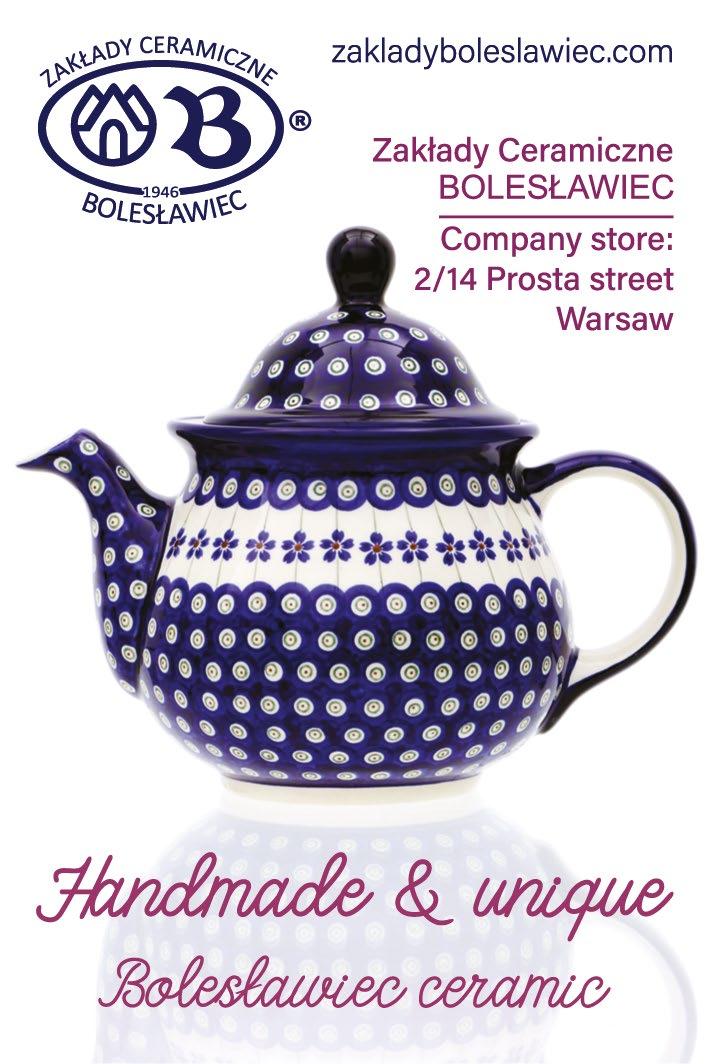
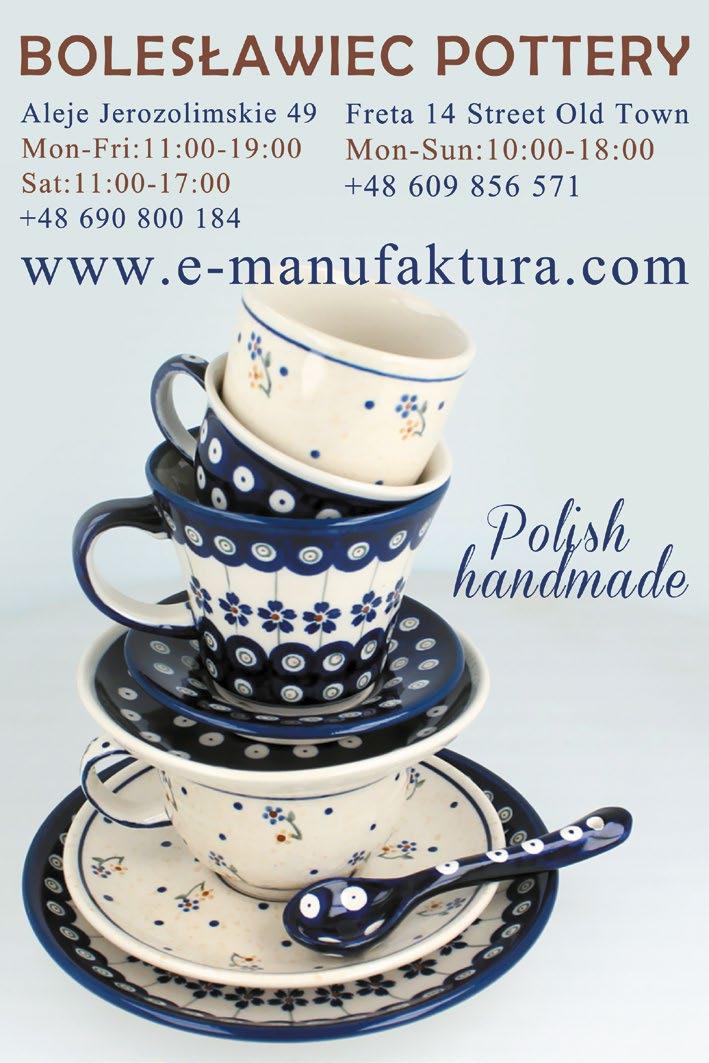
This boutique certainly needs no introduction. Even if you know nothing of fashion, you’ve no doubt heard of Victoria’s Secret, the brand that has become synonymous with stylish lingerie and glitzy angel-winged fashion shows. Warsaw, it seems, is delighted to have Poland’s only VS stores, and although previously their only boutiques in the city were on the smaller scale of grand, focusing mainly on accessories & perfumes, the new store in the city centre’s Złote Tarasy shopping mall is much bigger than before (now including Victoria’s Secret PINK), but the opening of Poland’s first VS flagship store in Westfield Arkadia Shopping Mall, with the full selection of clothing, including their lingerie, perfumes and accessories has gone down well with fashion bloggers and Varsovians alike! In Arkadia, you can’t miss it - it’s located right at the front entrance!QC-2, Al. Jana Pawła II 82 (Arkadia), MDworzec Gdański, tel. (+48) 22 323 72 33, www. victoriassecret.pl. Open 10:00-22:00; Sun 10:00-21:00*.
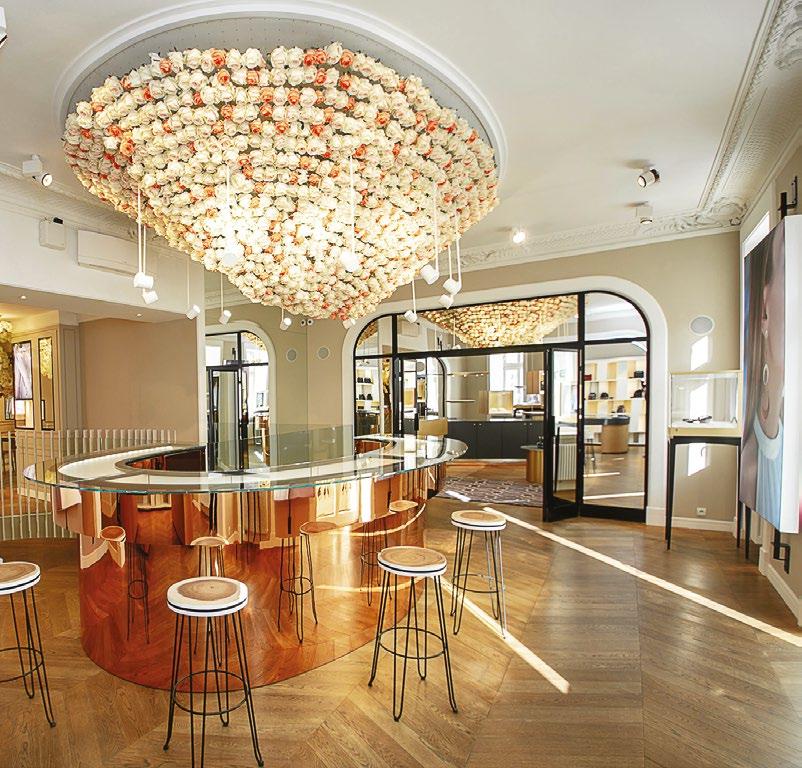
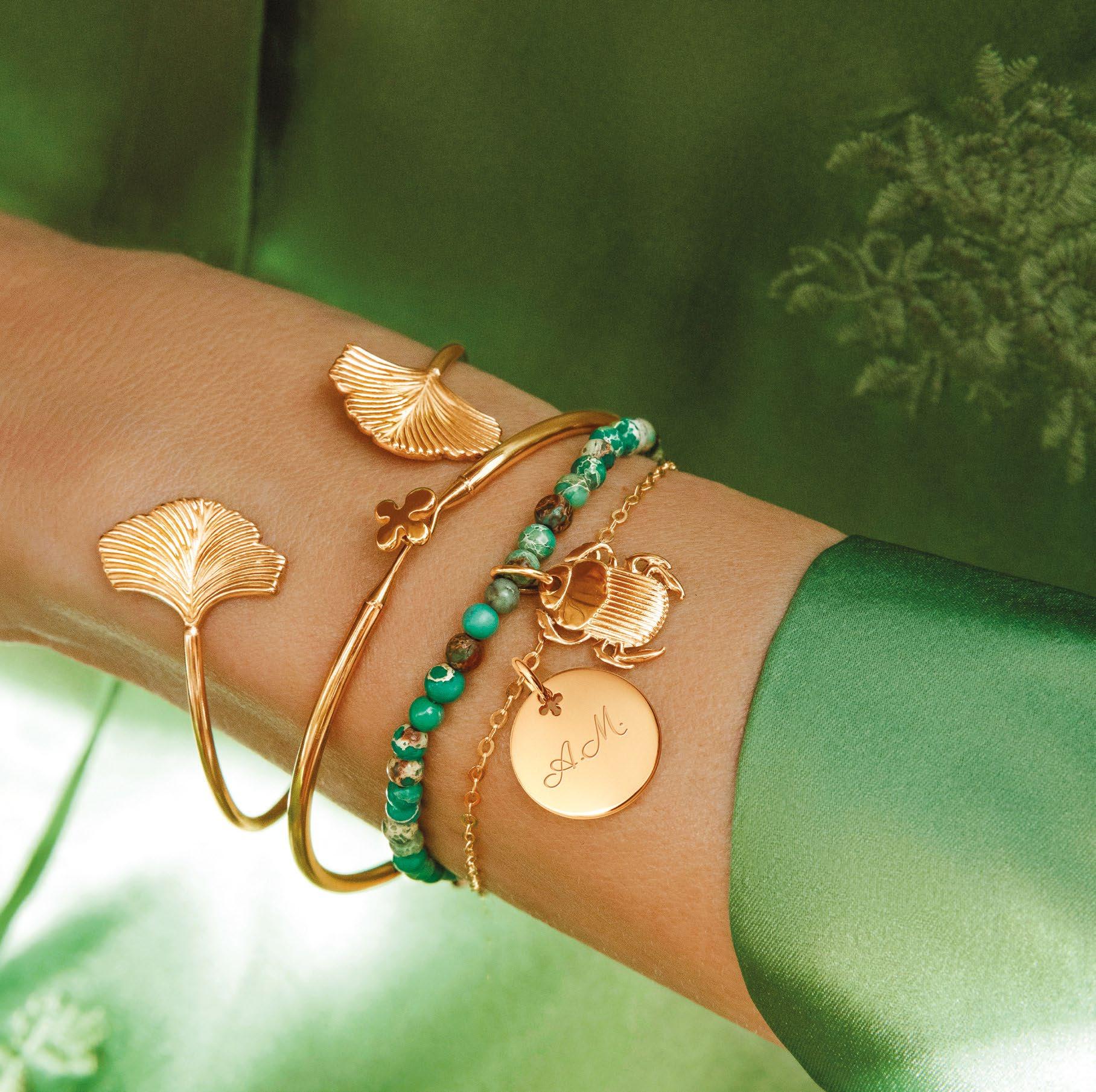
E-Manufaktura
It’s sometimes hard to find that perfect gift from Poland to take back home with you. We understand the problem, and it may be the case you get home, only to regret not having bought that sweet little tea cup you had your eye on. Now this is why we whole heartedly recommend E-Manufaktura, which is not only a shop in Warsaw, but also an online shop
for you to look through an extensive catalogue in the comfort of your home. From egg cups, plates, bowls, and all other kitchenware you can think of, you’ll find it here! The famous hand-painted ceramics, Bolesławiec, make up the core of what’s on offer. It doesn’t get more Polish than this. A must use service. QF-3, ul. Freta 14, MRatusz Arsenał, tel. (+48) 22 636 06 84, www.e-manufaktura.com. Open 10:00-18:00.
Of all Polish gifts, none are as visually exciting as Bolesławiec pottery. At Pomaluj.art you not only get the chance to buy gifts, but you can join workshops (offered Tue-Sat 14:00-20:00) to make and paint anything you want in the studio! The staff speak English and will teach you the history of Bolesławiec pottery during your session! Show the Warsaw In Your Pocket guide or map to receive an 8% discount!QF-8, Al. Jerozolimskie 49, MCentrum, tel. (+48) 690 80 01 84, www.pomaluj.art. Open 11:00-19:00; closed Sun.
Smart Kids Store is an extension of the innovative educational center Smart Kids Planet (p.73), and a one-stop-shop that offers a wide range of products and services related to children’s education and development. The wide selection of educational toys and games, include interactive and STEMbased toys, puzzles, and games that are designed to support children’s cognitive development and encourage problem-solving and critical thinking skills. The shop also offers a variety of art and craft supplies, which are perfect for encouraging children’s creativity and imagination. You can also find wide range of educational books, workbooks, and activity books, including storybooks, picture books, and non-fiction books in various languages, which are perfect for encouraging children to read and develop their language skills. Additionally, there’s variety of educational software and apps, which can be used to supplement children’s learning at home!QD-8, ul. Żelazna 51/53 (Fabryka Norblina), MRondo ONZ, tel. (+48) 727 77 08 80, www.smartkidsplanet.pl/. Open 11:00-20:00; Sat, Sun 10:00-20:00. UL
The official store of Bolesławiec in Warsaw is an ideal place for buying traditional, high-quality, hand-decorated ceramics. A wide wide selection of dishes, accessories and decorative elements can be found here, thay are both as beautiful as they are highly-durable and functional. Each element is handformed and then decorated with a unique stamping technique. Attention to detail, the characteristic

shade of cobalt, and deep roots in tradition have made Bolesławiec ceramics known not only in Poland but all over the world. This particular store is located in the center of Warsaw, at the Rondo ONZ metro station, 800m from the central station and the Palace of Culture and Science. Also in Wrocław QD-7, ul. Prosta 2/14, MRondo ONZ, tel. (+48) 22 624 84 08, www.zakladyboleslawiec.com. Open 10:00-18:00; Sat 09:00-16:00; closed Sun.
Once a thrice-weekly event in Mokotów, this popular organic food and produce market has found a permanent, daily address inside the newly revamped Norblin Factory. A lovely space packed with outstanding food products that are not only certified organice, ecological and health-conscious, but also locally-produced as well, you can bet on a daily selection of fresh fish, meats, dairy, fruits and veg, baked goods, oils, cosmetics and more. If you have the budget, food shopping doesn’t get any more appealing than this. There’s also an organice bistro on-site where you can a healthy breakfast, lunch or a glass of natural wine.QC-7, ul. Żelazna
51/53, MRondo ONZ, tel. (+48) 22 508 71 74 45, www. biobazar.org.pl. Open 10:00-18:00; Sat 07:30-16:00; closed Mon, Sun.
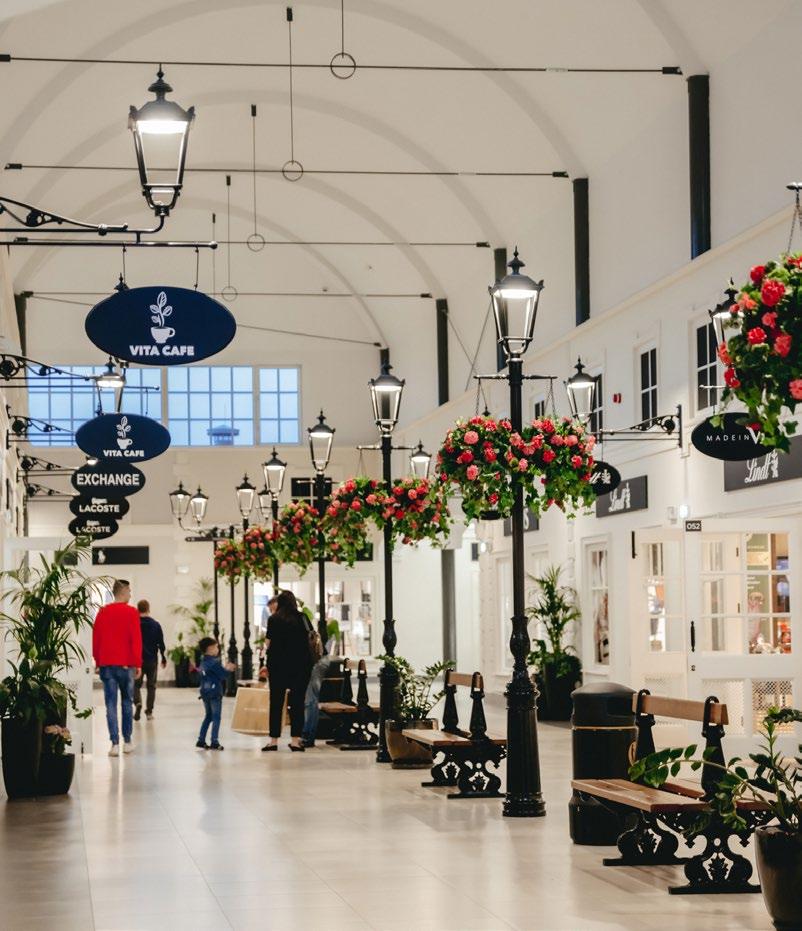
Set inside an impressive collection of buildings evoking the Baroque style of Warsaw’s Old Town, this is a premium outlet mall, with the interior specifically made to make you feel like you’re walking through a fashion high street. Here you’ll find discounts ranging from 30-70% off on brands like Adidas, Armani, Boss, Calvin Klein, Coccinelle, Desigual, Gant, Guess, Furla, KARL LAGERFELD, Levi’s, Liu Jo, Luisa Spagnoli, Michael Kors, Nike, Polo Ralph Lauren, Timberland, Tommy Hilfiger and many more. Found just 30mins from Warsaw’s city centre, and 20mins from Warsaw Chopin Airport, it’s easily reached by car and public transport (for the latter get off at ‘Energetyczna 01’ and use a zone 2 ticket).Qul. Puławska 42E (Piaseczno), MWilanowska, tel. (+48) 22 737 31 15, www.designeroutletwarszawa.pl. Open 10:00-22:00; Sun 10:00-21:00*. TU
Klif has been attracting fashion lovers for over 20 years, with locations across Poland. If you think you’ve seen this all before, however, you’re mistaken. This is the capital, after all, and the quality of brands is exceptionally high, not to mention the stunning showrooms inside. Shop top tags like MaxMara, Elisabetta Franchi, PennyBlack, Michael Kors, Karl Lagerfeld and DM Moda, as well as respected mainstream brands like Olsen and S’Portofino. Another draw is the convenient, easy to get to location - roll in by tram, bus or car. What’s more, anyone can use the services of the pro stylists at FASHION STUDIO, and this is also the only shopping centre to have a concierge point.QB-4, ul. Okopowa 58/72, MRondo Daszyńskiego, tel. (+48) 535 41 14 58, www.klif.pl. Open 09:00-21:00; Sun 10:00-20:00*. Eurospar open Mon-Sat 08:30-22:00; Sun 09:00-20:00*.
This massive outlet mall is closer than you think! Save up to 70% on premium name brands like Adidas, Nike, Ecco, Medicine, Guess, Under Armour, Pepe Jeans, Marc O’Polo, Converse, Vans, Puma, Tefal, Tommy Hilfiger, Smyk, 4F, RTV Euro AGD and more. To get there take Metro M2 from ‘Świętokrzyska’ to ‘Bró dno’ and then change to tram no. 1, 3, 4 or 25 and get off at ‘Toruńska’ or ‘Annopol’. Check jakdojade.pl for live timetables. Q ul. Annopol 2 (Białołęka), tel. (+48) 22 441 90 00, www.annopol.factory.pl. Open 10:00-21:00; Sun 10:00-20:00*. 6
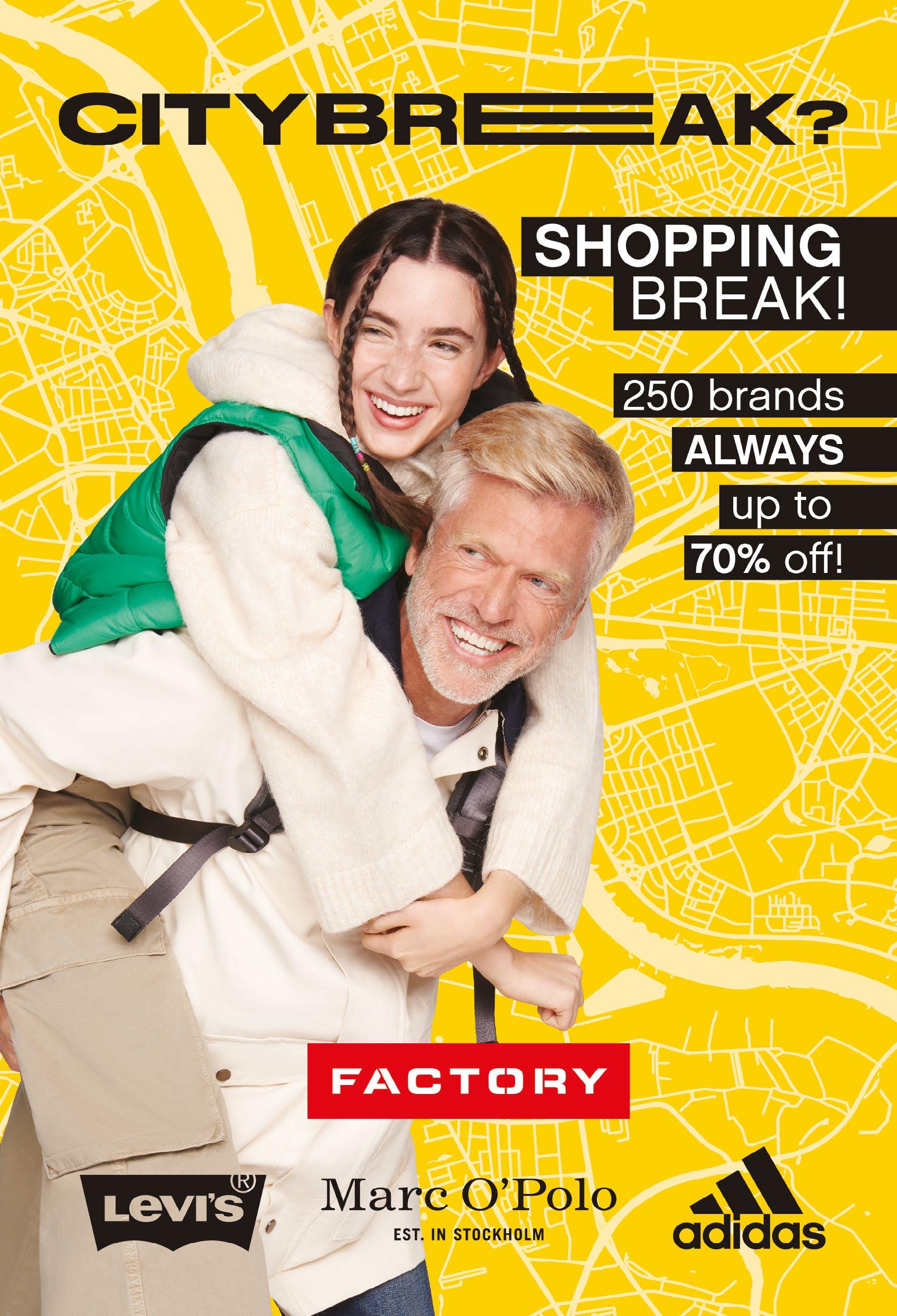
This outlet shopping mall southwest of the city centre is preoccupied with fashion, offering top brand names at 30-70% discounts over regular rack rates. Recognisable brands include Desigual, Adidas, Etam, Gant, ASICS, Smyk, Empik, Rossmann, Medicine, New Balance, Calvin Klein, Wittchen, Lacoste, Lavard, and many more. One of the only such outlet centres in Europe, you can get there quickly by car via the S8 route or Nowolazurowa street. You can also reach it about 30mins by train or bus; check jakdojade.pl for accurate, up-to-the-minute connections.QPl. Czerwca 1976r. 6 (Ursus), tel. (+48) 22 478 22 70, www.ursus. factory.pl. Open 10:00-21:00; Sun 10:00-20:00*.
Found in the north-western district of Bielany, and easily accessible via metro to the final stop, ‘Metro Młociny Bus, Tram & Metro Station,’ this is one of Warsaw’s newest, most impressive shopping malls. With over 200 stores (including Poland’s first Primark), a ‘meet and eat’
In its effort to get people out of shopping malls and into churches, the Polish government has imposed regulations preventing most businesses from opening their doors on Sundays. Of course, there are exceptions, including 7 special Sundays when shops are open each year, and the rules don’t apply to restaurants, bars, cafes, pharmacies, gas stations, kiosks, bakeries, open-air markets, souvenir shops and anywhere the business owner is personally working behind the counter. When you see an asterisk* after the Sunday hours in our guide, that means the venue is closed on Sundays, aside from the following ‘shopping Sundays’: August 27.
dining area containing food and drink venues (open Sundays), a super-modern cinema complex, gym and MK Bowling alley (also all open on Sundays, p.71). The topping on the cake is the impressive rooftop terrace where you can enjoy various cultural events such as dances, shows and concerts.Qul. Zgrupowania AK Kampinos 15, MMłociny, www.galeriamlociny.pl. Open 10:00-22:00; Sun 10:00-21:00*.
Opened in late 2017, Galeria Północna is Northern Warsaw’s state-of-the-art shopping complex, one of the most modern centres of its kind in the city. Covering an area of 64,000m2, here you can browse through over 200 shops, boutiques, and service outlets The variety of businesses here features well-known domestic and international brands such as H&M, Sephora, Tatuum, Smyk, and many more. On the gastro end of things, Galeria Północna also features a variety of restaurants and cafes, including popular names like McDonald’s, Starbucks, Pizza Hut, and Green Caffe Nero. The Food Court, located on the second floor, offers guests direct access to their fantastic rooftop garden (p.72), while other restaurants such as Cukiernia Sowa, Shizen Sushi, and Grycan are placed strategically elsewhere in the shopping centre. At its very centre, Galeria Północna is also home to the largest sculpture in Poland - Wir - created using an original method of inflating FiDU sheet metal. This is the creation of Oskar Zięta, one of Poland’s best-known and most respected designers. Shopping and dining aside, Galeria Północna also features a range of leisure activities. Visitors can enjoy Cinema City, with 11 screening rooms, the Fikołki Playroom for children, the Egurrola Dance Studio for dance enthusiasts, and the Zdrofit fitness club for adults looking to stay healthy and fit.Qul. Światowida 17, MMłociny, www.galeriapolnocna.pl. Open 10:00-22:00; Sun 10:00-21:00. TULF

A fantastic shopping and entertainment centre in the Wola district, just west of Warsaw’s Old Town and City Centre, with more than 200 stores and service points on offer. Among these, you’ll find an Auchan hypermarket, Multikino, as well as H&M, Zara, Etam, Kazar, Homla, Tatuum, and even IKEA! Other services and amenities including a 3,000-capacity FREE parking area, a petrol station, an urban bike station, and the possibility of renting cargo bikes and charging electric cars. We at In Your Pocket are particularly big fans of the FREE Coworking zone, located next to the entrance to Zdrofit. Get to Wola Park by bus 167, 171, 190, 249, 523 and by metro to M2-Ulrychów.Qul. Górczewska 124, MKsięcia Janusza, tel. (+48) 22 533 40 00, www.wolapark.pl. Open 10:00-22:00; Sun 10:00-20:00*. TU

Print space is finite, but the internet is a vast, vacuous void we’ve devoted our lives to filling. If the venue you’re looking for isn’t listed here, you’ll likely find it amongst the hundreds of places in Warsaw listed on our website: warsaw.inyourpocket.com
